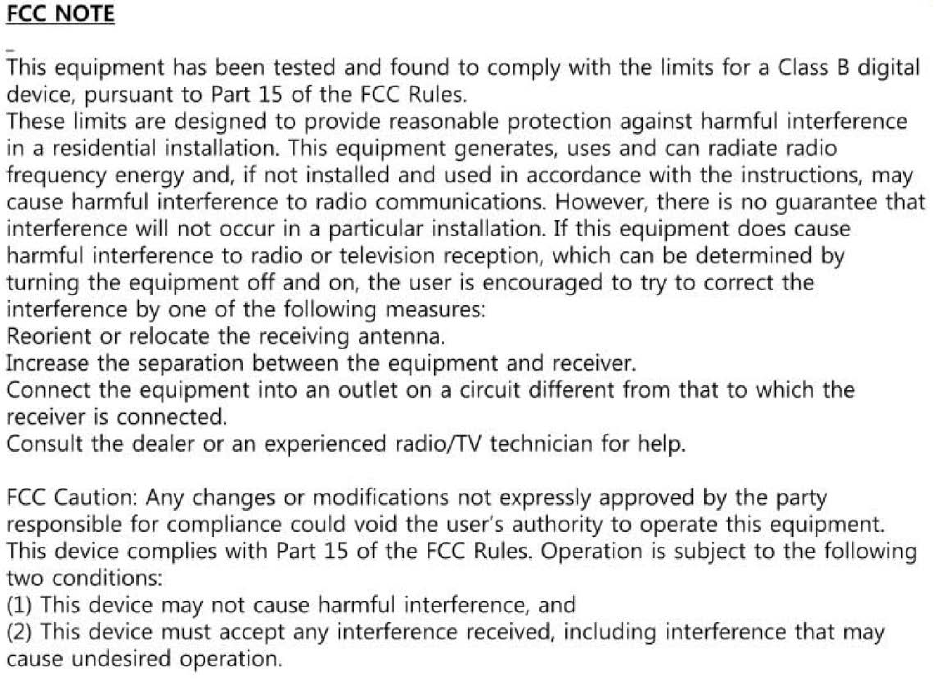Shin Heung Precision STM-8800 Industrial PDA User Manual
Shin Heung Precision Co., Ltd. Industrial PDA
User Manual
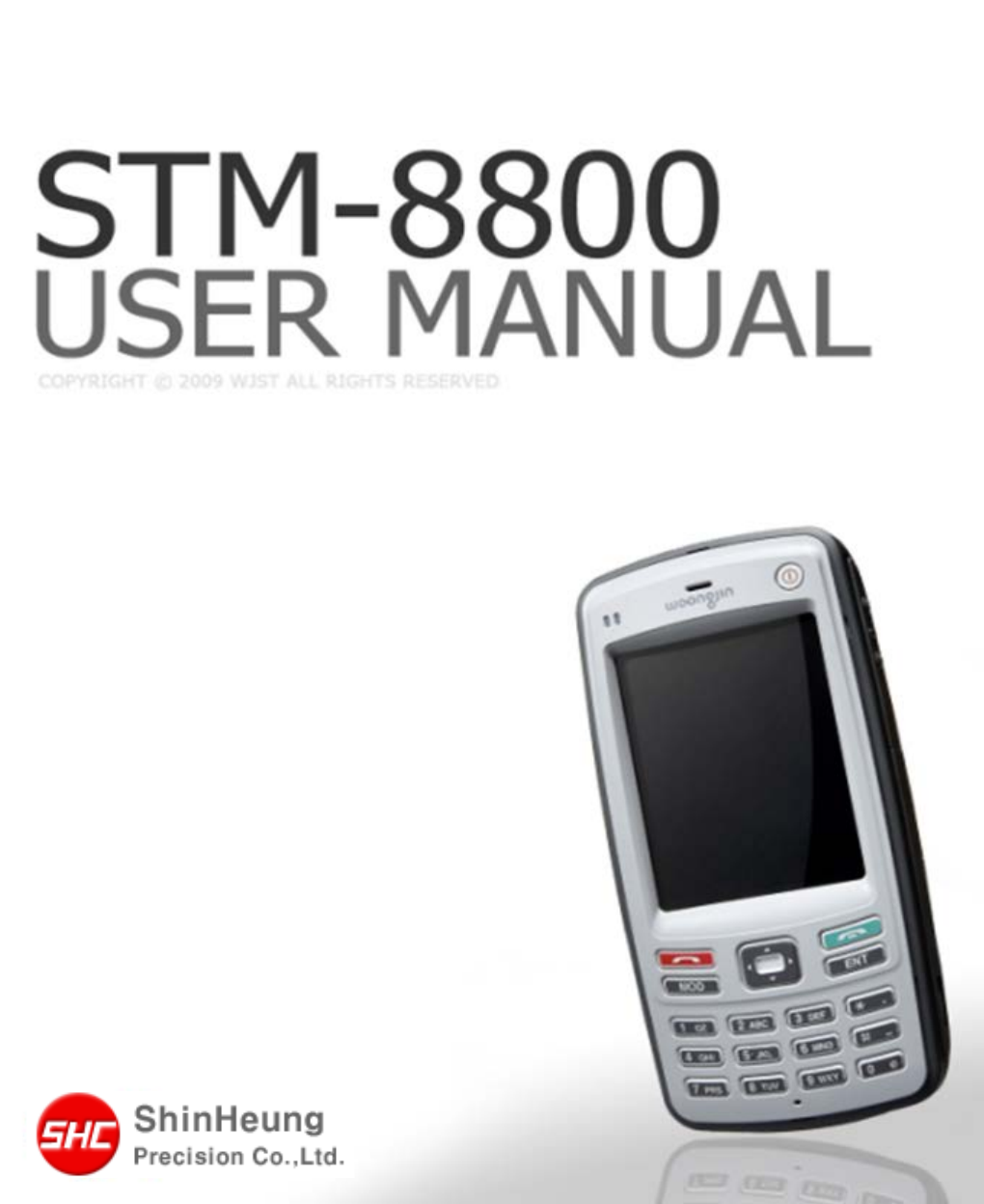
STM-8800 User Manual 2009 Copyright © Shinheung Precision Co., Ltd

STM-8800 User Manual 2009 Copyright © Shinheung Precision Co., Ltd
- Table of Contents -
Copyright ----------------------------------------------------------------------------------------------------------4
Proper Handling of the device ------------------------------------------------------------------------------- 5
I. Before Using the device ---------------------------------------------------------------------------------- 7
1. Product Configuration -------------------------------------------------------------------------------------- 8
2. Specifications (Device/Cradle) --------------------------------------------------------------------------- 9
3. Charging the Battery -------------------------------------------------------------------------------------- 11
4. Initialization -------------------------------------------------------------------------------------------------- 12
II. Getting Started -------------------------------------------------------------------------------------------- 13
1. Power On --------------------------------------------------------------------------------------------------- 14
2. How to use the Stylus Pen ------------------------------------------------------------------------------ 16
3. Screen Description ---------------------------------------------------------------------------------------- 17
4. Configuring the device ----------------------------------------------------------------------------------- 19
5. Locking and unlocking the device --------------------------------------------------------------------- 25
6. Manage battery life --------------------------------------------------------------------------------------- 26
III. Use File Explorer ---------------------------------------------------------------------------------------- 28
1. Run and use the File Explorer ------------------------------------------------------------------------- 29
IV. Terminal settings, how to optimize … -------------------------------------------------------------- 30
1. Background image -------------------------------------------------------------------------------------- 31
2. Brightness ------------------------------------------------------------------------------------------------ 33
3. Volume and Sounds ------------------------------------------------------------------------------------ 34
4. Screen ----------------------------------------------------------------------------------------------------- 36
5. Bluetooth -------------------------------------------------------------------------------------------------- 37
6. Scanner ---------------------------------------------------------------------------------------------------- 44
7. Pictures and Videos ------------------------------------------------------------------------------------ 45

STM-8800 User Manual 2009 Copyright © Shinheung Precision Co., Ltd
- Table of Contents -
V. Using the Phone Application -------------------------------------------------------------------------- 49
1. Running the Phone Application ------------------------------------------------------------------------
- 50
2. Phone Application screen ------------------------------------------------------------------------------
-- 51
3. Making/Accepting Calls ---------------------------------------------------------------------------------
-- 52
4. Telephone Number -------------------------------------------------------------------------------------
--- 53
5. Entering Phone numbers in the Directory ------------------------------------------------------------
55
6. Phone Directory – Viewing/Deleting Entries ---------------------------------------------------------
57
7. Recent Call List Management --------------------------------------------------------------------------
- 58
8. Message Management ----------------------------------------------------------------------------------
- 59
9. Compose Message --------------------------------------------------------------------------------------
-- 60
10. Preferences ----------------------------------------------------------------------------------------------
--- 61
VI. PC connection -------------------------------------------------------------------------------------------- 62
1. Microsoft ActiveSync installation -----------------------------------------------------------------------
63
2. Connect to a PC to install the program ---------------------------------------------------------------
65
VII. Appendix --------------------------------------------------------------------------------------------------- 66
1. Troubleshooting ----------------------------------------------------------------------------------------
---- 67
2. Initialize to factory default ------------------------------------------------------------------------------
-- 71
3. Terminal maintenance ----------------------------------------------------------------------------------
-- 72
4. Product specifications -----------------------------------------------------------------------------------
- 73
5. Others ---------------------------------------------------------------------------------------------------
----- 75
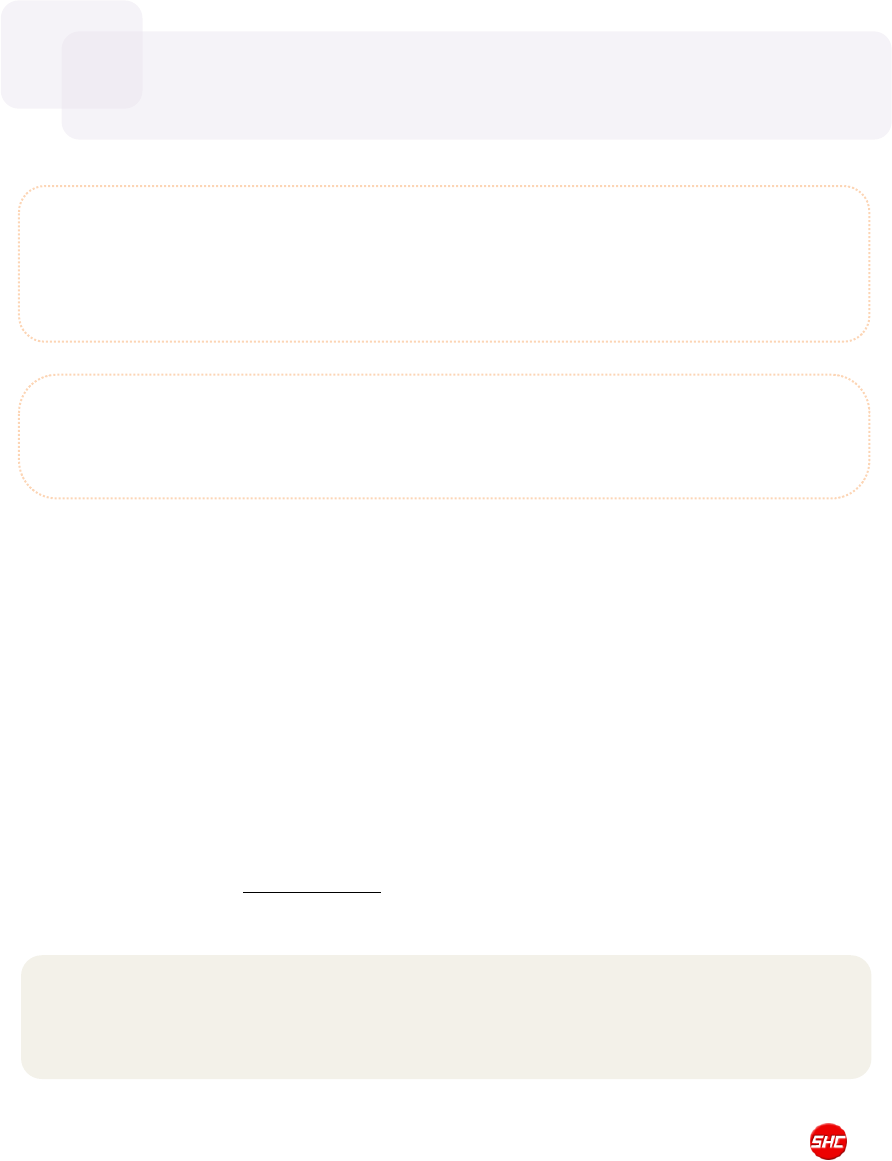
STM-8800 User Manual 2009 Copyright © Shinheung Precision Co., Ltd
This user’s manual and related products are under the protection of the
copyright law, all rights reserved. This document and any part hereof may not
be copied, adopted or translated into other languages without prior written
consent of Shinheung Precision Co. Ltd.
Copyright
•Use the Windows System OS documentation for information regarding the same. For
information about the PC used, please refer to the PC instruction manual.
•All names and products used in this manual are names, service marks, and/or
registered trademarks of their respective owners.
•Picture, screens, features used herein may vary slightly with the actual product
depending on the product version.
•Shinheung Precision reserves the right to change/,modify this user’s manual without
prior notice depending on the circumstances that affects the product and/or its
version.
•Users must read the PRECAUTIONS before using the product.
Shinheung Precision Co. Ltd., in reference to the instructions and/or
information in this user’s manual in relation to the products referred to
herein, does not provide nor implies the granting of an unlimited guarantee
of any kind.
Shinheung Precision Co., Ltd.
7rd Floor JEI Platz Bldg., Gasan-dong
Geumcheon-gu, 153-792 Seoul, Republic of Korea
TEL: 02) 6749-4700 FAX: 02) 6749-4699
4
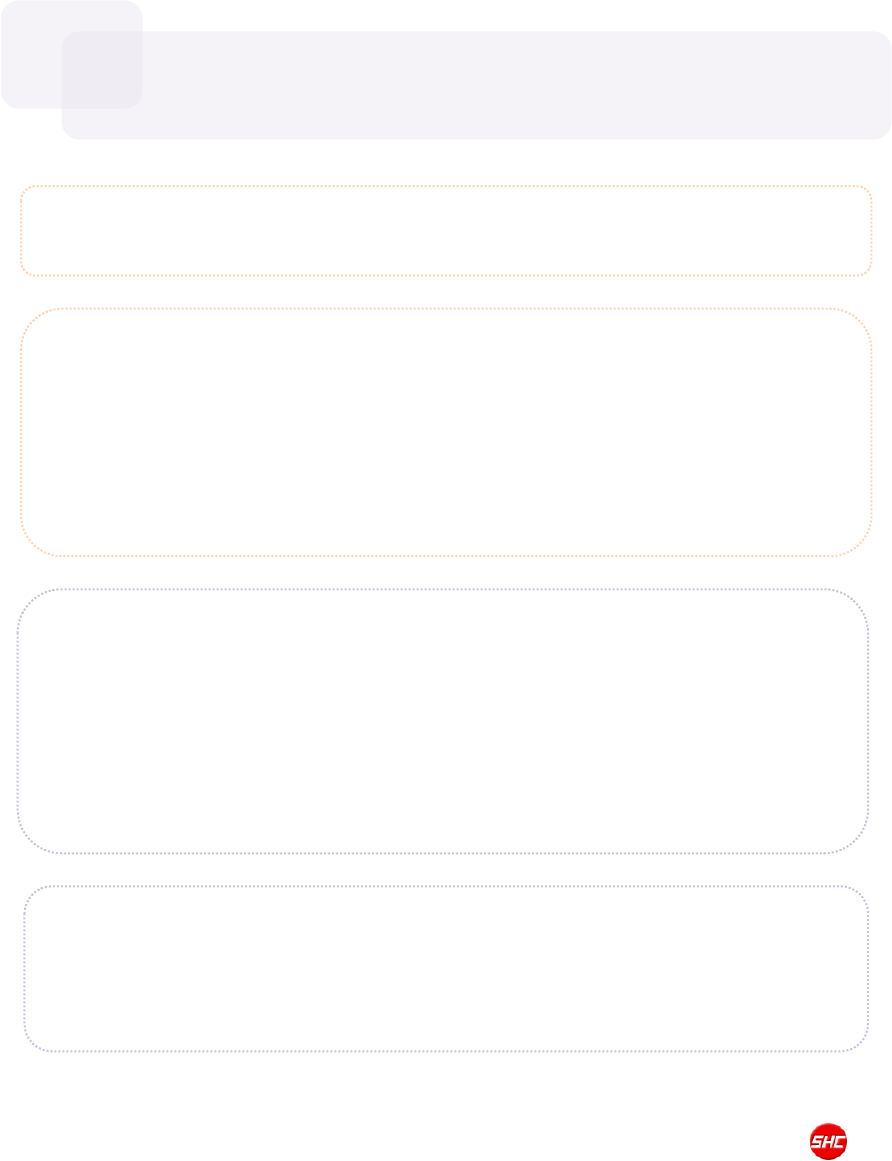
STM-8800 User Manual 2009 Copyright © Shinheung Precision Co., Ltd
To insure the smooth and safe usage of this product, read carefully the
instructions detailed in this manual.
Proper Handling of the Device
Using accessories other than those recommended and/or included in this
product can cause accidents and product failures. Shinheung Precision Co.
Ltd. Will not be responsible for such accidents and/or failures.
Bringing this product to unauthorized repair or service centers/shops will
void the warranty. Please contact the manufacturer for any repair and
maintenance needs.
Counterfeit mobile phone
This product is identified through its unique phone number (ESN: Electronic
Serial Number). Illegally reproducing or changing this unique number is a
criminal act under Article 347, and is punishable with less than 10 years of
imprisonment or a fine of less than KRW 20 million. In addition, this illegal
act voids the warranty of this product.
Wireless/Radio Equipment Inspection and Registration
•This product is inspected by and registered with the Ministry of Information
& Communication.
•This product can not be modified that could cause changes in its
performance that infringes on the conditions of the registration.
5
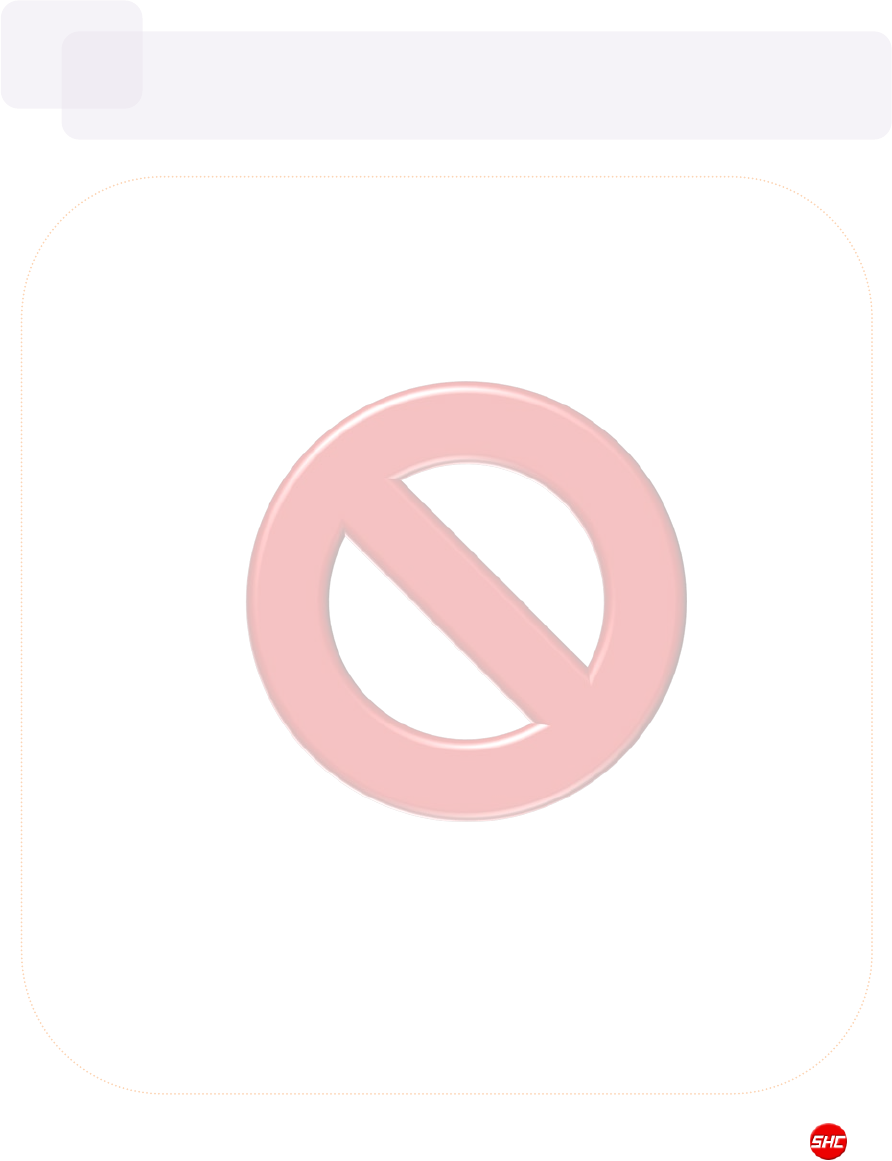
STM-8800 User Manual 2009 Copyright © Shinheung Precision Co., Ltd
•Avoid eye contact with the Barcode scanner. It can cause eye damage.
•Do not remove the battery while device is ON.
•Use only the specified battery charger. Using other chargers can
cause damage to the battery and/or be a fire hazard.
•Do not make modifications to this product. This could cause fire,
damage, electric shock, or serious injuries to users.
•Do not use this product near gas and other flammable liquid. This
could cause explosion.
•Avoid using this product during lightning and thunder storms.
•Keep this product out of reach of children and animals.
•In places where wireless/radio communication is restricted (air flights,
near medical equipments, or similar places), follow the instructions
provided for by the authorities of such places.
•Do not leave this product in areas with high temperature and/or
extreme temperature changes. Do not expose this product to direct
sunlight. (Exposing this product to high temperature for long periods
could cause explosion.)
•Avoid using this product in areas with high moisture level. Do not
submerge this product under water.
•When subjecting this product to search equipment (x-ray machines)
in airports, it is advisable to be aware of what is happening.
Proper Handling of the Device
6
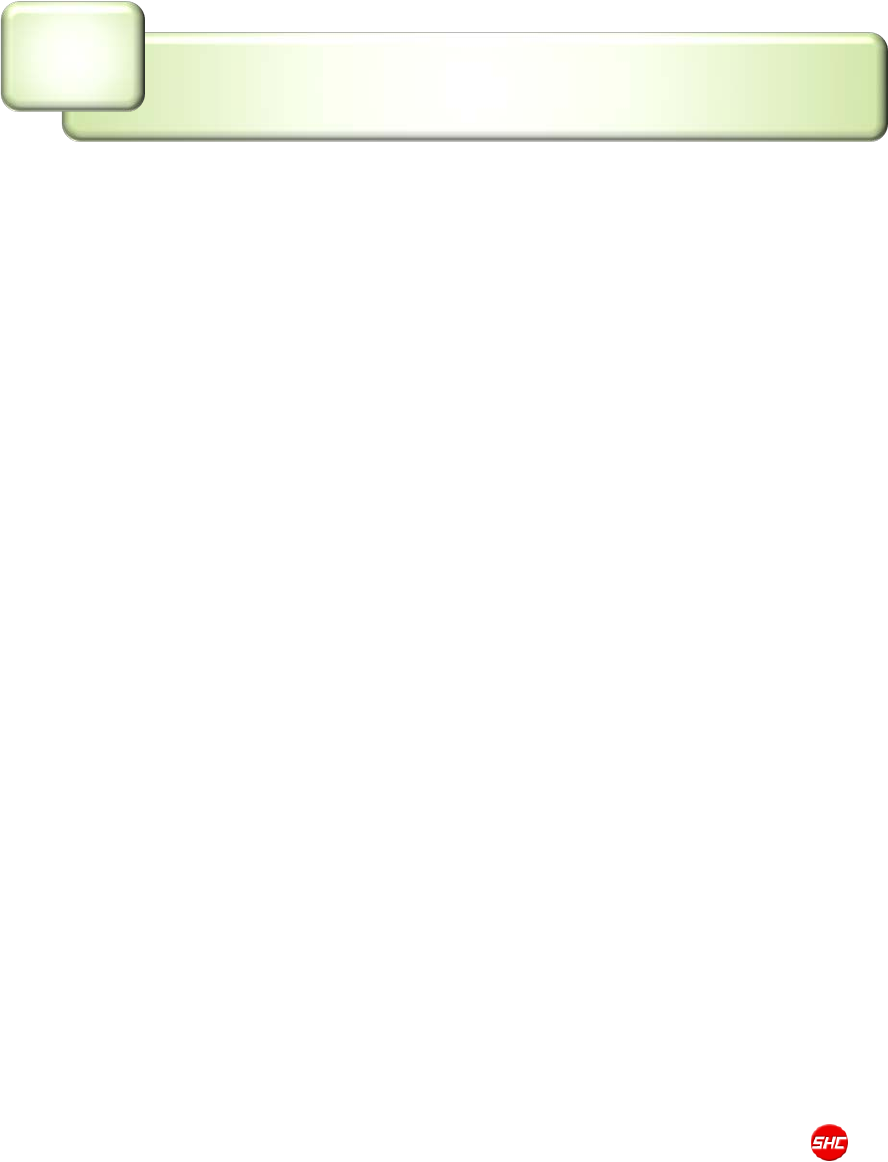
STM-8800 User Manual 2009 Copyright © Shinheung Precision Co., Ltd
Before using the device...
Ⅰ
1. Product Configuration
2. Specifications (Device/Cradle)
3. Charging the Battery
4. Initialization
7
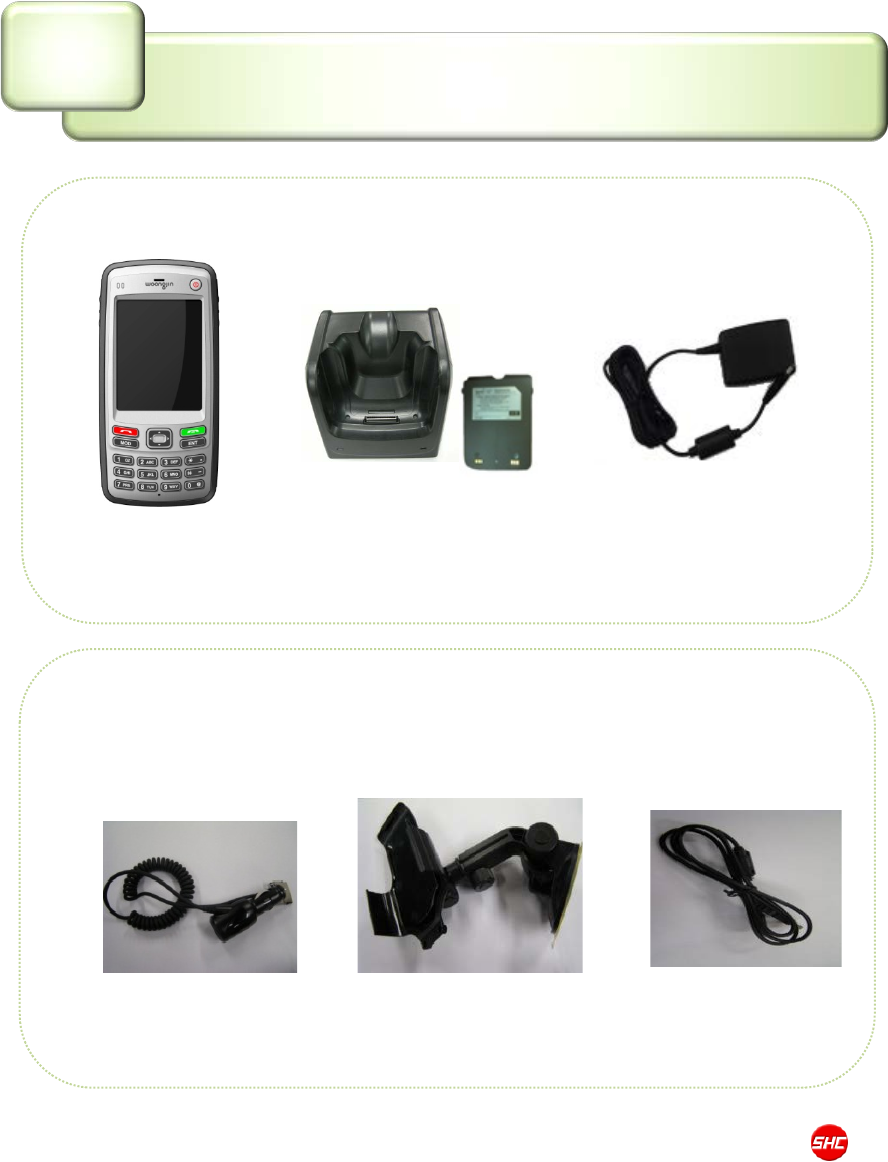
STM-8800 User Manual 2009 Copyright © Shinheung Precision Co., Ltd
2) Additional Product Configuration
Car Charger Car Boom USB Cable
1) Basic product configuration
STM-8800 Cradle & Battery Power cord &
Adapter
Main device
Product Configuration
Ⅰ-1
8
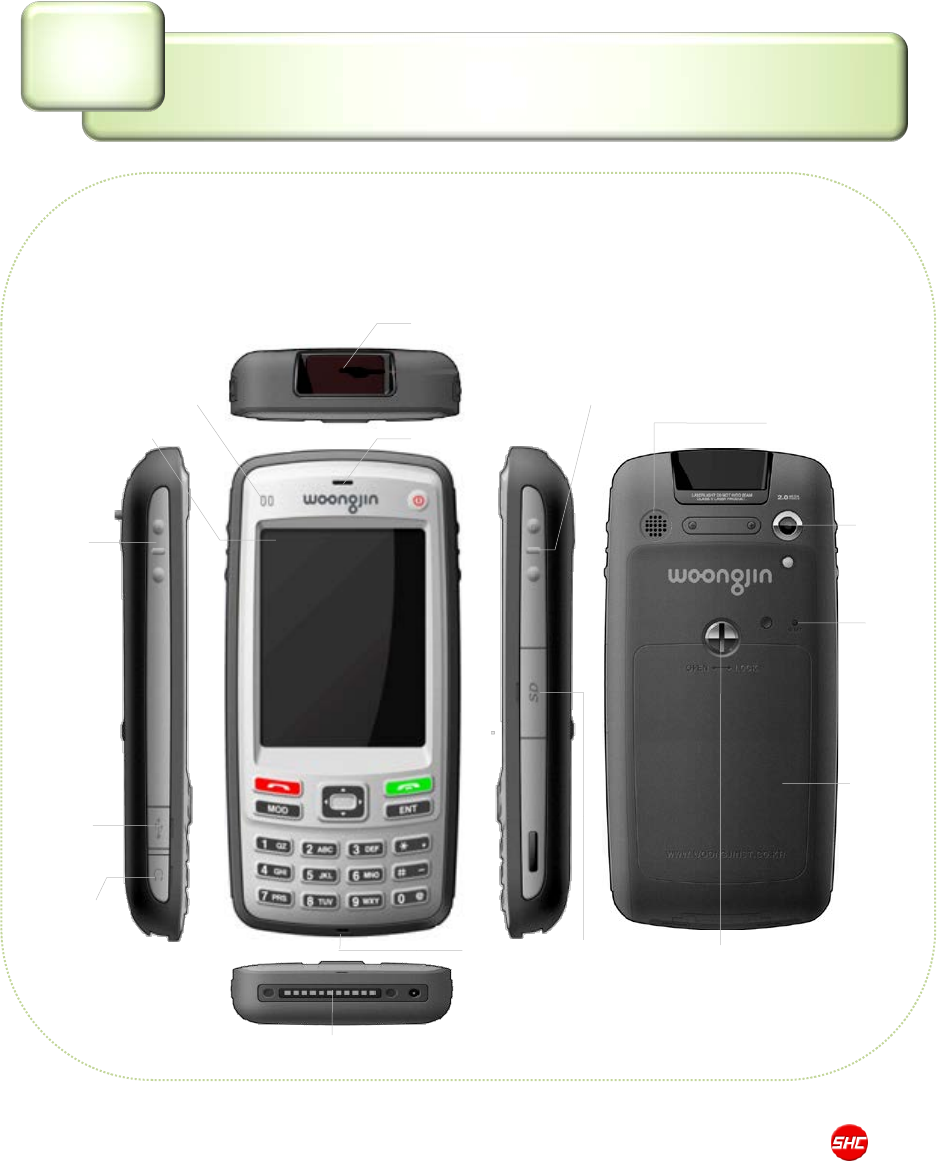
STM-8800 User Manual 2009 Copyright © Shinheung Precision Co., Ltd
Specifications
Ⅰ-2
1) Mobile Device Description
9
Up/Down
Function
Button
USB port
Ear phone
Jack
Display
Micro-
phone
Receiver
1D/2D Scanner
Camera/Scanner Button
Speaker
Camera
Battery
SD Card Slot
I/O Connector
Reset
Hole
Battery Lock
Power LED
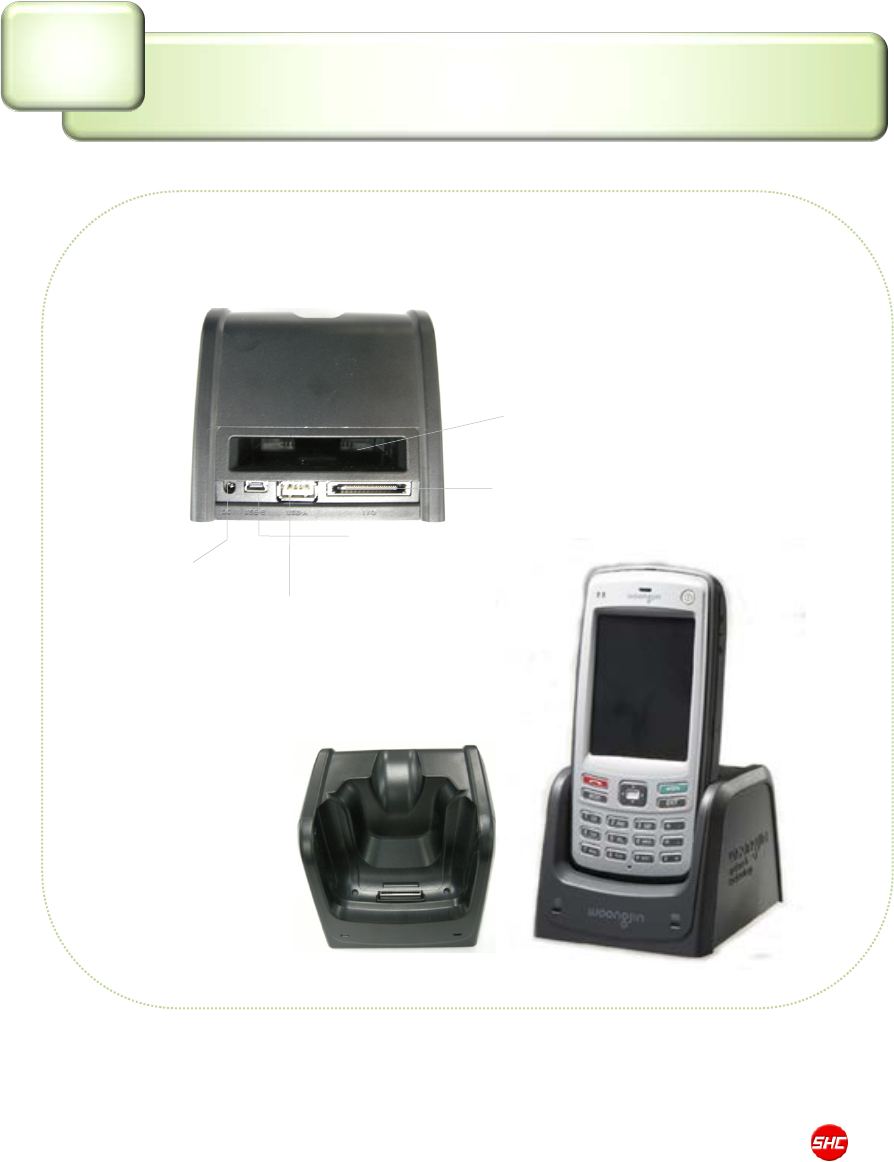
STM-8800 User Manual 2009 Copyright © Shinheung Precision Co., Ltd
Specifications
Ⅰ-2
2) Cradle Device Description
10
I/O Connector
Power
Connector
USB Cable Connector
(USB-B Type)
USB Cable Connector
(USB-A Type)
Battery Charger Slot
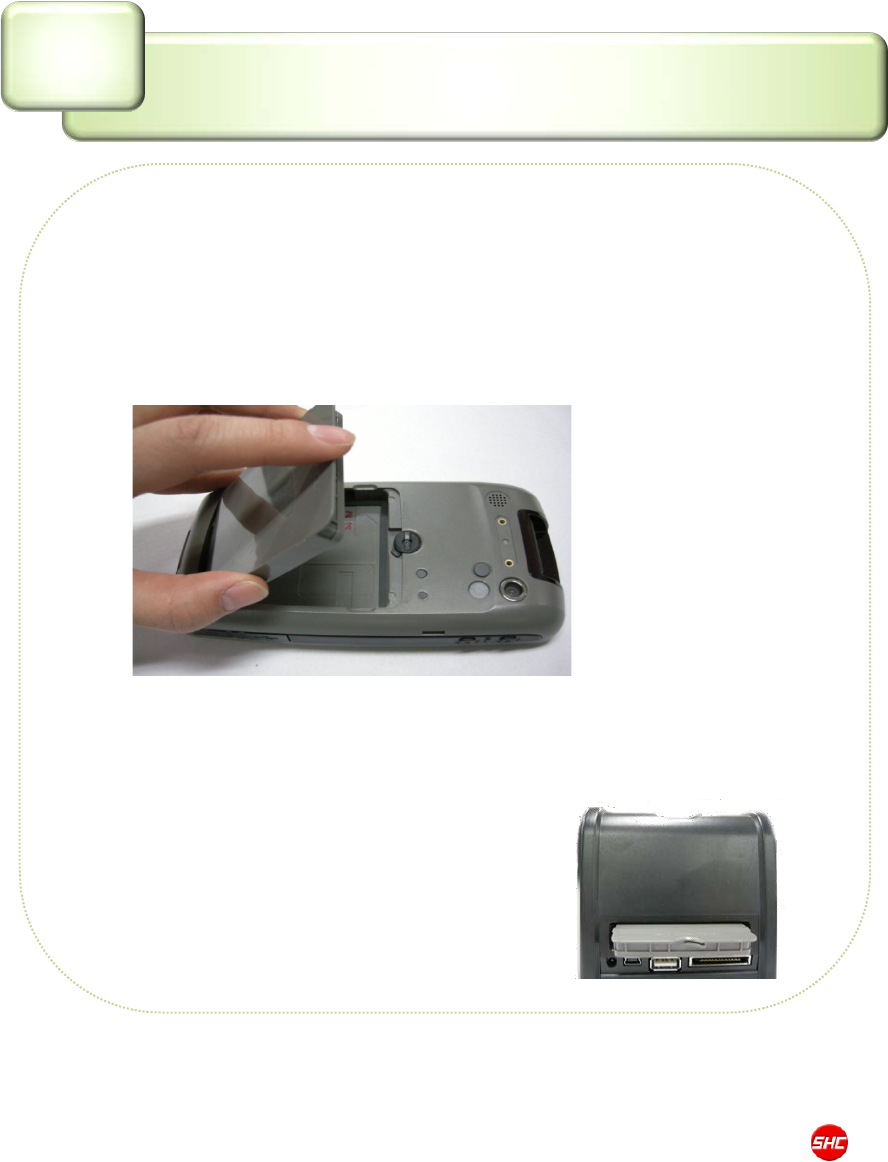
STM-8800 User Manual 2009 Copyright © Shinheung Precision Co., Ltd
Charging the Battery
Ⅰ-3
1) Charging the battery from the device
Open the battery cover at the back of the device and place the
battery into it. Place the device on the cradle and connect the
power adapter with cord to the cradle to charge the battery.
2) Separately charging the battery
To charge the battery separately from the device, place the battery
on the back side of the cradle.
11
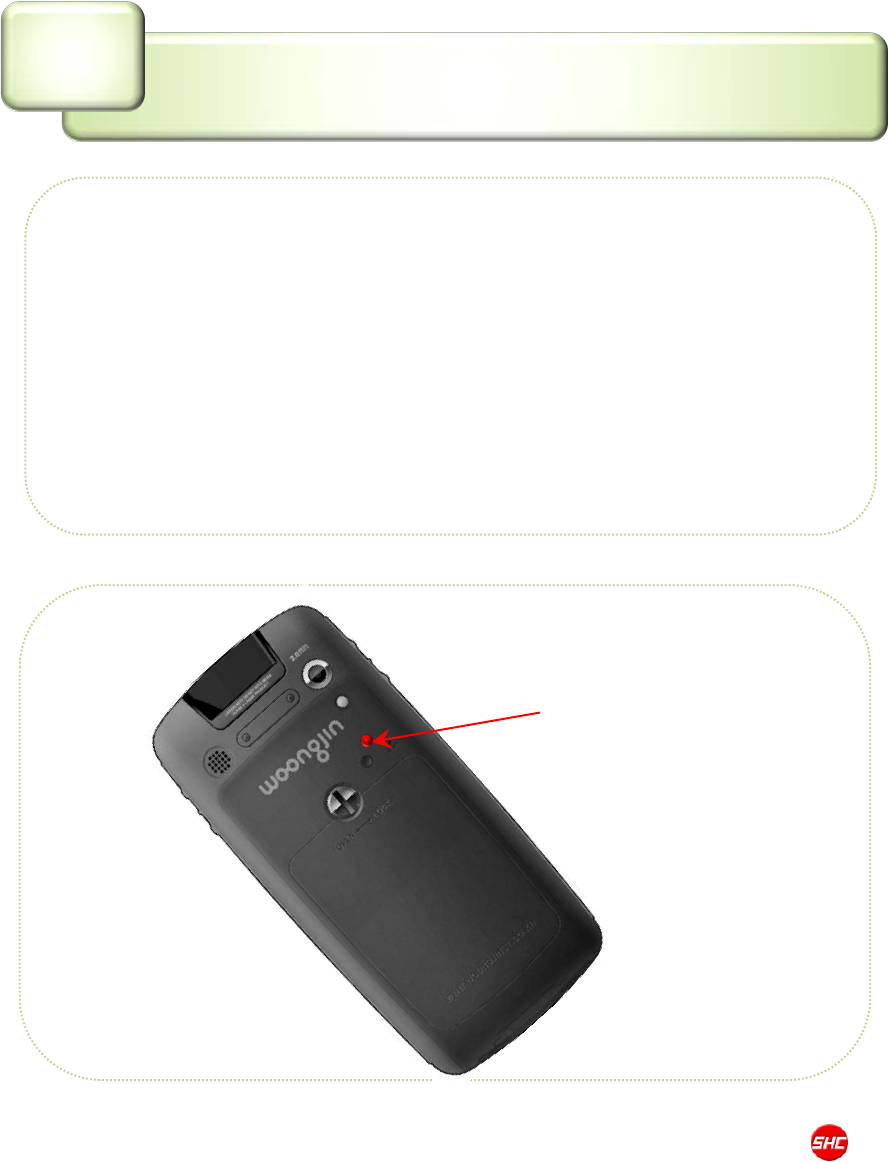
STM-8800 User Manual 2009 Copyright © Shinheung Precision Co., Ltd
Initialization
Ⅰ-4
1) When the system does not response you may need to initialize the device
by inserting the stylus into the reset hole found at the back of the device.
2) When initializing the device all files will be deleted/lost and all running
programs will be terminated.
However, initialization (reset) does not delete files in the FileBox folder.
In cases where FileBox capacity is not sufficient to contain all important files,
another method of backup is with the use of Micro SD cards.
12
Reset Hole
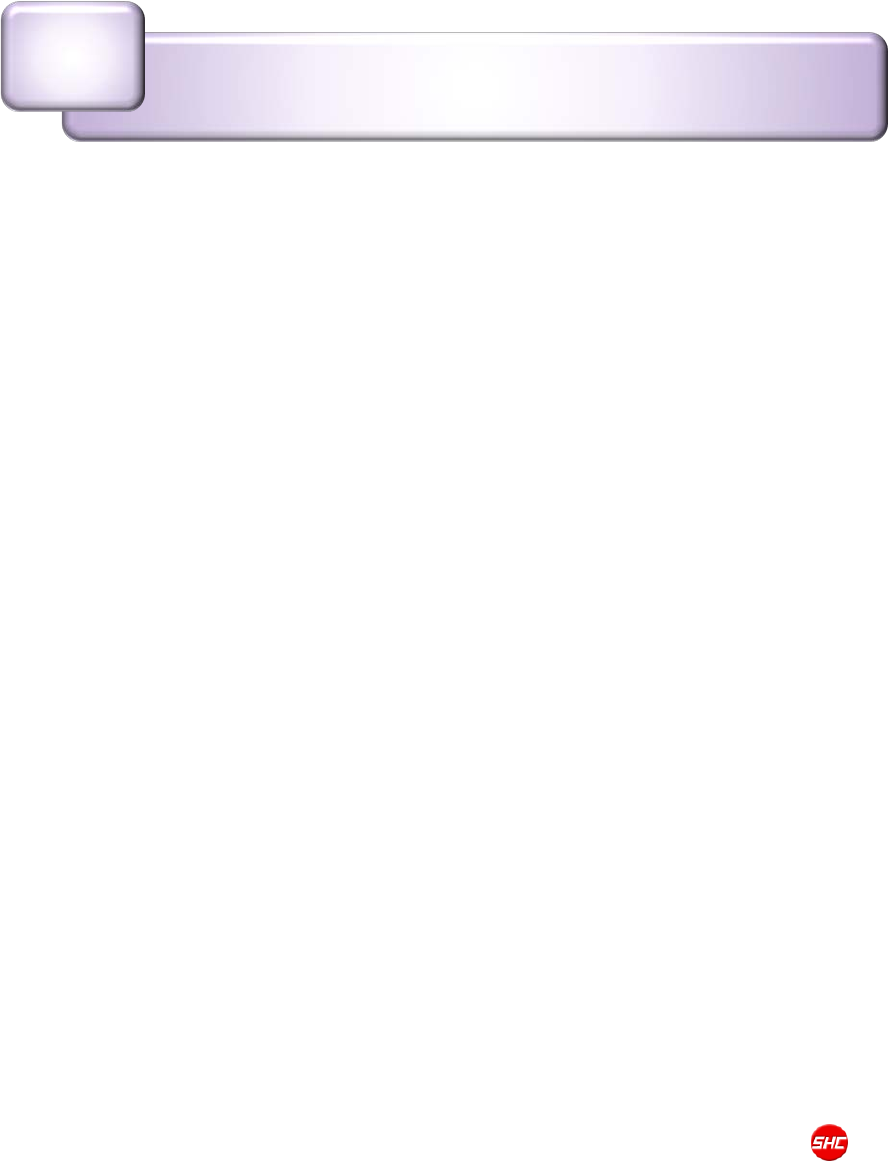
STM-8800 User Manual 2009 Copyright © Shinheung Precision Co., Ltd
Getting Started
Ⅱ
1. Power On
2. How to use the stylus pen
3. Screen description
4. Configuring the device
5.Locking and unlocking the device
6.Manage battery life
13
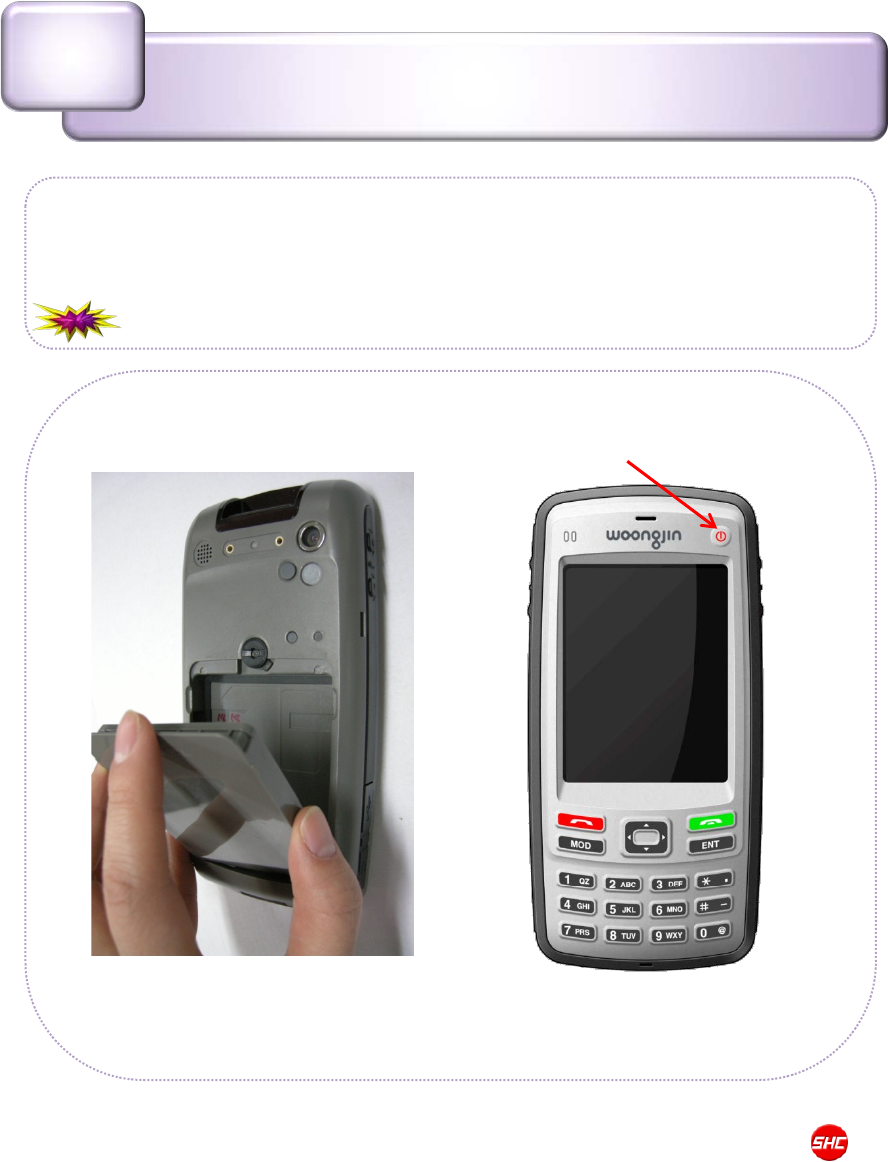
STM-8800 User Manual 2009 Copyright © Shinheung Precision Co., Ltd
Power On
Ⅱ-1
•Insert the battery into the device and press the Power button while about
2sec to turn ON the power.
•When the device is powered ON, short press the Power button again turns
Sleep/Wakeup the power.
If the device does not turn ON, check the battery for proper charging.
Power button
[Insert the battery]
14

STM-8800 User Manual 2009 Copyright © Shinheung Precision Co., Ltd
Power On
Ⅱ-1
▶
Initial Setup or Reset
The first time you power on your device or every system reset, it displays
the Windows Mobile® screen which guides you through a series of startup
procedures.
1. From the initial startup screen tap the screen using the stylus.
2. From the align screen, use your stylus to calibrate the touch accuracy of
the screen by both accurately and firmly tapping the center of each
target (crosshair). Repeat this process for every target that appears until
completed.
15
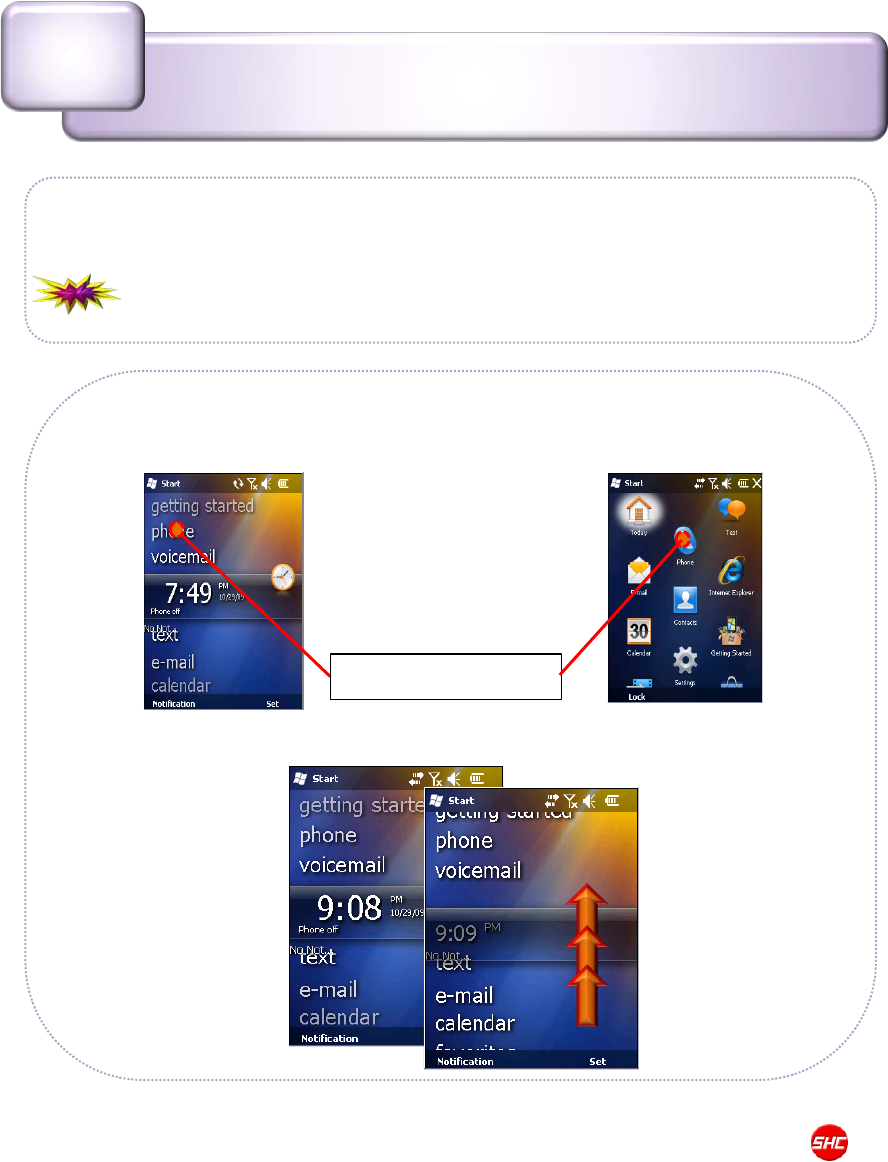
STM-8800 User Manual 2009 Copyright © Shinheung Precision Co., Ltd
How to use the stylus pen
Ⅱ-2
This section describes the basic use of the stylus pen in running or moving
programs on the touch screen.
Only use stylus pen that comes with this product or recommended by
Shinheung Precision
. Other stylus pen can damage this product.
Tap: Selects an item (program) to run by tapping the stylus pen over
the item’s icon on the screen.
Scroll: Moving the stylus pen scrolls the page.
16
Tap the icon to select
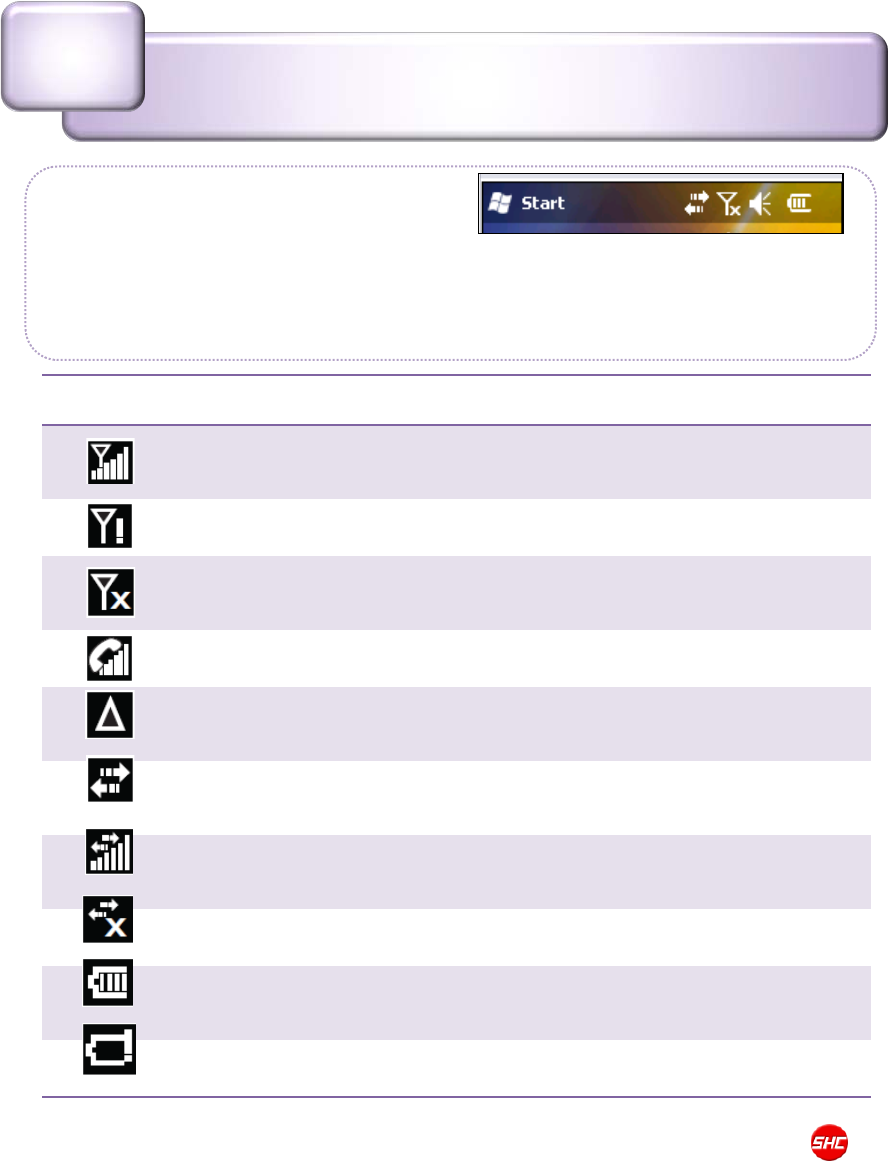
STM-8800 User Manual 2009 Copyright © Shinheung Precision Co., Ltd
Icon Icon Description
Signal Strength
– Shows your current signal strength. (More bars =
stronger signal.)
No Service
–
Your device cannot find a usable signal.
Phone Antenna Disabled
– Your device’s internal phone antenna
has been turned off.
Call in Progress
– Your device is currently is an active call.
Roaming
– Your device is “roaming” off the Nationwide Sprint
Network.
Sync Connected
– Device is connected and communicating with
your computer via ActiveSync or Windows Mobile Device Center.
1X Data Sending/Receiving –
Data service is transmitting and
receiving data.
1X Data Unavailable –
Data service is unavailable.
Battery Charge Level –
Shows your current battery charge level.
(Icon shown is fully charged.)
Low battery –
Shows your current battery charge level is low.
Screen description
Ⅱ-3
▶ Status Icon
The task bar that you normally find at the top of the screen is similar to that of the
PC Windows. The icons displayed on the task bar indicates the status of the
application and/or device it represents.
17
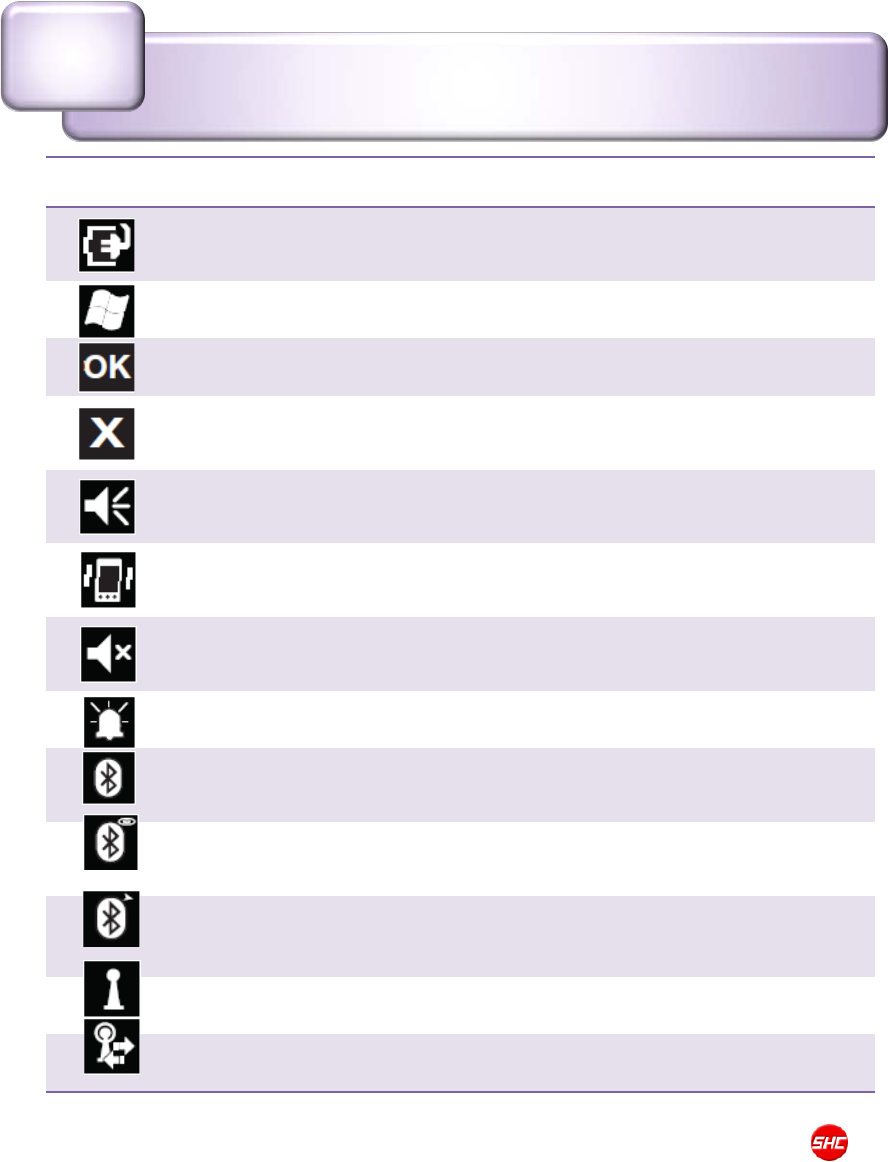
STM-8800 User Manual 2009 Copyright © Shinheung Precision Co., Ltd
Icon Icon Description
Battery Charging –
Shows the device is
connected to a power
cable and is currently being charged.
Windows Start –
Provides access to the Windows Menu page.
OK –
Tap to accept and save the current page settings, and then exit.
Cancel/Exit –
Tap to leave the current page without storing any
changes.
Speaker On –
Your device’s speaker is active. Tap this icon to access
the onscreen Volume slider and adjust the volume level.
Vibrate –
Your device’s the speaker is set to
vibrate only. Tap this
icon to access the onscreen Volume slider and adjust the volume level.
Silence All –
Your device has the ringer deactivated and the vibrate
option unchecked (disabled). No sound is made by the device.
Alarm –
An alarm has been set on your phone.
Bluetooth Enabled –
The Bluetooth technology is active and
enabled.
Bluetooth Visible –
The Bluetooth technology is active and the
device is visible.
Bluetooth Connected –
The Bluetooth technology is active and
communicating (paired) with a target Bluetooth device.
Wi-Fi Inactive –
Your Wi-Fi connection is inactive.
Wi-Fi Active –
Your Wi-Fi connection is active and communicating.
Screen description
Ⅱ-3
18
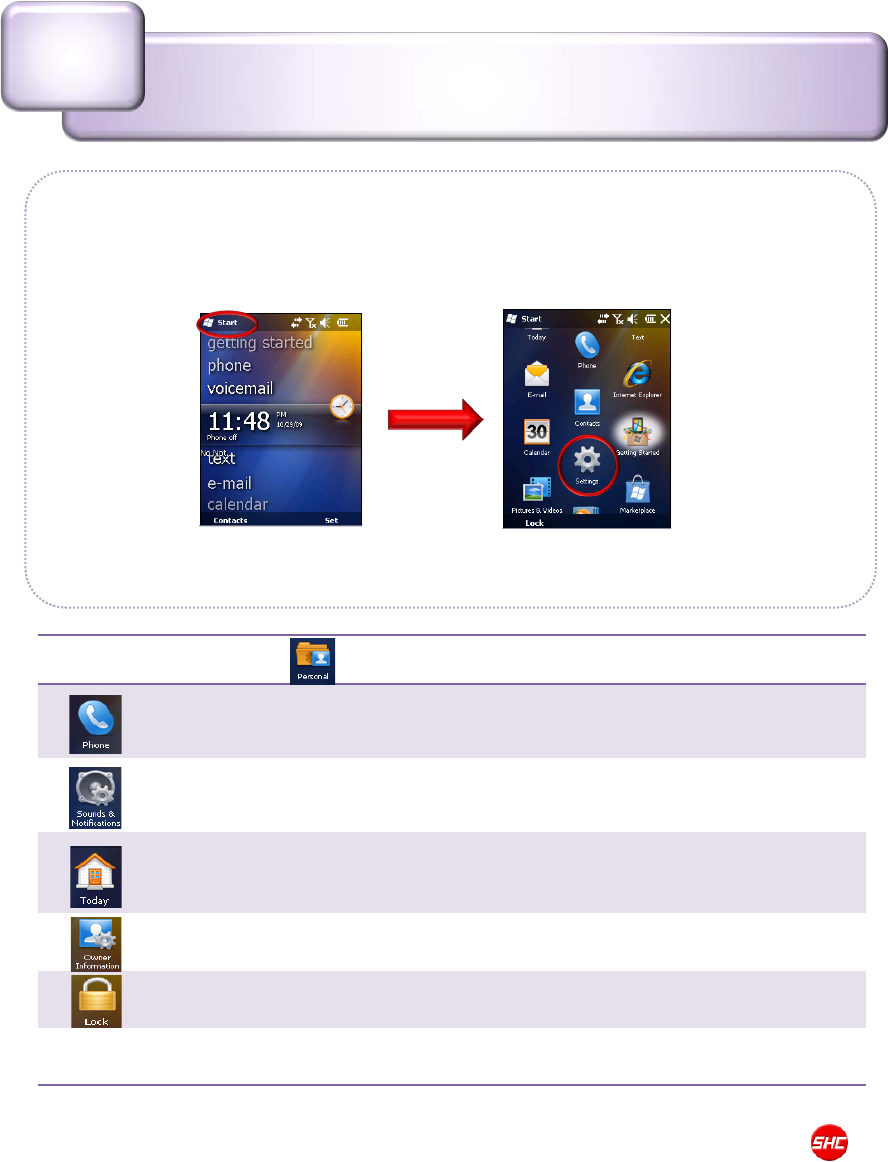
STM-8800 User Manual 2009 Copyright © Shinheung Precision Co., Ltd
▶ Overview of Setup and customize your device
You can find most user-adjustable options for your device in Settings. You
can reach Settings by tapping Start > Settings (you may need to scroll the
screen).
The following table lists the option areas in Settings and describes how you
can configure them.
Configuring the device
Ⅱ-4
19
Icon Personal Settings Description
Phone –
Customize caller ID, call forwarding, call waiting, and other
phone settings.
Sounds & Notifications –
Customize ring tones, reminders, and
other notification alerts.
Today –
Select a background theme and image, and change the
items (such as Date and Owner Info) that appear on the Today screen.
Owner Information –
Enter your personal information.
Lock –
Set up a device lock.
Menus –
Select the items that appear on the Start menu.
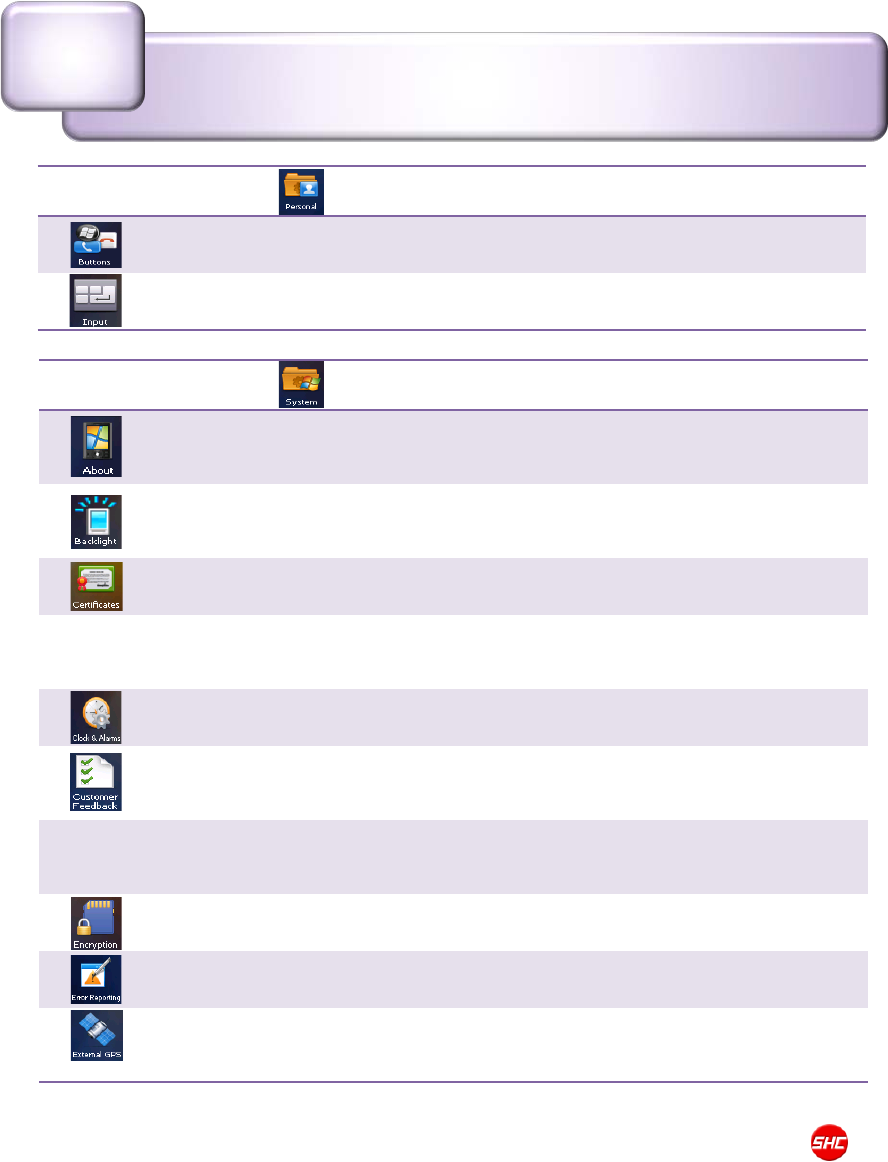
STM-8800 User Manual 2009 Copyright © Shinheung Precision Co., Ltd
Configuring the device
Ⅱ-4
20
Icon Personal Settings Description
Buttons –
Assign buttons to programs and controls.
Input –
Customize the on-screen keyboard.
Icon System Settings Description
About –
Displays information about the operating system and the
hardware configuration.
Backlight –
Adjust the brightness and power usage of the screen
backlight.
Certificates –
Manage networking certificates.
Clear Storage –
Delete all data from the device and reset all
settings to the manufacturer’s defaults.
Clock & Alarm –
Set the time, date, and alarms.
Customer Feedback –
Allow anonymous information about your
device use to be sent to Microsoft to help improve software.
Device Information –
View information about the device, such as
device type, model number, processing speed, and RAM size.
Encryption –
Set encryption for storage cards.
Error Reporting –
Enable or disable error reporting.
External GPS –
Set the port that programs will use to obtain GPS
data.
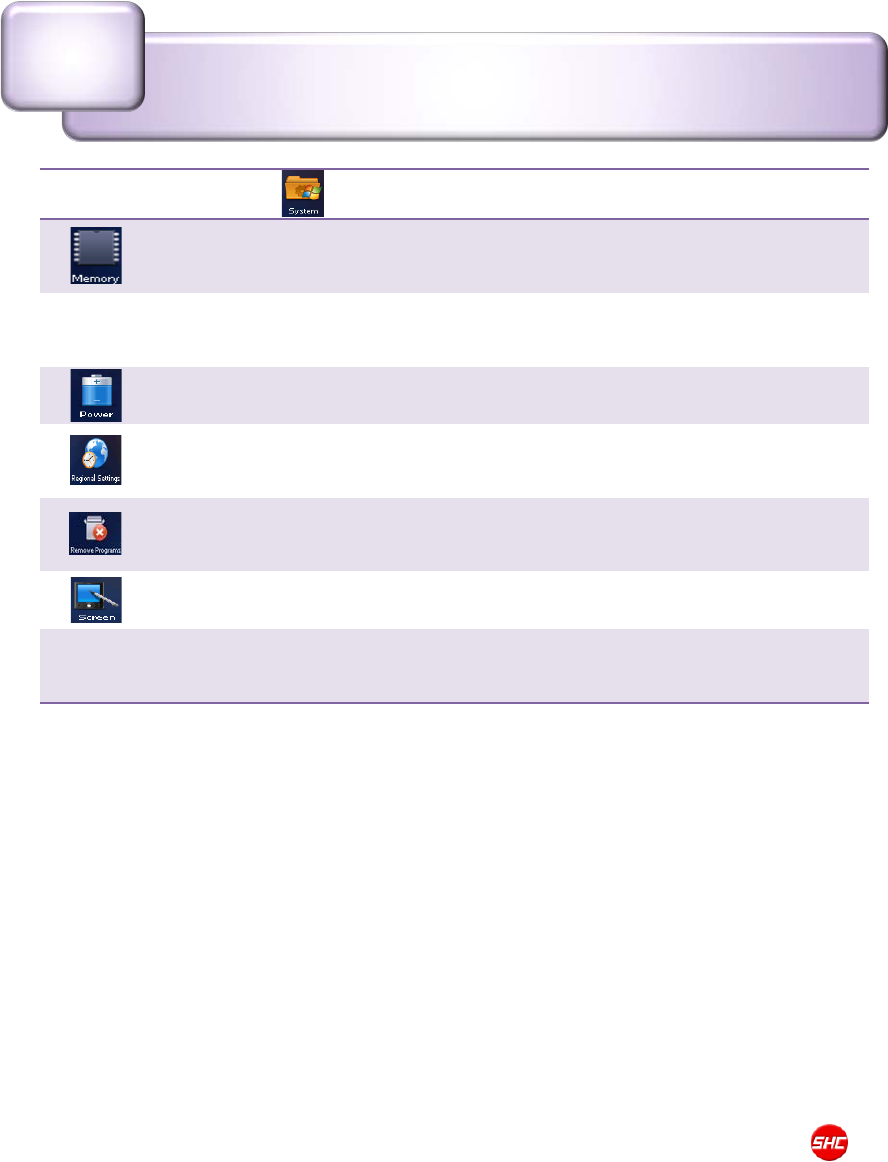
STM-8800 User Manual 2009 Copyright © Shinheung Precision Co., Ltd
Configuring the device
Ⅱ-4
21
Icon System Settings Description
Memory –
View total, in-use, and free memory, and a list of currently
running programs.
Microphone AGC –
Adjust the volume at which your voice is
recorded by the device.
Power –
Adjust settings to save battery power.
Regional Settings –
Customize language, date and time format,
and currency information.
Remove Programs –
Remove programs that you have added to
your device.
Screen –
Adjust screen orientation, alignment, and text size.
Windows Update –
Select whether to check for important updates
manually or let the device check automatically.
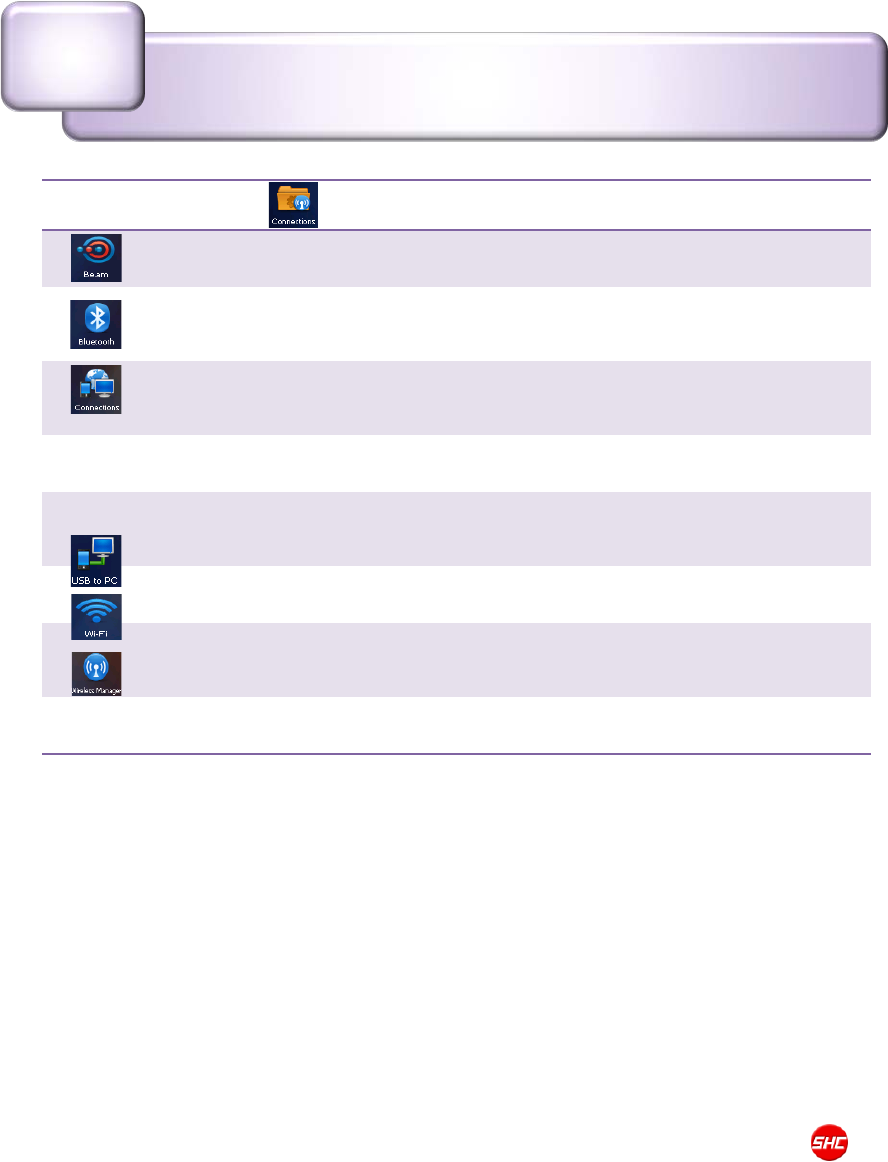
STM-8800 User Manual 2009 Copyright © Shinheung Precision Co., Ltd
Configuring the device
Ⅱ-4
22
Icon Connection Settings Description
Beam –
Choose to receive all incoming beams.
Bluetooth –
Set up Bluetooth connections with other Bluetooth-
enabled devices.
Connections –
Set up connections to the Internet and other
networks.
GPRS Settings –
Select a GPRS authentication method.
Network Cards –
Configure the network adapters used by your
device.
USB to PC –
Change the type of USB connection your device uses.
Wireless LAN –
Set up a wireless connection to a local area
network.
Wireless Manager –
Quickly turn Bluetooth and phone on or off.
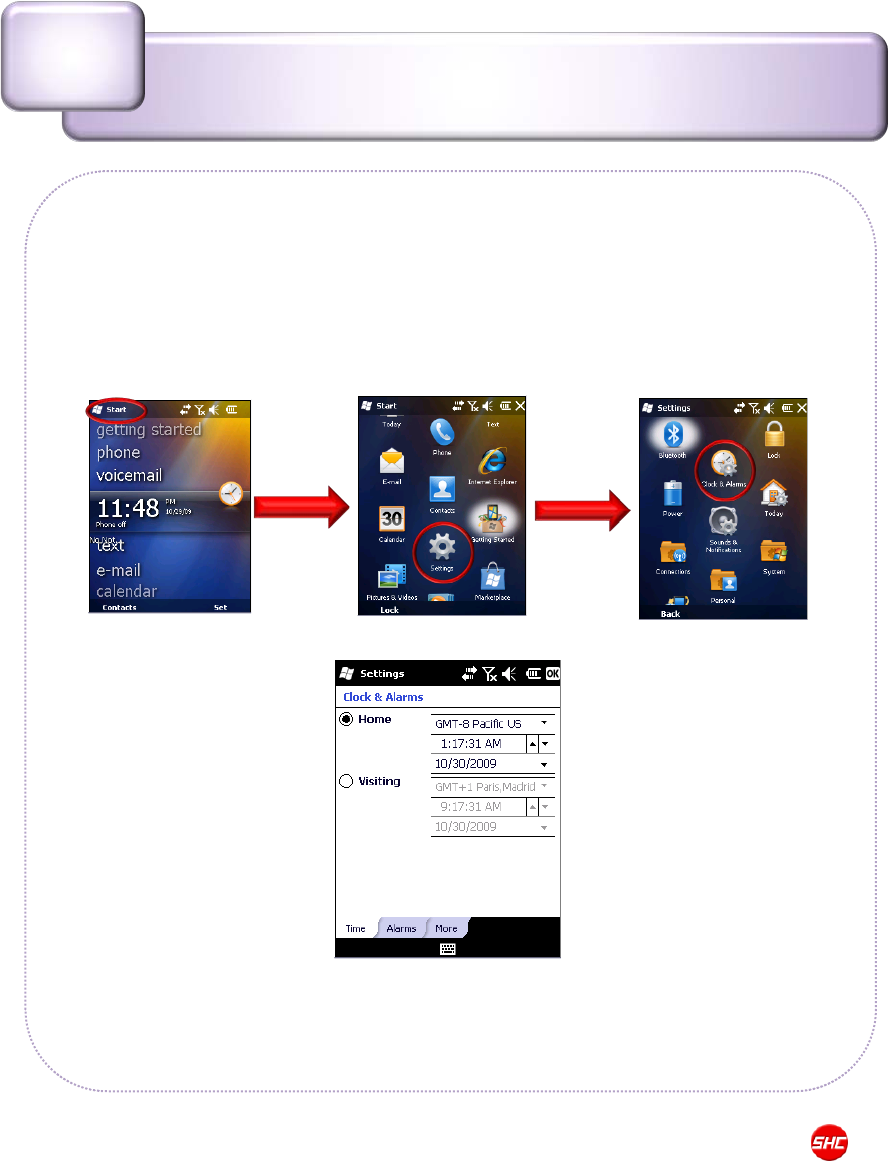
STM-8800 User Manual 2009 Copyright © Shinheung Precision Co., Ltd
▶ Set the date and time
Setting the date and time on your device makes sure that your calendar
and alarm alerts will be accurate.
1. Tap Start, tap Settings (you may need to scroll the page), and then tap
Clock & Alarms (you may need to scroll the page).
2. On the Time tab, select the correct time zone and set the date and
time.
Notes: During synchronization, the time on your device is updated with the time
on your computer.
Configuring the device
Ⅱ-4
23
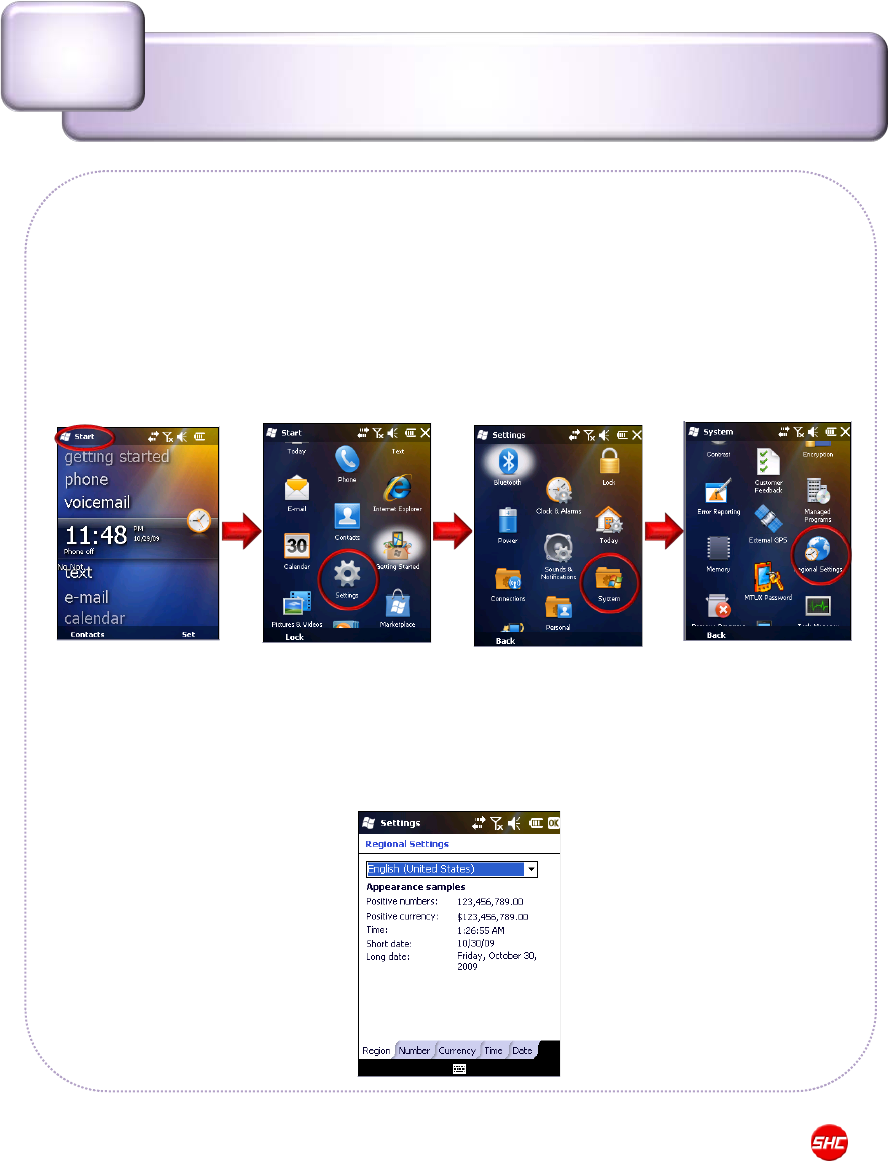
STM-8800 User Manual 2009 Copyright © Shinheung Precision Co., Ltd
▶ Set up language and regional settings
Regional settings specify the style in which numbers, currency, dates, and
times are displayed.
1. Tap Start, tap Settings (you may need to scroll the page), tap System
(you may need to scroll the page), and then tap Regional Settings
(you may need to scroll the page).
2. On the Region tab, select your language and region.
The region you select determines which options are selected by default
on these other tabs: Number, Currency, Time, and Date.
3. To change other settings, tap a tab and make the changes you want.
4. Tap OK.
Configuring the device
Ⅱ-4
24
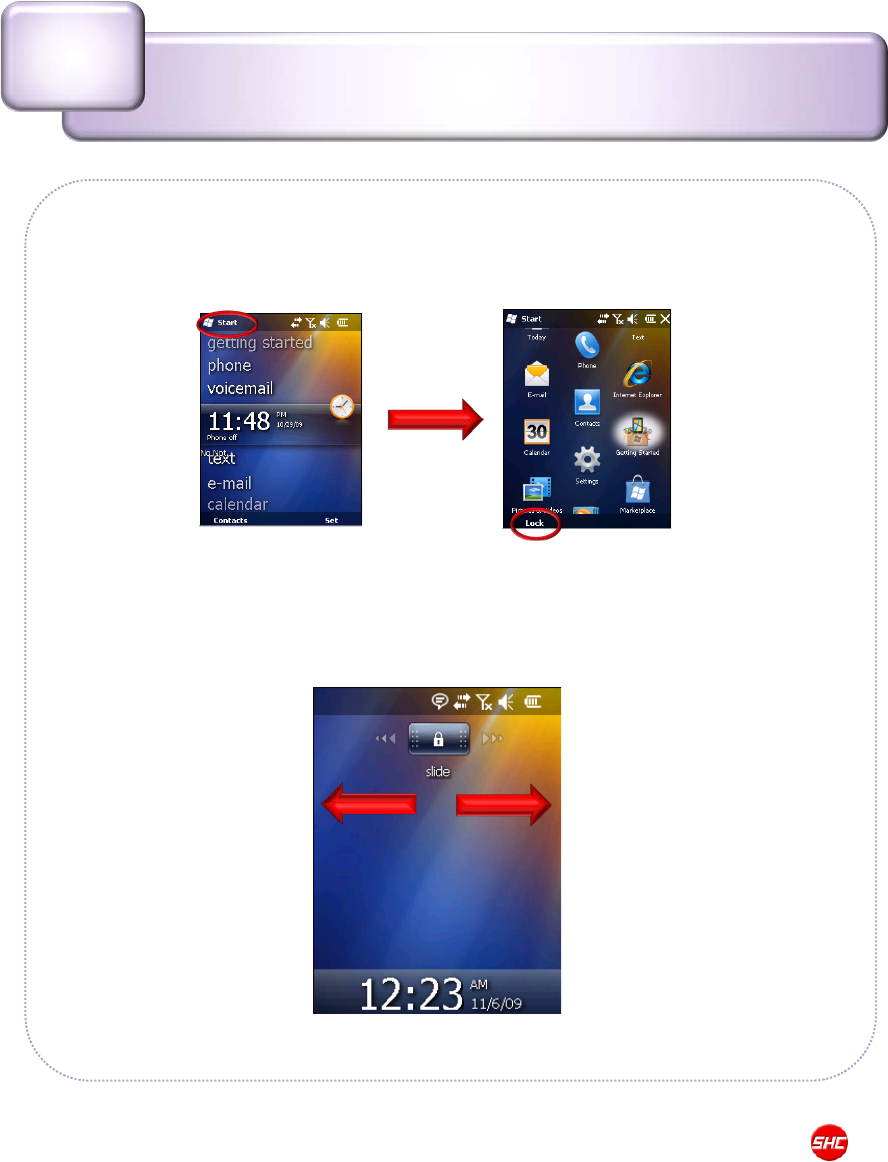
STM-8800 User Manual 2009 Copyright © Shinheung Precision Co., Ltd
▶ Locking Your Device
1. Tap Start, tap Lock
(left softkey).
▶ Unlocking Your Device
1. Tap and drag the onscreen
Lock button to either
the left or right of the
screen to reveal the Today screen.
Locking and unlocking the device
Ⅱ-5
25
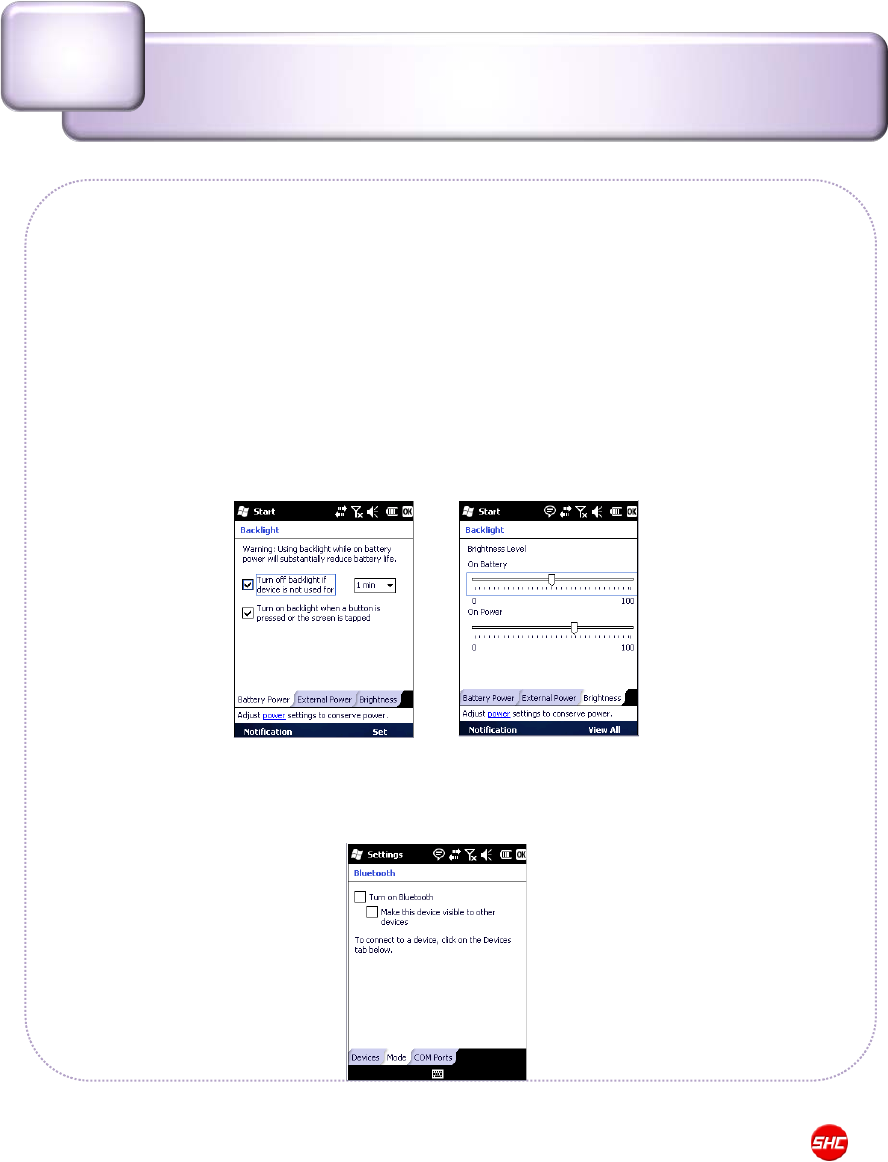
STM-8800 User Manual 2009 Copyright © Shinheung Precision Co., Ltd
▶ Manage Battery Life
No matter how big your device’s battery is, you’ll want to get the most
from it. Get tips here.
▶ Make the battery last longer
You can do several things to make the battery in your device last longer:
1. Adjust power-management settings to decrease screen brightness and
also how long the backlight and screen displays stay on.
2. Synchronize your device with your computer less frequently (for
example, once every hour or two, instead of once every five minutes).
3. Turn off Bluetooth (if available on your device).
Manage battery life
Ⅱ-6
26
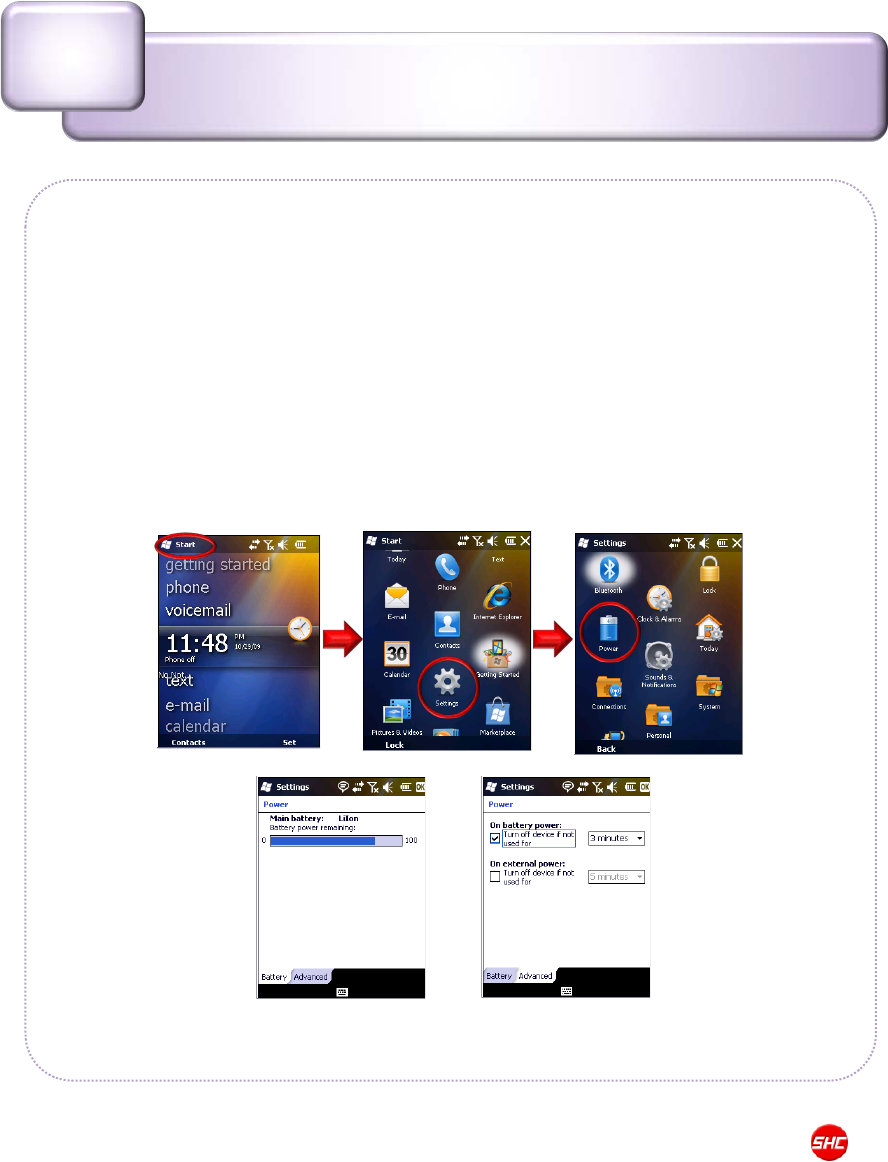
STM-8800 User Manual 2009 Copyright © Shinheung Precision Co., Ltd
▶ Change power-management settings
You can use the Power screen to check the battery's remaining power and to
adjust settings that extend battery life. For example, setting brief backlight
and display time outs will extend battery life.
1. Tap Start > Settings > System tab > Power.
2. Tap the Advanced tab.
3. Select the check box for each condition where you want the device to
turn off automatically. Then select the time interval.
Manage battery life
Ⅱ-6
27
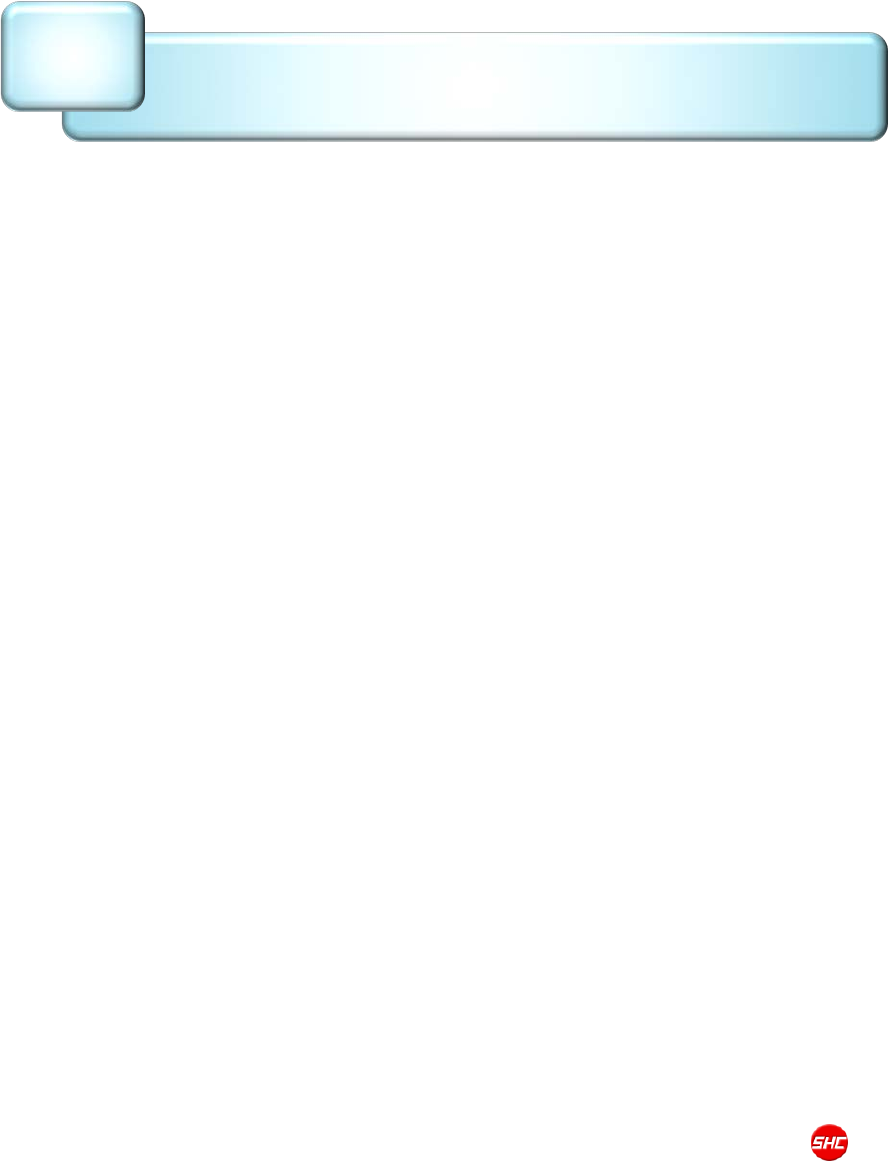
STM-8800 User Manual 2009 Copyright © Shinheung Precision Co., Ltd
Use File Explorer
Ⅲ
1. Run and use the File Explorer
28
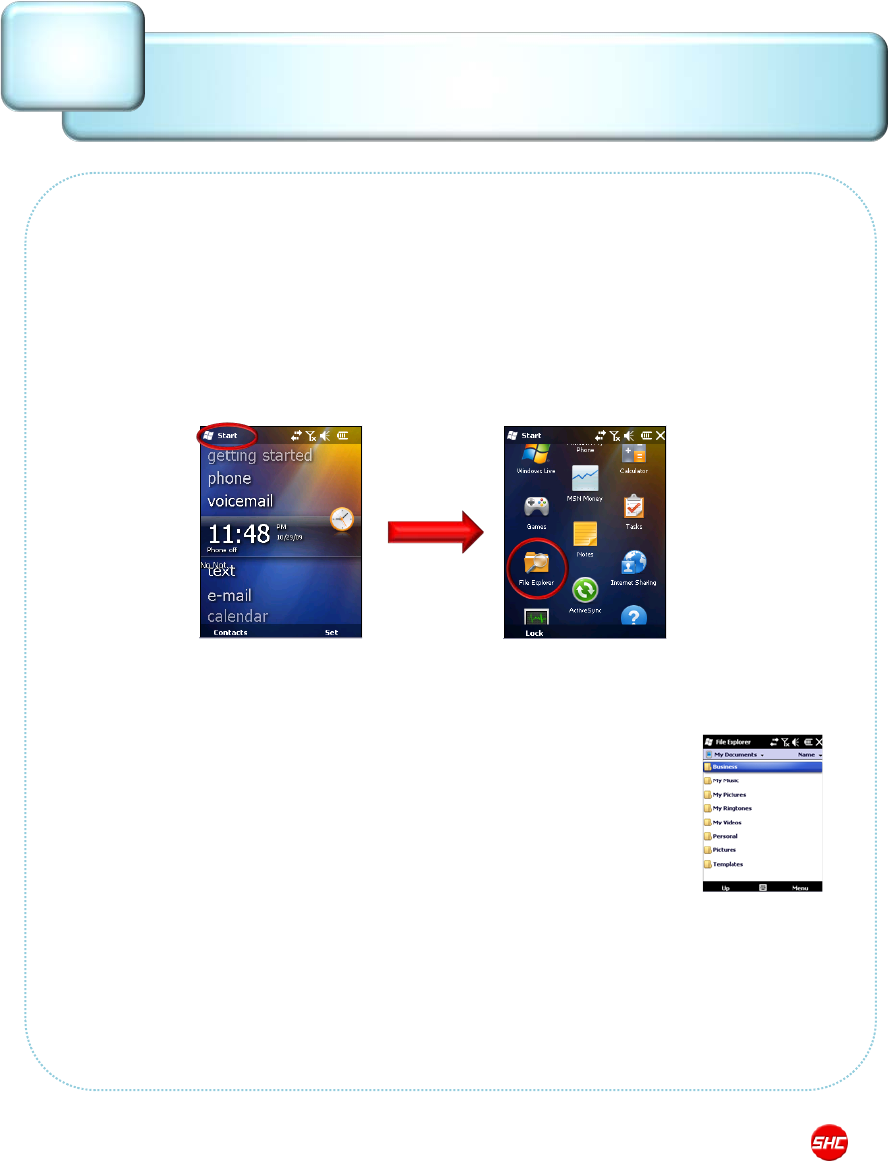
STM-8800 User Manual 2009 Copyright © Shinheung Precision Co., Ltd
▶ Explore files and folders
You can browse the contents of folders on your device. The highest-level
folder is named My Device and resembles the My Computer folder on a
computer. The My Device folder contains the My Documents, Program Files,
Temp, and Windows folders, among others.
1. Tap Start > File Explorer (you may need to scroll the page).
2. Tap the folder list (labeled My Documents by default) and tap the
folder that you want to explore. To find the folder that you want, you
may have to tap a folder from the folder list, or one listed in the main
window.
3. Do any of the following:
•To open an item, tap it.
•To select multiple items, tap and drag.
•To cut, copy, rename, delete, beam, or send an item as an e-mail
attachment quickly, tap and hold the item, and then tap a
command.
Note: The contents of a folder can be sorted by name, date, size, or type by
tapping the Sort By list. The default is to sort by name.
Run and use the File Explorer
Ⅲ-1
29
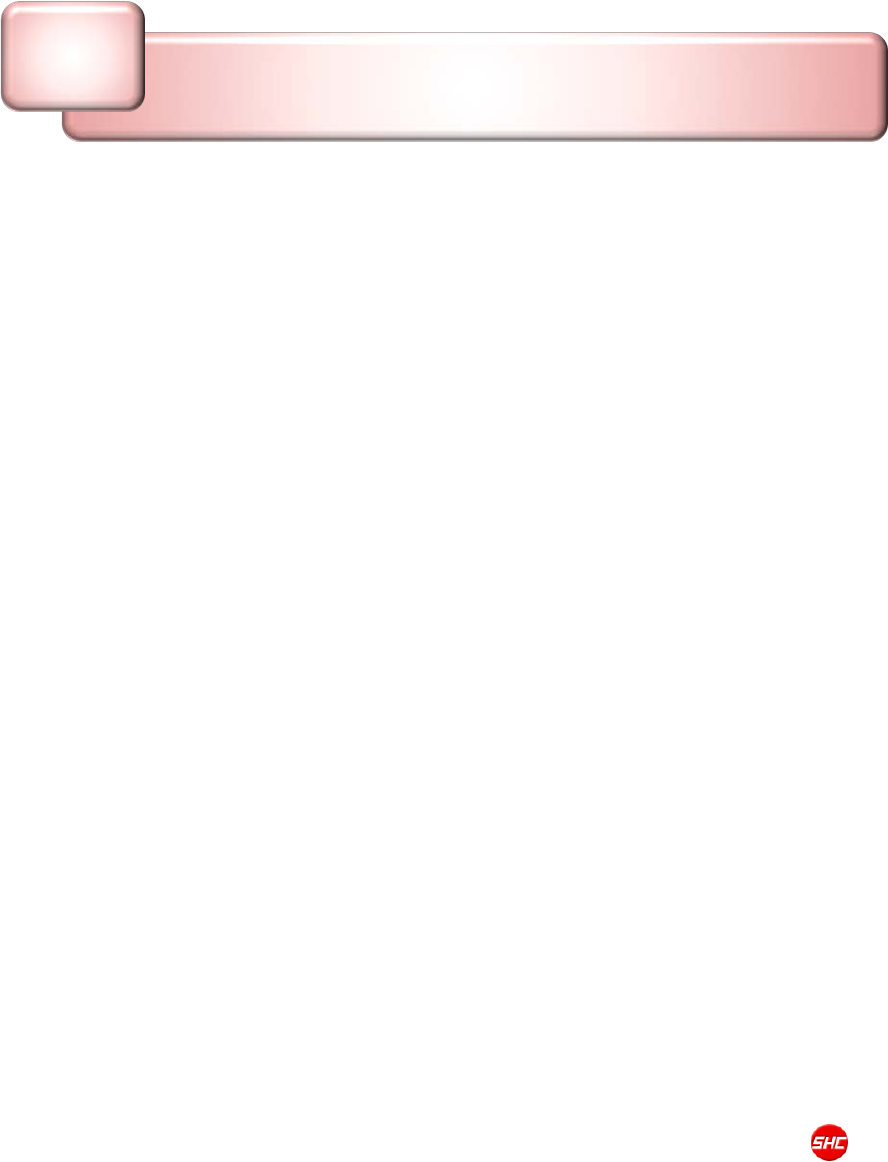
STM-8800 User Manual 2009 Copyright © Shinheung Precision Co., Ltd
Terminal settings, how to optimize …
Ⅳ
1. Background image
2. Brightness
3. Volume and Sounds
4. Screen
5.Bluetooth
6. Scanner
7. Pictures and Videos
30
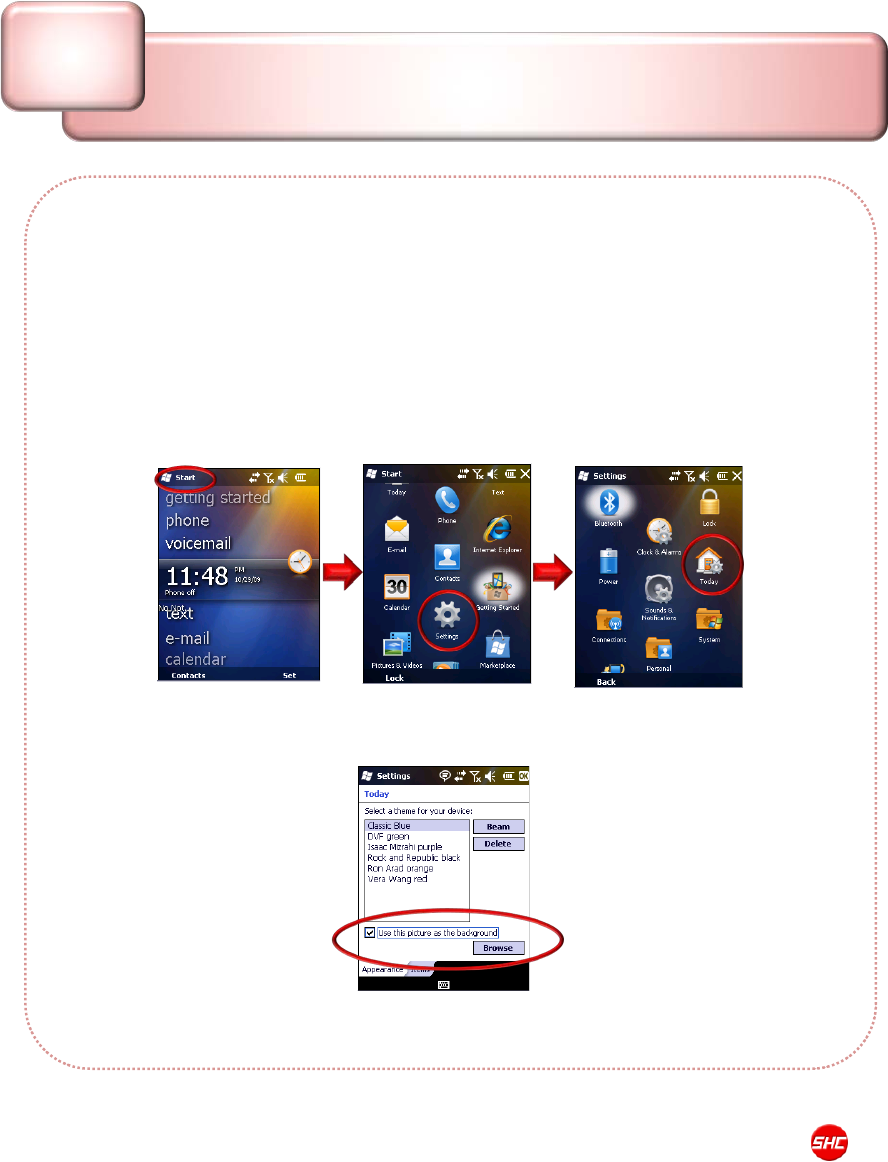
STM-8800 User Manual 2009 Copyright © Shinheung Precision Co., Ltd
▶ Select a background image for the Today screen
You can add a favorite picture or other image to your device and use it as a
background image for your Today screen display. Be aware that background
pictures can make it harder to read text on the Today screen.
Note #1: When you use the camera to take a picture, you can tap Menu > Set as
Today Background. When you do this, you can select the degree of transparency
you want when the picture is used as a background image.
1. Tap Start > Settings > Today.
2. Select the Use this picture as the background check box and tap
Browse to view a list of your picture files.
Background Image
Ⅳ-1
31
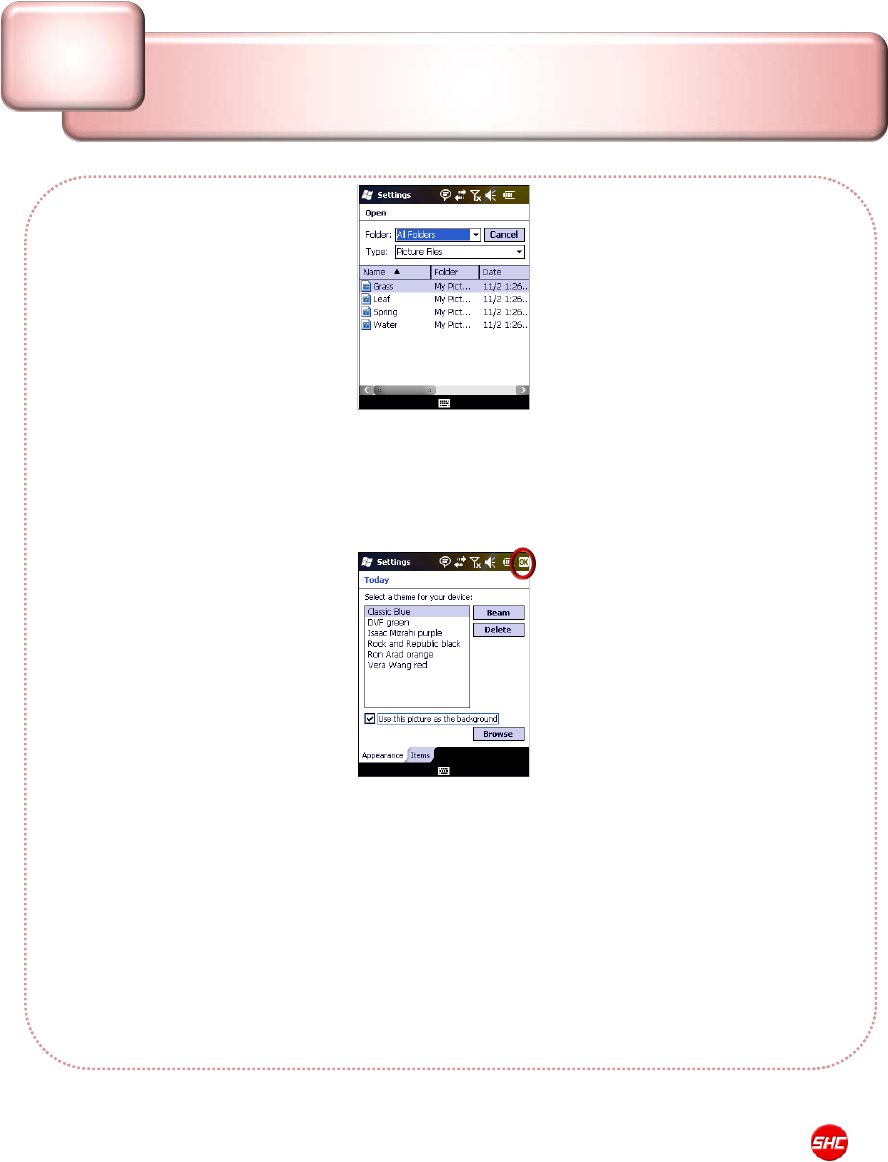
STM-8800 User Manual 2009 Copyright © Shinheung Precision Co., Ltd
3. In Folder, select the folder that contains the picture you want to use.
4. In Type, select the file type of the picture.
5. Tap the file name of the picture you want to use.
6. Tap OK.
Note #2: To revert to the default background, tap Start > Settings > Today. Under
Select a theme for your device, tap Windows Default. Clear the Use this picture
as the background check box, and then tap OK.
Note #3: When you use the camera to take a picture, you can tap Menu > Set as
Today Background. When you do this, you can select the degree of transparency
you want when the picture is used as a background image.
Background Image
Ⅳ-1
32
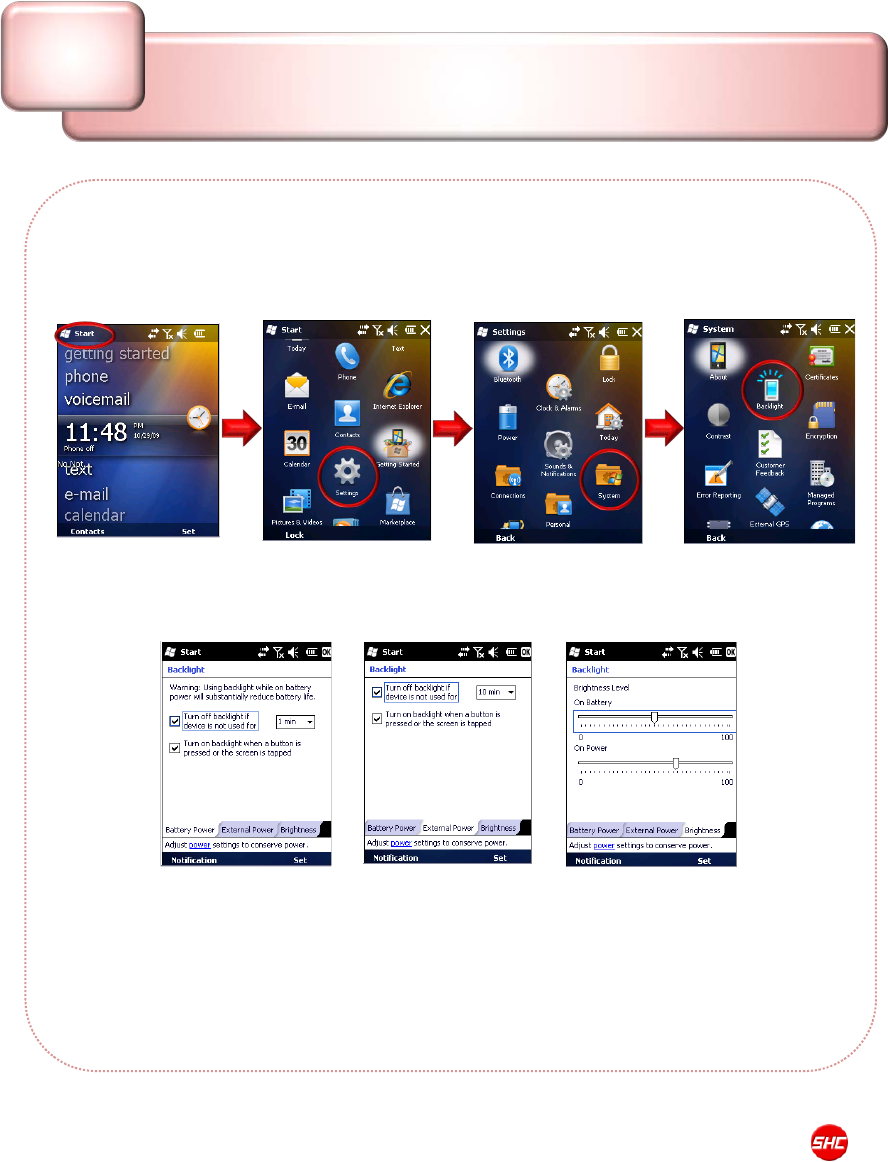
STM-8800 User Manual 2009 Copyright © Shinheung Precision Co., Ltd
Adjust power-management settings to decrease screen brightness and also
how long the backlight and screen displays stay on.
1. Tap Start > Settings > System > Backlight.
2. In the Battery Power and External Power Tabs, specify how long the
backlight will stay on. Also specify if pressing a button or tapping the
screen turns on the backlight.
3. In the Brightness Tab, set the brightness level of the backlight when “On
Battery” and on external power source (“On Power”).
4. When you are done, tap on the [OK] button to accept/save the changes
made on the window.
Brightness
Ⅳ-2
33
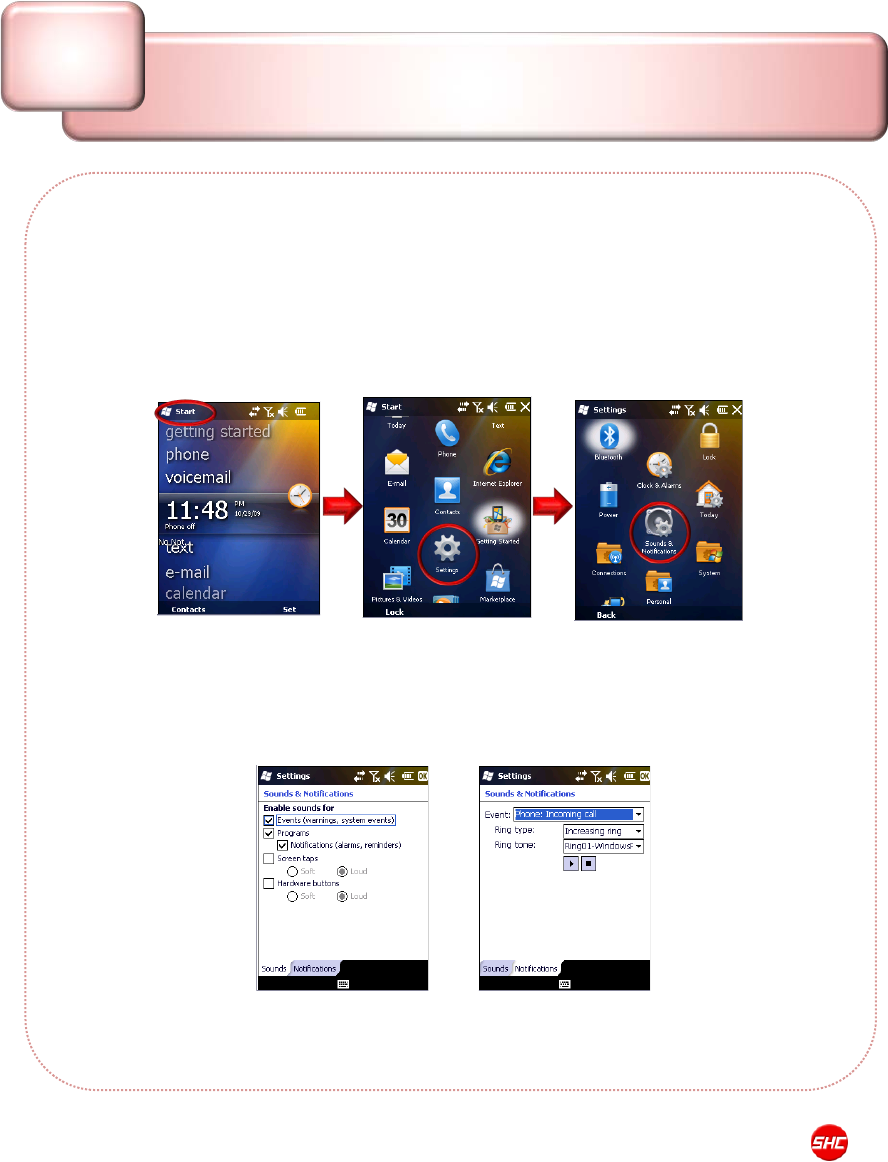
STM-8800 User Manual 2009 Copyright © Shinheung Precision Co., Ltd
▶ Set up sounds
You can set up sounds on your device and associate them with events.
These include incoming calls, reminders, new e-mail messages, new text
messages, new voice messages, and warnings. Each event can have a
distinctive sound to help you identify the event by its sound.
1. Tap Start, tap Settings, and then tap Sounds & Notifications.
2. On the Sounds tab, select the check box for each type of item for
which you want to enable a sound.
3. On the Notifications tab, in Event, tap an event name and select how
you want to be notified by selecting the appropriate Ring Type and
Tone.
Note: Turning off sounds helps to conserve battery power.
Volume and Sounds
Ⅳ-3
34
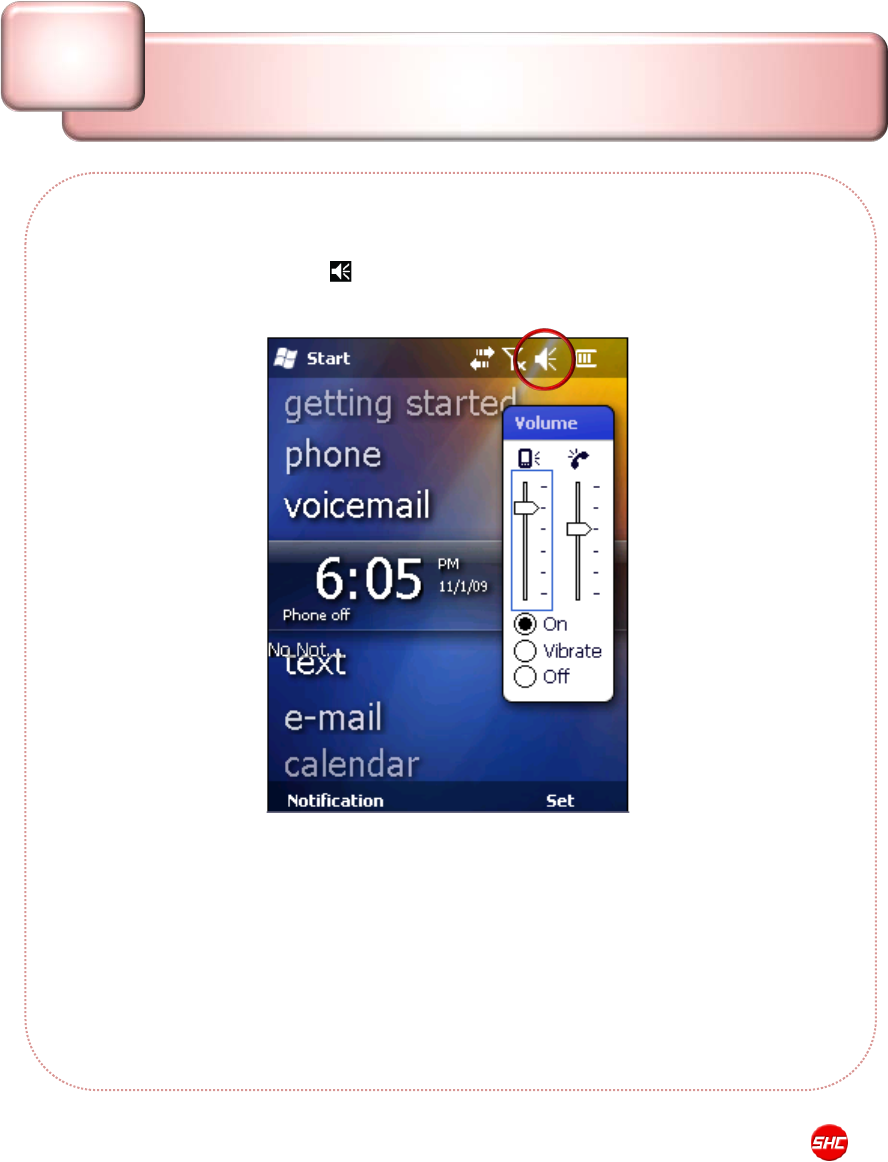
STM-8800 User Manual 2009 Copyright © Shinheung Precision Co., Ltd
▶ Set up volume
Tap the
Speaker On
icon ( ) to access the onscreen Volume slider and
adjust the volume level.
Volume and Sounds
Ⅳ-3
35
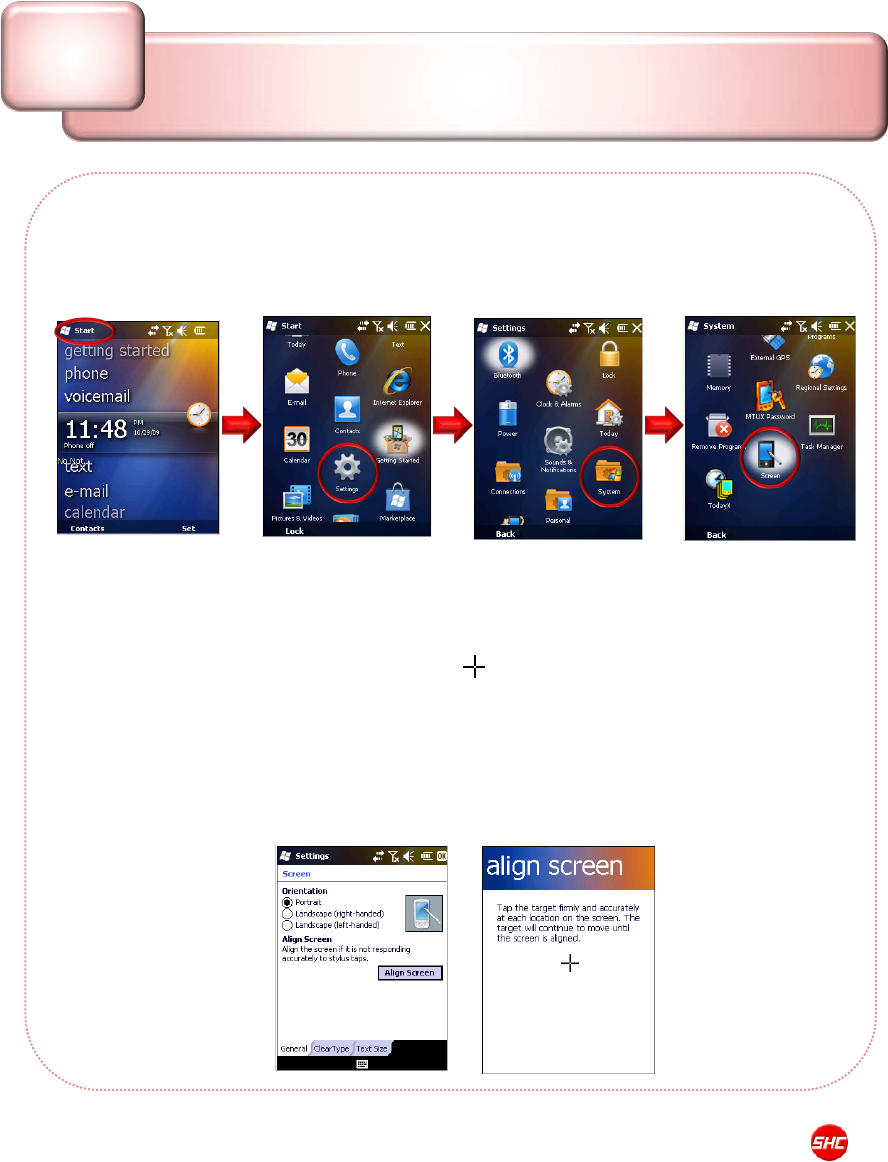
STM-8800 User Manual 2009 Copyright © Shinheung Precision Co., Ltd
If the screen do not respond to touches made on it or the touches are off-
point, the touch screen is needed to be calibrated to set the touch points
properly.
1. Tap Start > Settings > System > Screen.
2. Set/configure the touch points in the General Tab.
3. Tap on the Align Screen button to start calibrating the touch points.
4. Using the stylus pen, tap the target ( ) firmly and accurately at each
location on the screen. The target will continue to move until the screen
is aligned. When the target disappears, tap the screen once to complete
the calibration process.
5. When you are done, tap on the OK button to accept/save the changes
made on the window.
Screen
Ⅳ-4
36
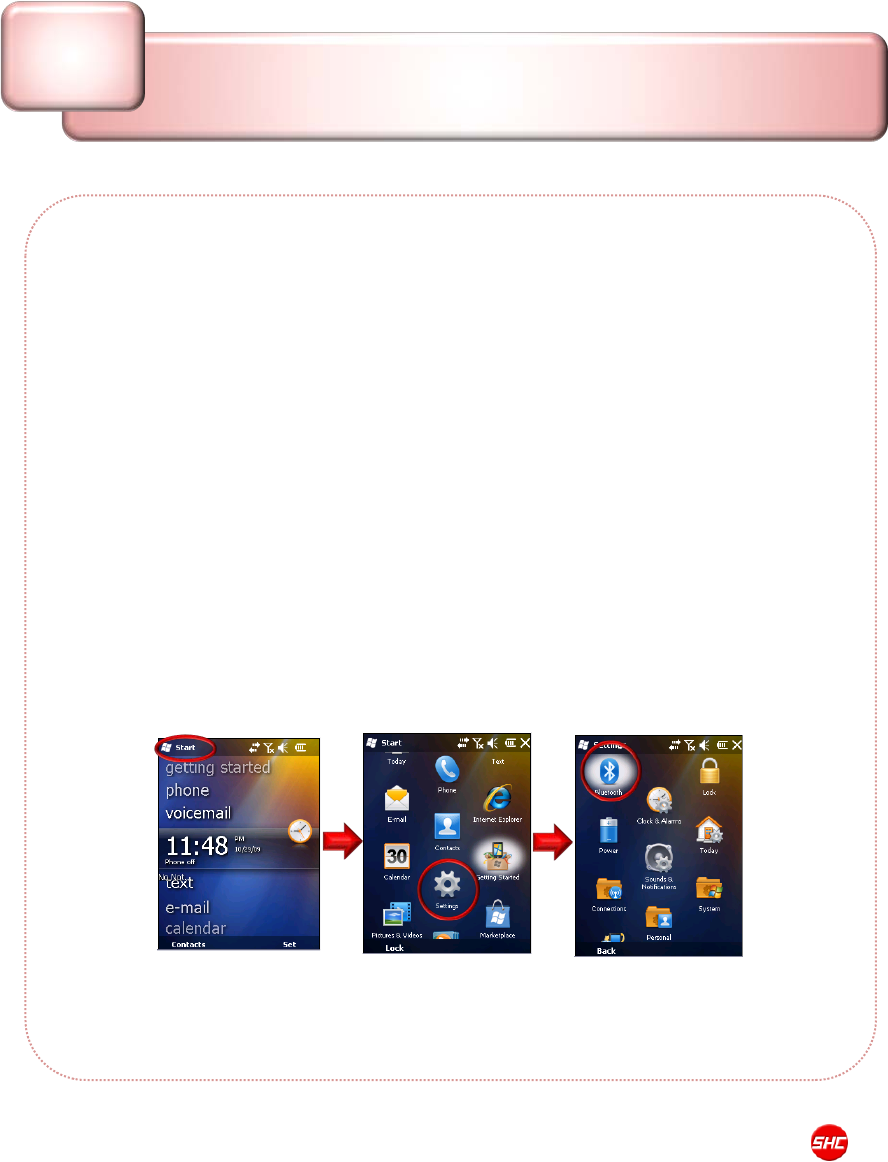
STM-8800 User Manual 2009 Copyright © Shinheung Precision Co., Ltd
▶ Bluetooth Connections
You can connect your device to other Bluetooth-enabled accessories and
devices, such as headsets, GPS devices, mobile phones, and computers.
Bluetooth beams information, letting your device communicate with other
devices.
▶ Turn Bluetooth on or off
If the wireless carrier enables Bluetooth on your device, you can establish a
Bluetooth partnership with other Bluetooth-enabled devices and access
other Bluetooth services.
After you turn it on, Bluetooth will be turned on every time that you turn on
your device. If you want, you can turn off Bluetooth manually. After you turn
it off, Bluetooth stays turned off until you turn it on again.
1. Tap Start > Settings > Bluetooth.
37
Bluetooth
Ⅳ-5
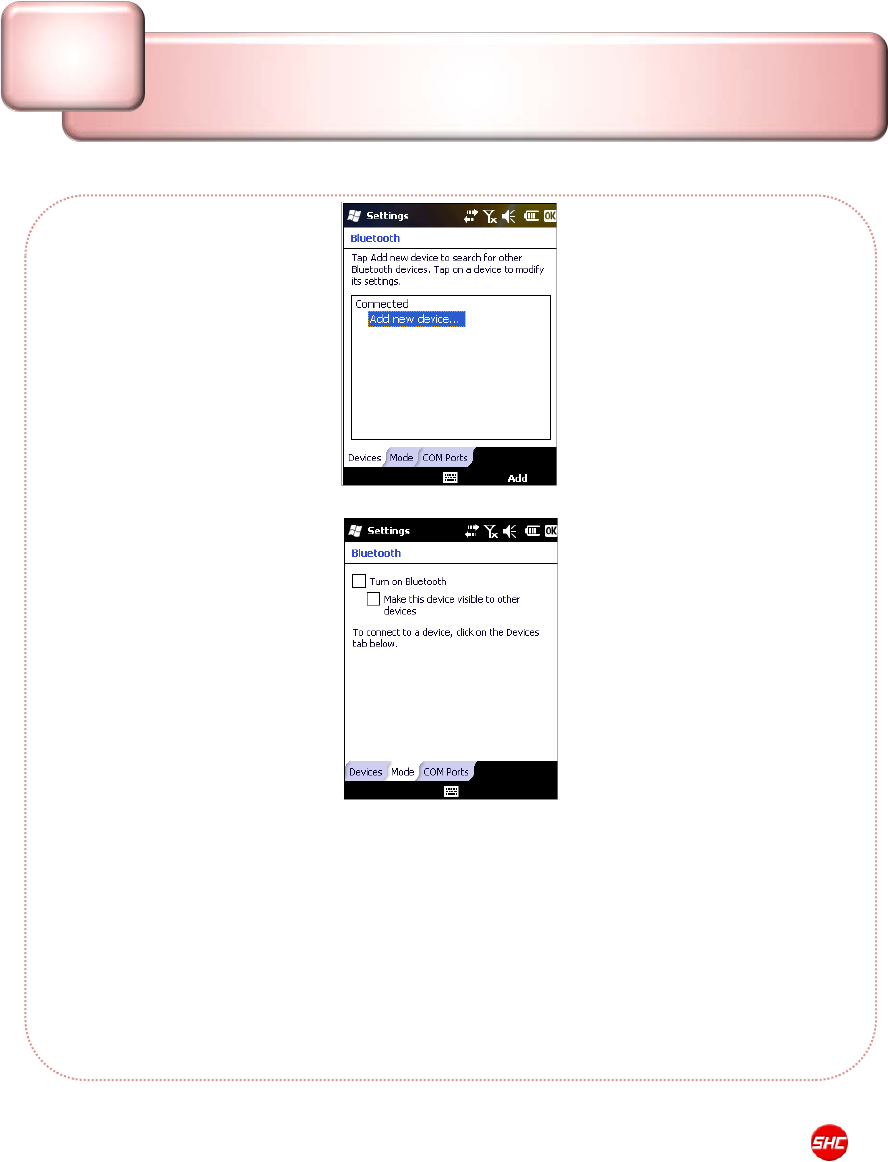
STM-8800 User Manual 2009 Copyright © Shinheung Precision Co., Ltd
2. Tap the Mode tab.
3. Select or clear the Turn on Bluetooth check box.
4. Tap OK.
Note #1: When you turn your device on, it can detect other devices that use
Bluetooth, but other devices will be unable to detect your device unless you have
set your device to be visible to other devices.
Note #2: You can also turn Bluetooth on or off using Wireless Manager.
38
Bluetooth
Ⅳ-5
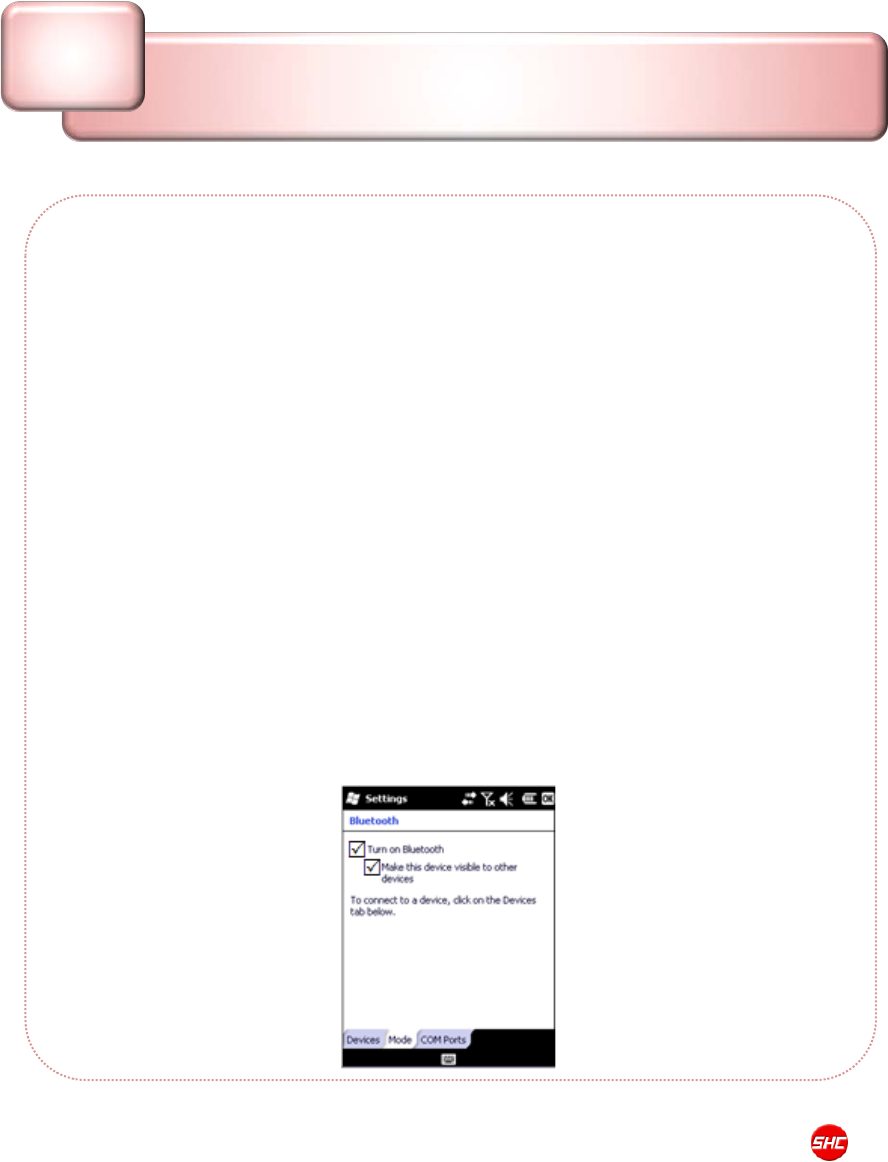
STM-8800 User Manual 2009 Copyright © Shinheung Precision Co., Ltd
▶ Make your device visible to other devices
If Bluetooth is enabled on your device and you turn it on, you can detect
and connect to other nearby Bluetooth-enabled devices and services. On
your device, you must set Bluetooth to visible to enable other Bluetooth
devices to detect it and to establish Bluetooth partnerships.
For improved security, leave your device set to invisible unless you are
establishing new partnerships, and turn off visibility after partnerships have
been established.
1. Tap Start > Settings > Bluetooth.
2. Tap the Mode tab.
3. Select the Turn on Bluetooth check box, and then select the Make this
device visible to other devices check box.
4. Tap OK.
Note : If you no longer want your device to be visible, clear the Make this device
visible to other devices check box.
39
Bluetooth
Ⅳ-5
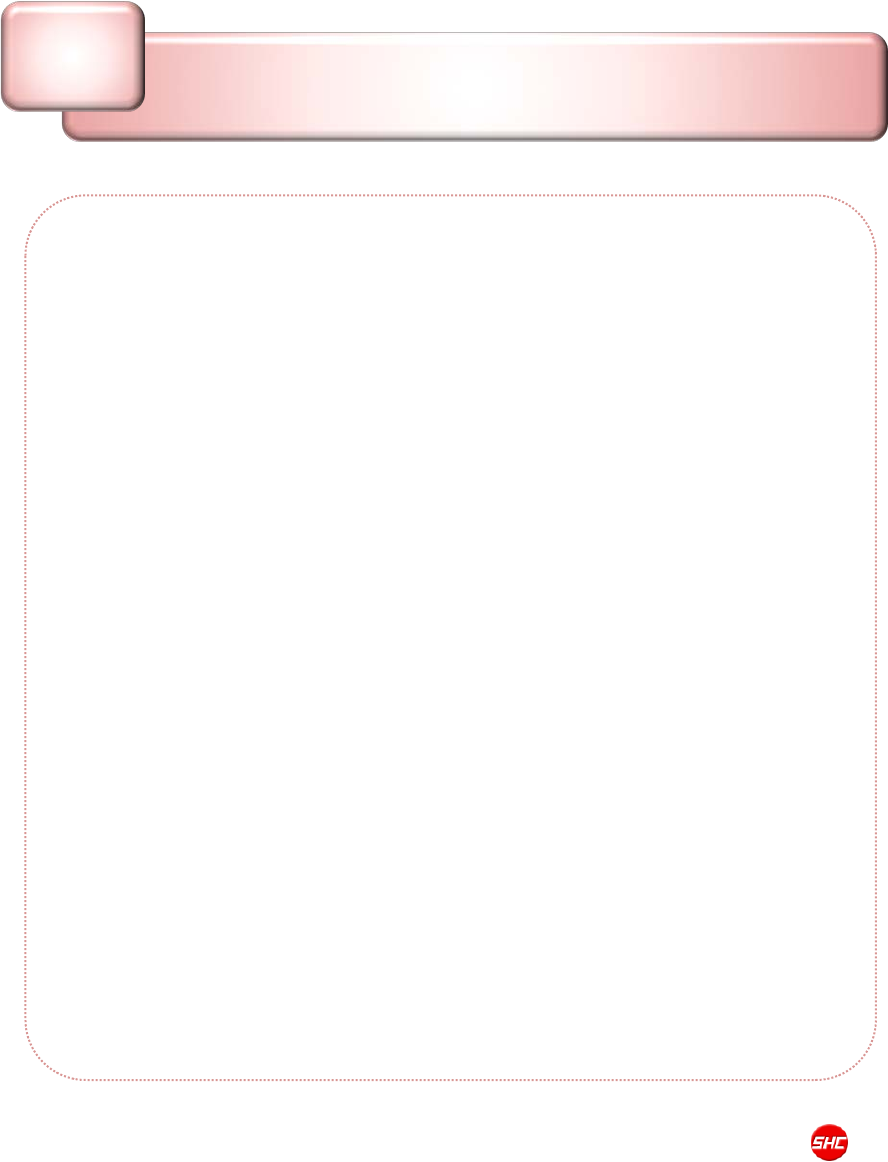
STM-8800 User Manual 2009 Copyright © Shinheung Precision Co., Ltd
▶ Set up a Bluetooth accessory
You can use Bluetooth-enabled accessories such as headsets, stereo
headsets, car kits, and Global Positioning System (GPS) devices with your
device by creating a Bluetooth partnership between your device and the
Bluetooth accessory.
1. Turn on your device and the accessory and position them within several
feet of one another.
2. Tap Start > Settings > Bluetooth.
3. Tap the Devices tab.
4. Tap Add new device. Your device searches for other Bluetooth-enabled
devices and displays them in a list.
5. Tap the name of the Bluetooth-enabled accessory, and then tap Next.
6. In the Passcode field, enter the passcode for the accessory. A passcode
is a numbers-only password that helps to increase security. You can find
the passcode in the manufacturer's documentation. Tap Next.
7. Tap OK.
40
Bluetooth
Ⅳ-5
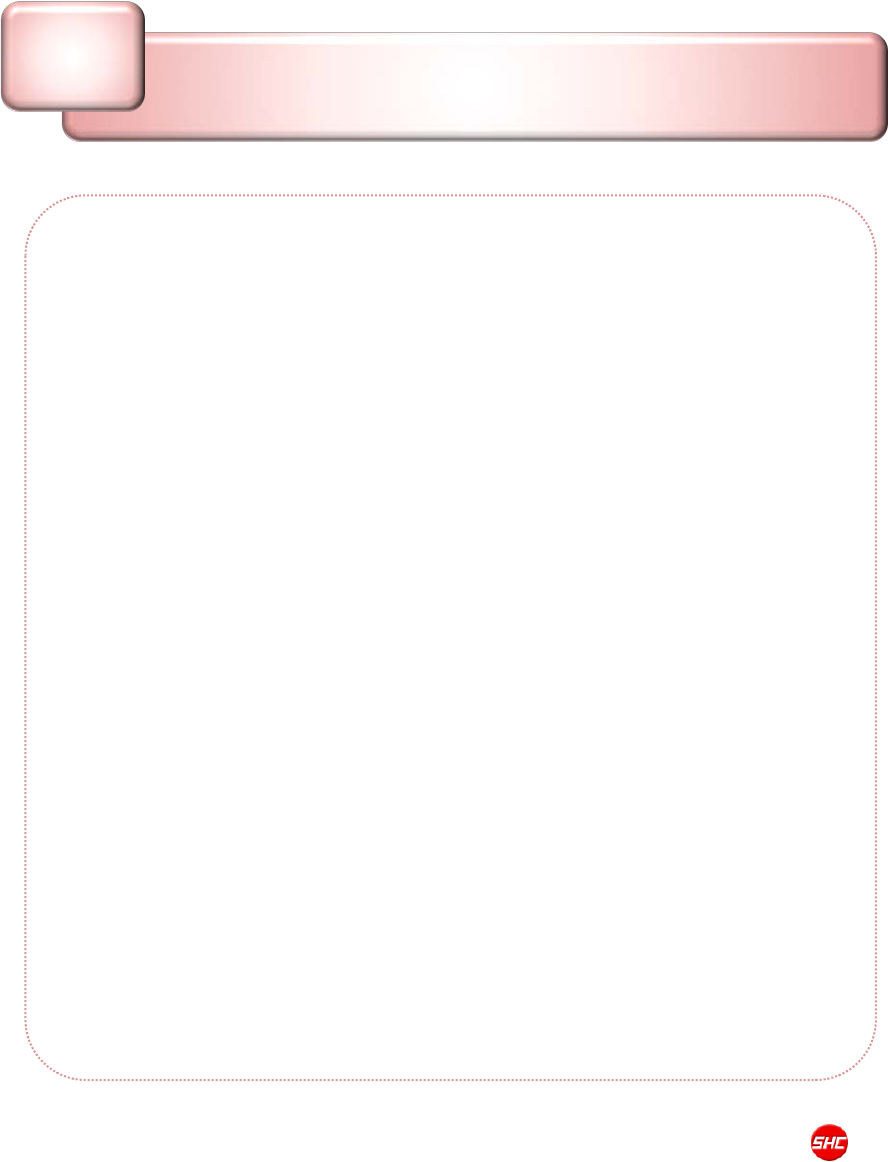
STM-8800 User Manual 2009 Copyright © Shinheung Precision Co., Ltd
▶ Set up a Bluetooth partnership
If the wireless carrier enables Bluetooth on your device, you can establish a
Bluetooth partnership with other Bluetooth-enabled devices.
After you have created a Bluetooth partnership, the two devices will
automatically reconnect when in range unless you turn off Bluetooth, move
your device out of range, or delete the partnership.
1. Make sure both Bluetooth devices are set to Visible and are within
range.
2. Tap Start > Settings > Bluetooth.
3. Tap the Devices tab.
4. Tap Add new device. Your device searches for other Bluetooth-enabled
devices and displays them in a list.
5. Scroll to the device that you want to add and tap Next.
6. Enter a passcode if you want one and tap Next. A passcode is a
numbers-only password that helps to increase security. The same
passcode must be entered on the device accepting the partnership.
7. Enter the display name that you want, and then tap Finish.
41
Bluetooth
Ⅳ-5
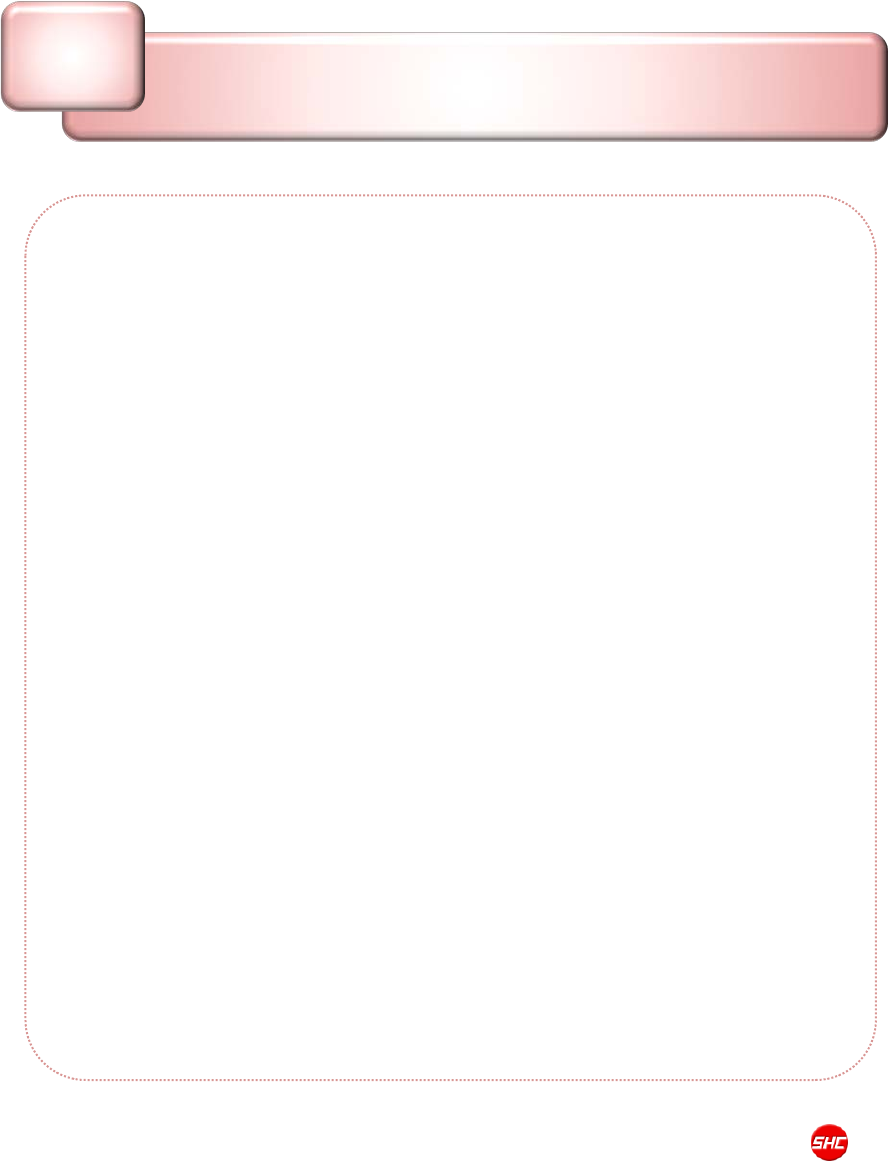
STM-8800 User Manual 2009 Copyright © Shinheung Precision Co., Ltd
▶ Accept a Bluetooth partnership
If the wireless carrier enables Bluetooth on your device, you can establish a
Bluetooth partnership with other Bluetooth-enabled devices.
1. Make sure both Bluetooth devices are set to Visible and are within
range.
2. When you are prompted to accept a Bluetooth partnership with another
device, tap Yes.
3. When you are prompted, enter a passcode (a numbers-only password) if
you want to use one, and then tap Next. Using a passcode helps
improve security. If a passcode is required on the device requesting the
partnership, you must both use the same passcode.
4. Enter a display name to identify the partner device, and then tap Finish.
▶ Delete a Bluetooth partnership
You can delete a Bluetooth partnership that you previously established with
another Bluetooth-enabled device.
1. Tap Start > Settings > Bluetooth.
2. Tap the Devices tab.
3. Tap and hold the device partnership until you see a menu, and then tap
Delete.
4. Tap Yes to confirm.
42
Bluetooth
Ⅳ-5
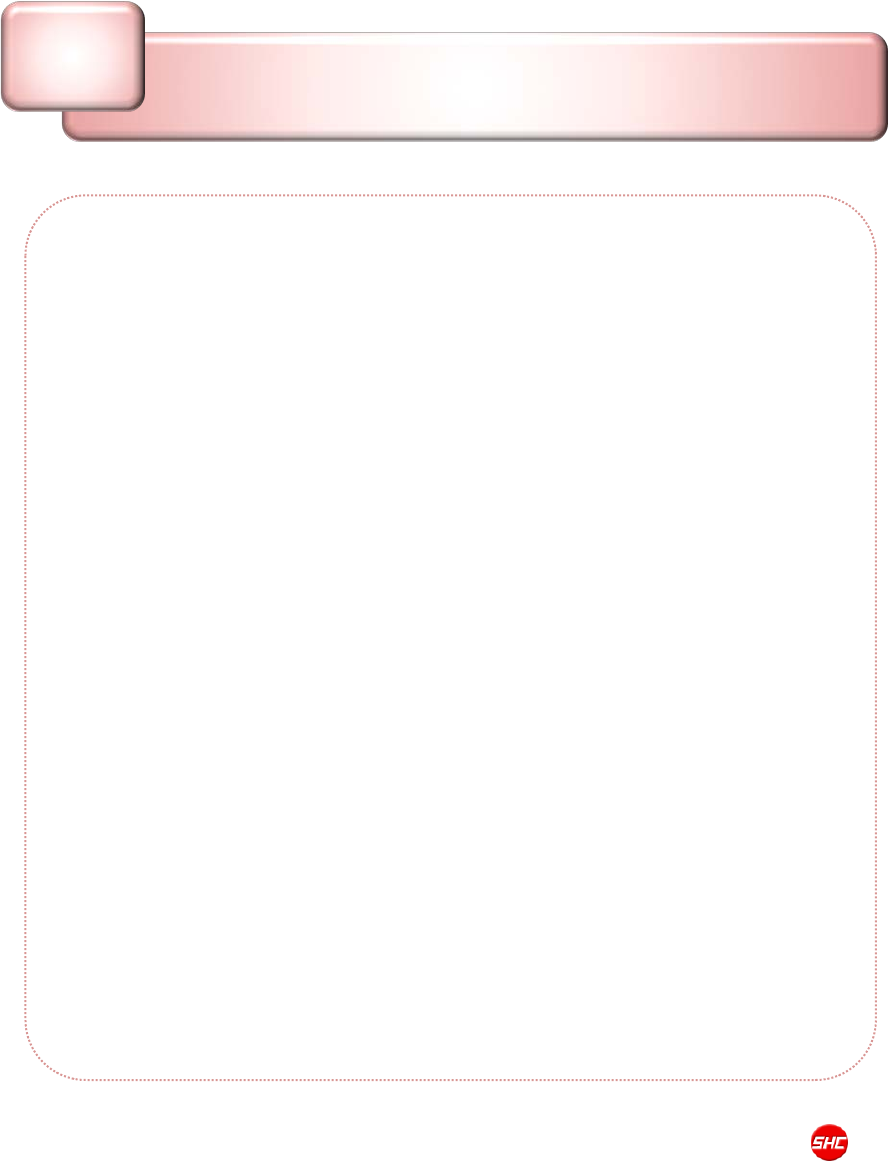
STM-8800 User Manual 2009 Copyright © Shinheung Precision Co., Ltd
▶ Rename a Bluetooth partnership
If you have multiple Bluetooth partnerships on your device, you can give
each partnership a unique name to identify it, such as My PC or Bob's
Phone.
1. Tap Start > Settings > Bluetooth.
2. Scroll to the device that you want to rename, tap and hold the device
name until you see a menu, and then tap Edit.
3. In the Display Name field, enter a new name for the device, and then
tap Save.
4. Tap OK.
43
Bluetooth
Ⅳ-5
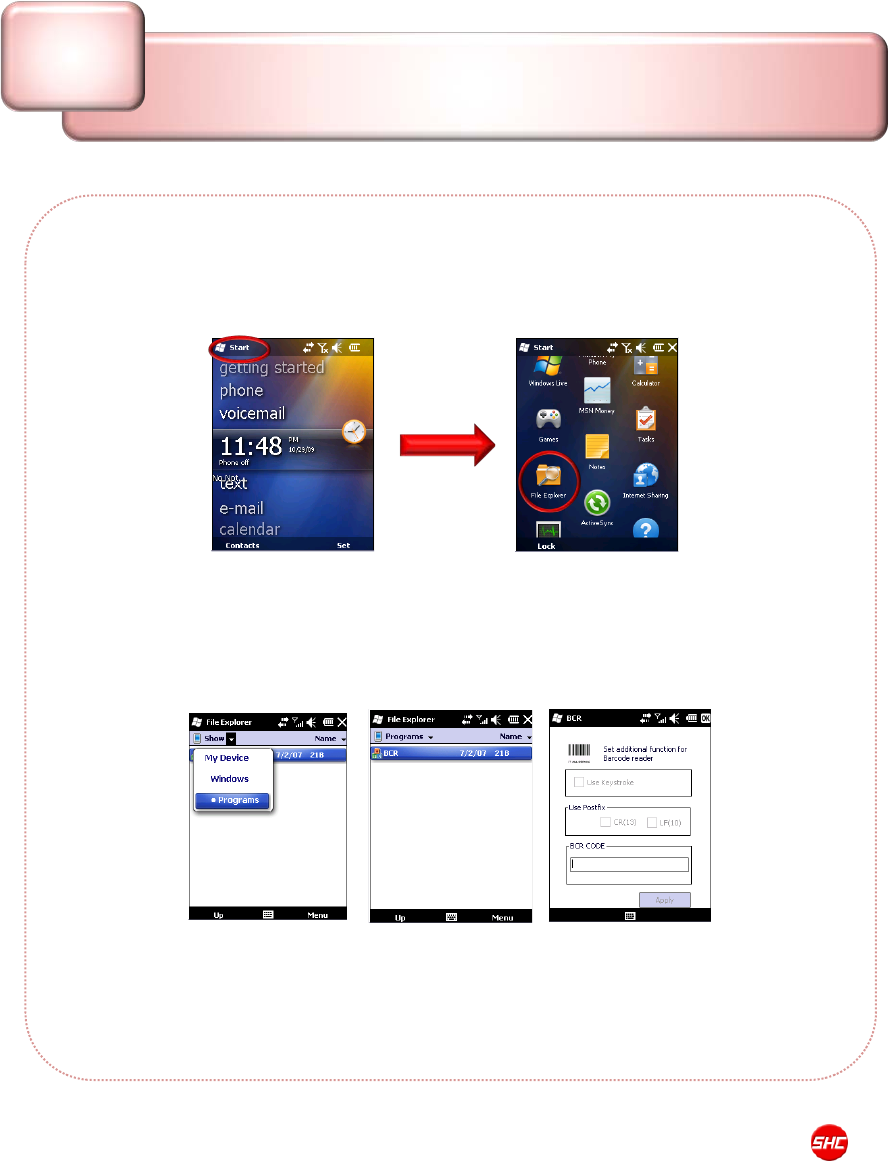
STM-8800 User Manual 2009 Copyright © Shinheung Precision Co., Ltd
▶ Run File Explorer
You need to run the file explorer to locate for the BCR application file. To
do this, tap Start > File Explorer.
▶ Bar Code Scanner Application
The Bar Code Scanner application is named BCR.exe. This file is located in
the My Device > Windows > Programs folder. To run the Bar Code
scanner application, tap BCR.
To activate the scanner, point the device to the barcode to be scanned then
press the Right-S button.
44
Scanner
Ⅳ-6
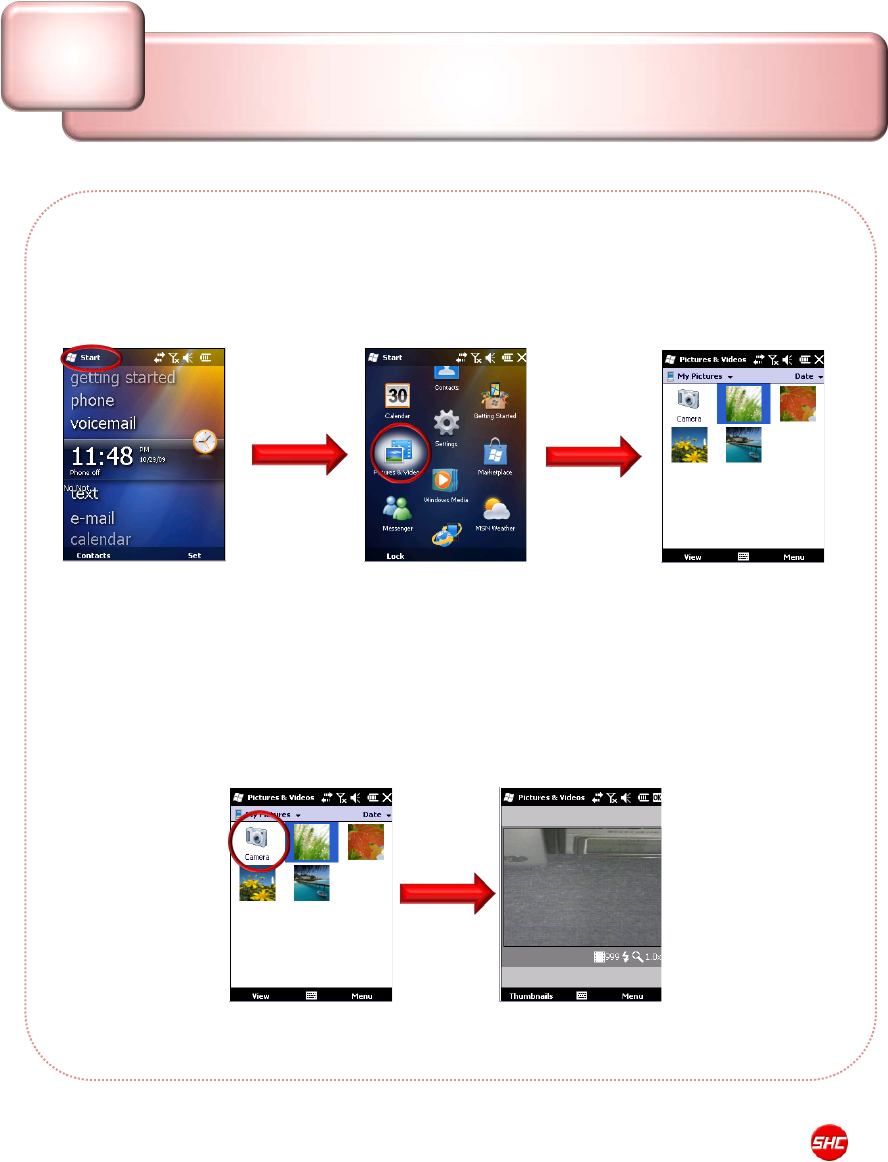
STM-8800 User Manual 2009 Copyright © Shinheung Precision Co., Ltd
▶ Pictures and Videos
Let your device capture and display those vacation photos and video. This
can be accomplish by tapping on Start, and then Pictures & Videos.
▶ Easily capture, find, view, and manage pictures and videos on your
device
1. Activate the Camera Application
Capture pictures and video with the camera application. From the
Pictures & Videos folder, tap on Camera.
45
Pictures and Video
Ⅳ-7
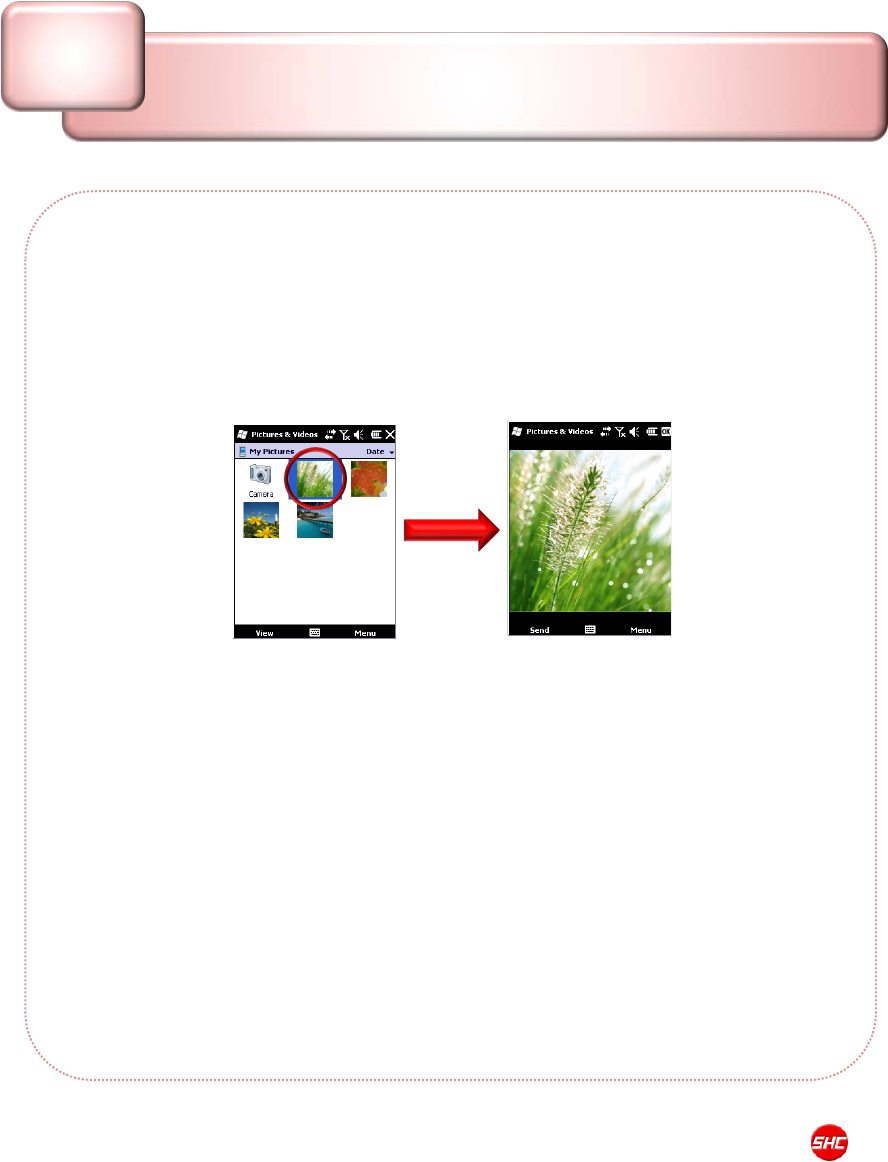
STM-8800 User Manual 2009 Copyright © Shinheung Precision Co., Ltd
2. View a photo
a. The Pictures & Videos folder displays thumbnails of your saved
photos.
b. Tap the photo you want to view. The photo will become larger to
fit the screen.
3. Play a video clip
a. The Pictures & Videos folder displays thumbnails of your saved
photos and videos.
b. Tap the video you want to play.
The video starts to play in the media player.
c. To return to the Pictures & Videos folder, close the media player.
46
Pictures and Video
Ⅳ-7
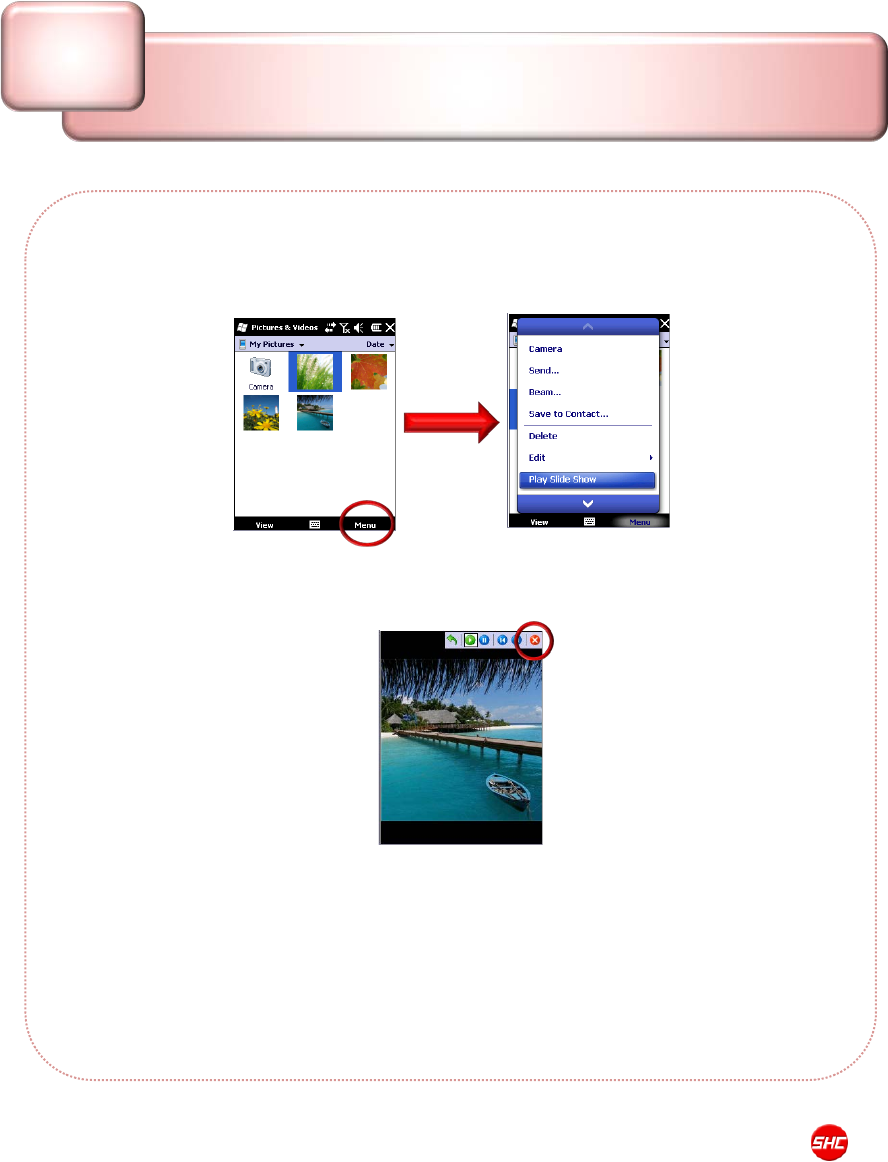
STM-8800 User Manual 2009 Copyright © Shinheung Precision Co., Ltd
4. View a slide show
a. From Pictures & Videos folder, tap Menu > Play Slide Show.
b. To end the slide show, tap the screen and then tap the close icon.
47
Pictures and Video
Ⅳ-7
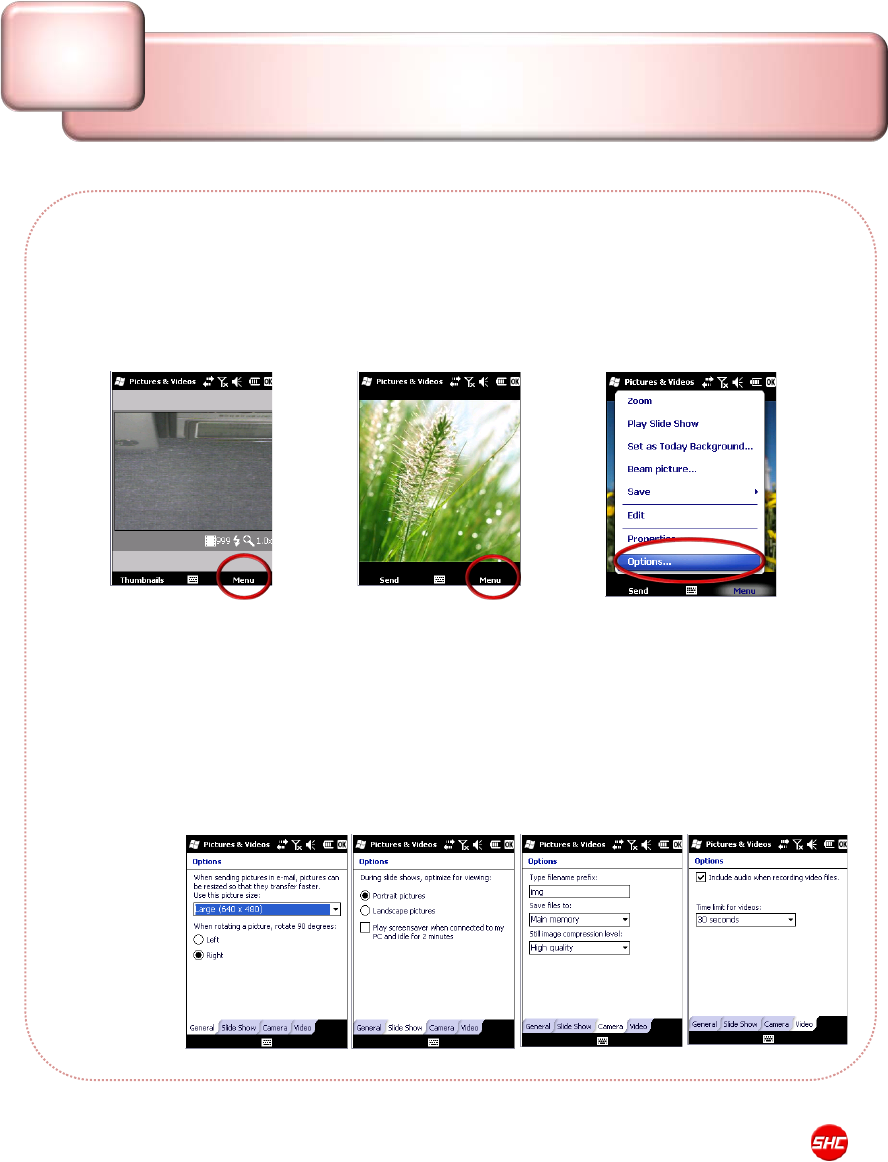
STM-8800 User Manual 2009 Copyright © Shinheung Precision Co., Ltd
▶ Customize picture file settings
1. The Pictures & Videos folder displays thumbnails of the camera
application icon, your saved photos and videos. Scroll to the picture or
video that you want or run camera application.
2. Tap Menu > Options, and then do one of the following:
a. To change the picture size for sending in e-mail or to rotate a
picture 90 degrees, tap the General tab.
b. To select picture orientation during a slide show or to set a slide
show as a screensaver when you are connected to your computer,
tap the Slide Show tab.
3. Tap OK.
48
Pictures and Video
Ⅳ-7
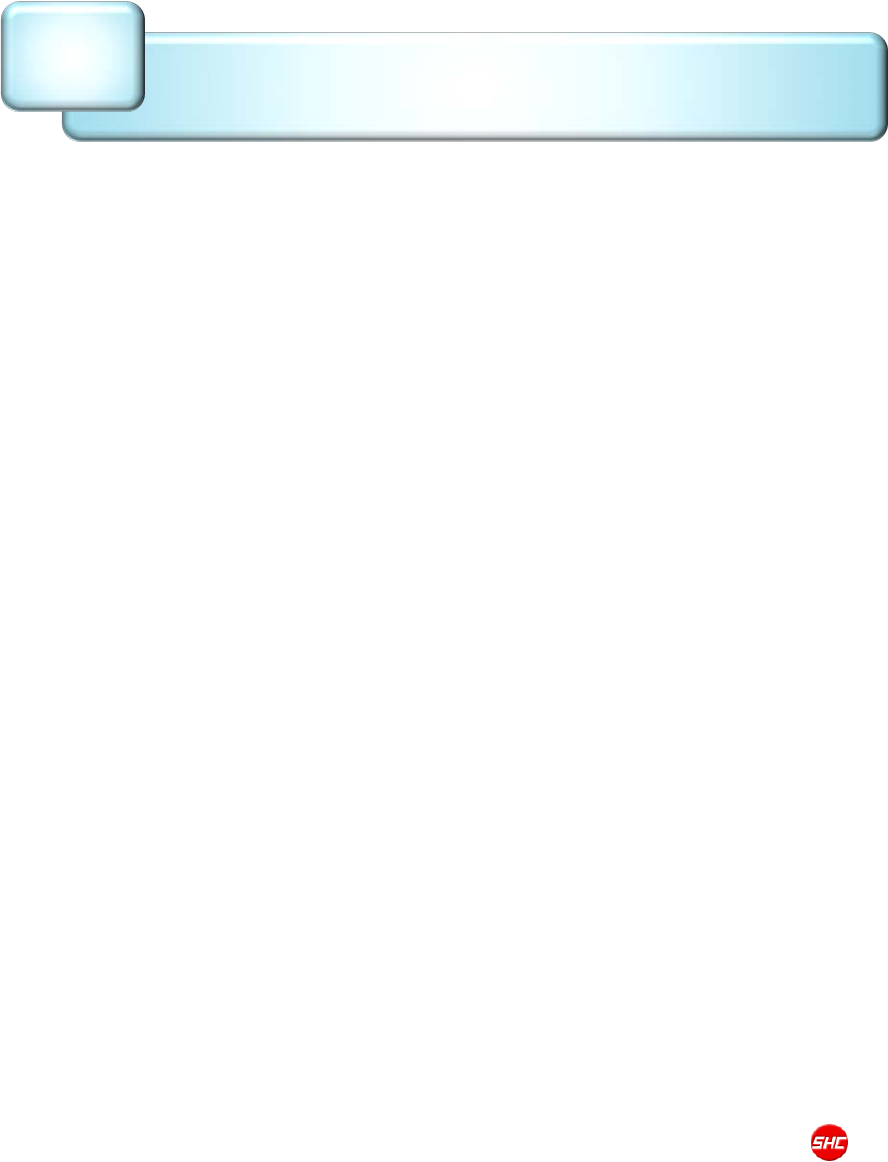
STM-8800 User Manual 2009 Copyright © Shinheung Precision Co., Ltd
Using the Phone Application
V
49
1. Running the Phone Application
2. Phone Application Screen
3. Making/Accepting Calls
4. Telephone Number
5. Entering Phone Numbers in the Directory
6. Phone Directory - Searching/Deleting Entries
7. Recent Call List Management
8. Message Management
9. Compose Message
10. Preferences
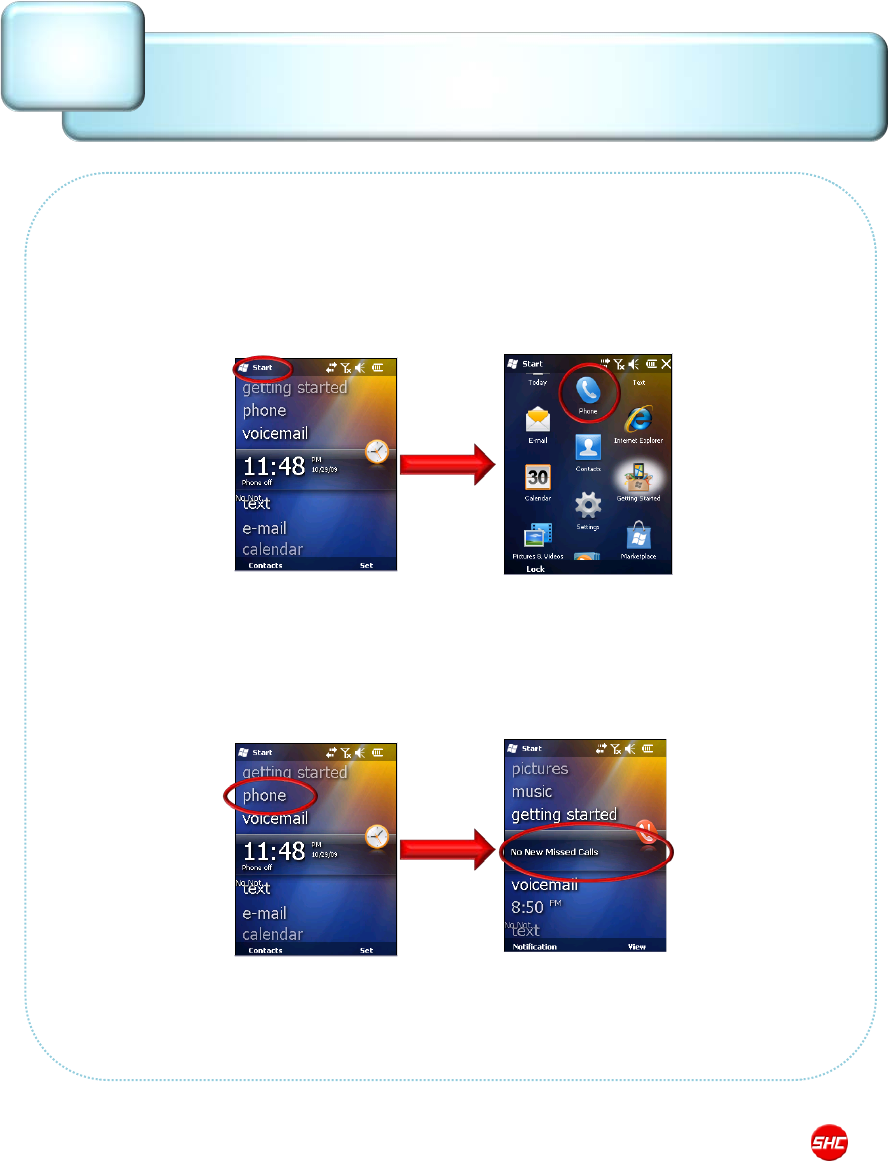
STM-8800 User Manual 2009 Copyright © Shinheung Precision Co., Ltd
Running the Phone Application
Ⅴ-1
50
▶ Running the phone application
1. Tap Start
2. Then tap Phone.
OR
1. Tap phone to place it in the middle of the screen
2. Then tap phone in the middle of the screen
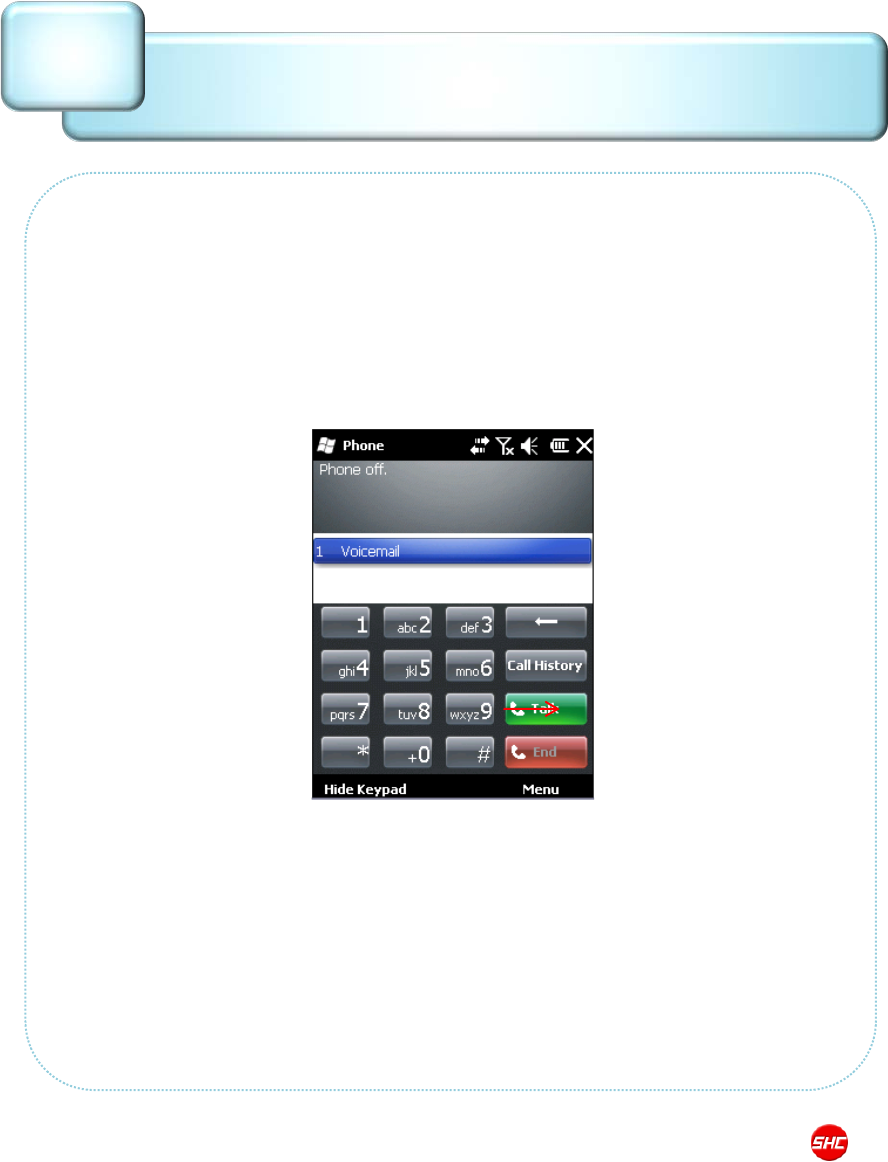
STM-8800 User Manual 2009 Copyright © Shinheung Precision Co., Ltd
Phone Application Screen
V-2
51
To make a phone call, the phone application screen displayed below can
be use to make the necessary connections.
The phone comes with a built in receiver (speaker phone) and
microphone. A headset (earphones with microphones) can be used
alternatively.
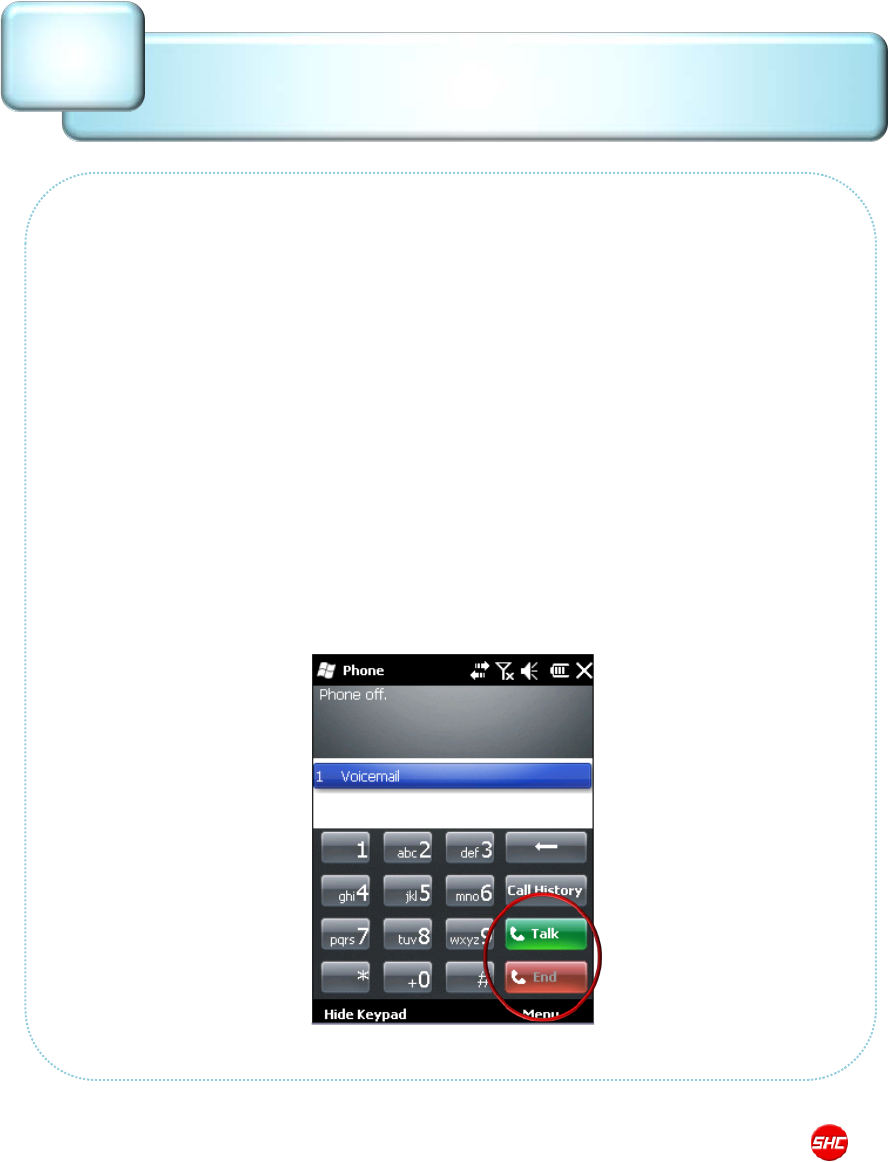
STM-8800 User Manual 2009 Copyright © Shinheung Precision Co., Ltd
Making/Accepting Calls
V-3
52
▶ Making a Call
1. Directly enter the phone number or perform a phone directory search.
2. Tap Talk.
3. When the receiving party answers, the phone call begins.
4. Tap End to terminate the call.
▶ Accepting a Call
1. When the phone rings (indicating an incoming call), tap Talk.
2. Tap End to terminate the call.
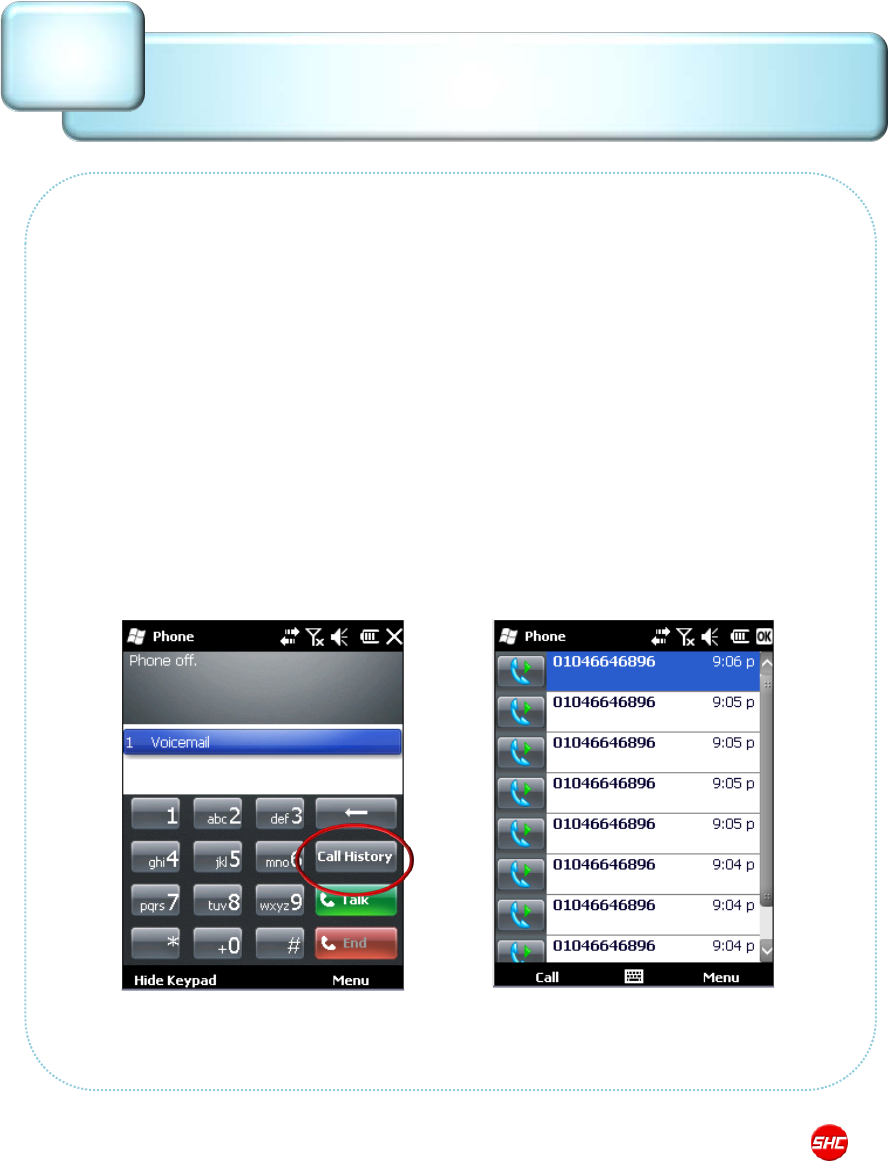
STM-8800 User Manual 2009 Copyright © Shinheung Precision Co., Ltd
Telephone Number
Ⅴ-4
53
▶ Make a call from your call history
1. Start the phone application
2. Tap Call History.
3. Scroll to the phone number or contact name that you want to call, and
then tap TALK.
Note: If call history appears to be empty, you may have turned on a filter, and no
calls fitting that filter have been logged. To see all calls, tap Menu, tap Filter, and
then tap All Calls.
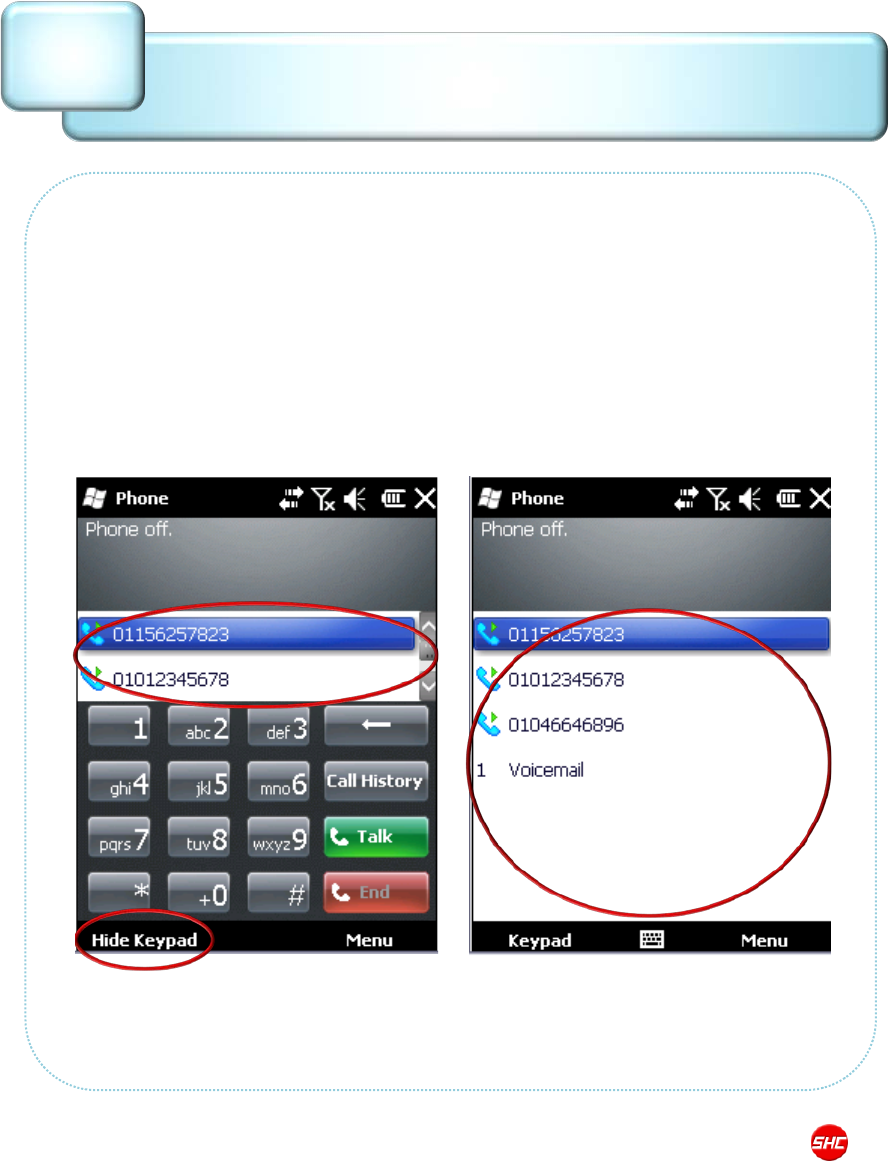
STM-8800 User Manual 2009 Copyright © Shinheung Precision Co., Ltd
Telephone Number
Ⅴ-4
54
▶ Make a call by using a recently dialed phone number
1. Start the phone application.
2. In the list above the keypad, scroll to the recently dialed number and
then tap TALK button. You can scroll down the list. To see more of the
list, tap Hide Keypad.
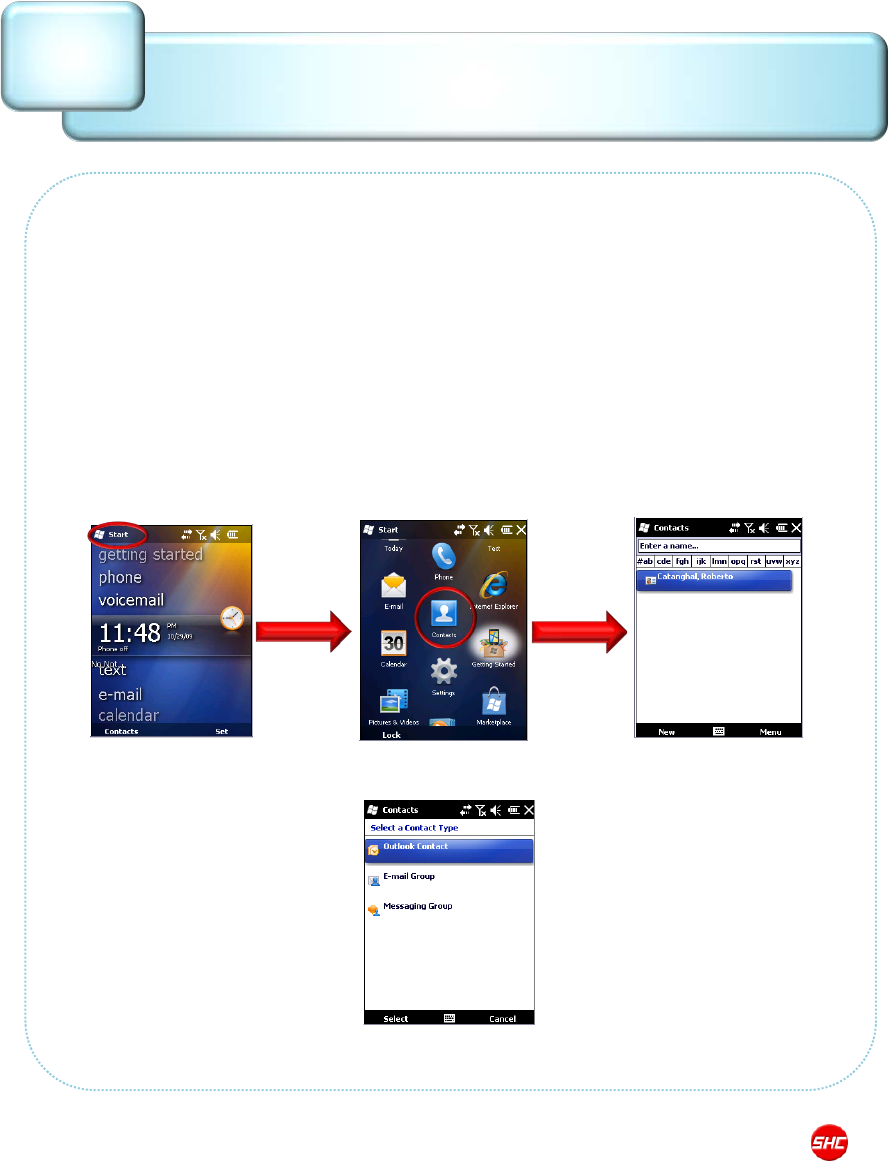
STM-8800 User Manual 2009 Copyright © Shinheung Precision Co., Ltd
Entering Phone Numbers in the
Directory
Ⅴ-5
55
▶ Add a contact
Contacts are stored on the internal device memory or on a SIM card. You
can enter many items of information for Outlook or Windows Live contacts
stored on the device, including name, work phone number, e-mail address,
company address, and birthday. For contacts kept on the SIM card, you can
save only the contact's name and phone number. If you move the SIM card
to another device, the SIM contact is moved also.
Notes: If your device does not have a removable SIM card, you can save contacts
only on the internal device memory.
1. Tap Start, tap Contacts.
2. Tap New.
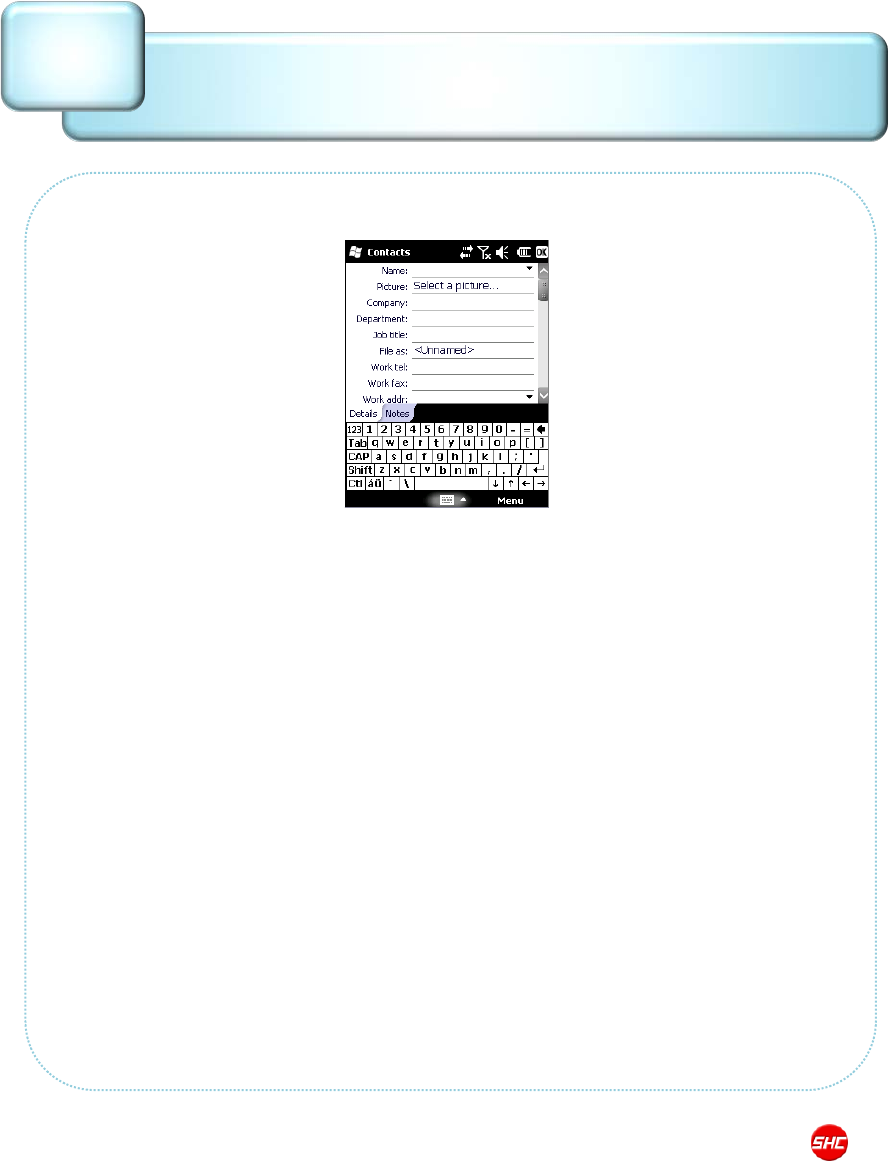
STM-8800 User Manual 2009 Copyright © Shinheung Precision Co., Ltd
Entering Phone Numbers in the
Directory
Ⅴ-5
56
3. Tap Outlook Contact or SIM Contact.
Notes: If your device does not have a SIM card and you have not set up Windows
Live, the device may skip step 3 and go directly to the information entry screen for
the contact.
4. Enter the necessary information for the contact, and then tap OK.
Notes: You can synchronize Outlook contacts by using Microsoft Exchange Server
or Microsoft Outlook on your computer. You cannot synchronize SIM contacts.
Notes: To save an existing contact to your SIM card, open the contact and tap
Menu > Save to SIM. To save a copy of an existing SIM contact to the internal
device memory, open the contact and tap Menu > Save to Contacts. Enter
information for the contact, if you want, and then tap OK.
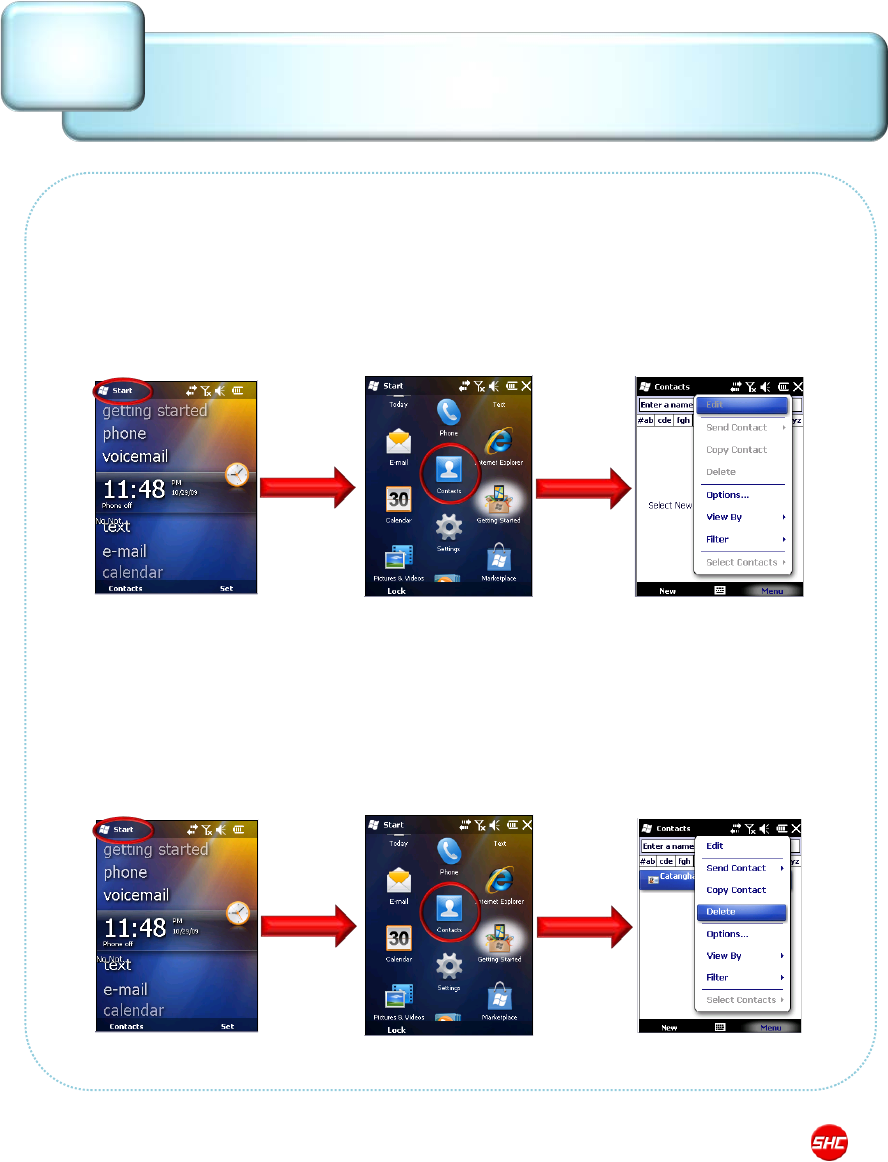
STM-8800 User Manual 2009 Copyright © Shinheung Precision Co., Ltd
Phone Directory – Viewing/Deleting
Entries
Ⅴ-6
57
▶ View or edit information about a contact
1. Tap Start > Contacts.
2. Scroll to and tap the contact you want to view or edit.
3. Tap Menu > Edit.
4. Make the changes that you want, and then tap OK.
▶ Delete a contact
You can delete contact information from your phone.
1. Tap Start > Contacts.
2. Scroll to the contact you want to delete.
3. Tap Menu > Delete Contact.
4. Tap Yes to confirm.
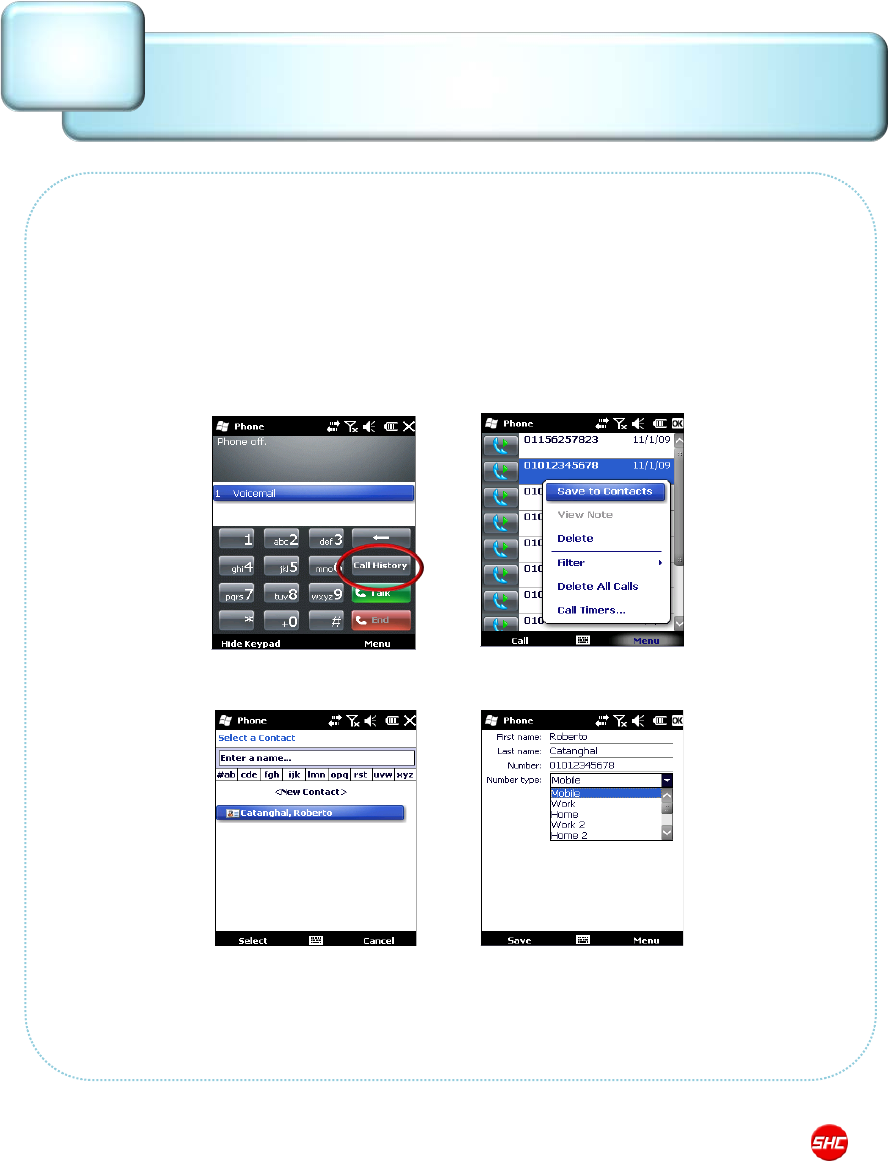
STM-8800 User Manual 2009 Copyright © Shinheung Precision Co., Ltd
▶ Save a phone number to Contacts by using call history
You can save the phone numbers of incoming and outgoing calls to your
contacts, or create a new contact from a recently dialed call.
1. Tap Start, tap Phone, and then tap Call History.
2. Scroll to the phone number you want to save and tap Menu, and then
tap Save to Contacts.
3. To add a new contact, press ENTER or scroll to the contact to which you
want to add the phone number and press ENTER.
4. Enter contact information. In the Number type field, select the phone
type for the number you are saving (for example, Work, Mobile, or
Home), enter additional information as needed, and then tap Save.
Notes: You cannot save a call to Contacts while you are on a call.
Recent Call List Management
Ⅴ-7
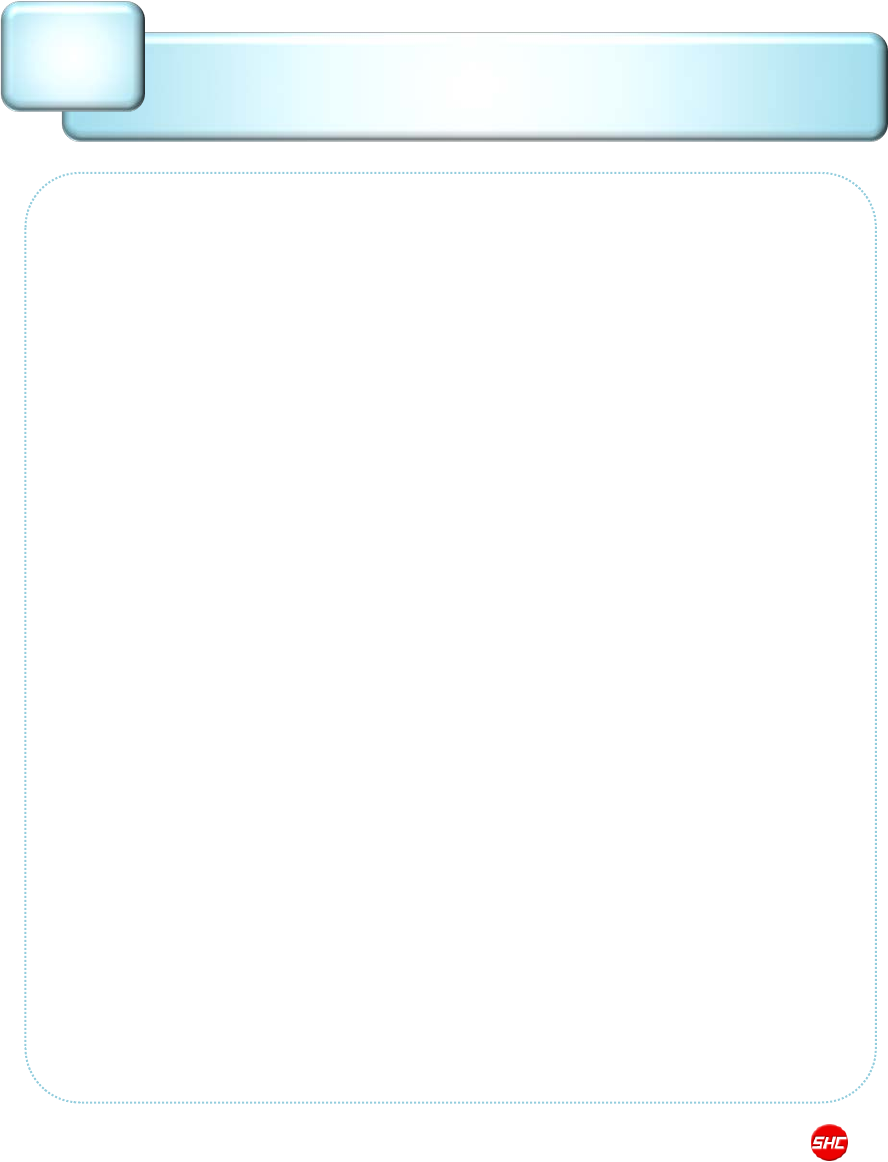
STM-8800 User Manual 2009 Copyright © Shinheung Precision Co., Ltd
Message Management
Ⅴ-8
59
▶ Overview of send and receive text messages
Your device may support dynamic text messaging services that enable you
to send Short Message Service (SMS) and Multimedia Message Service
(MMS) messages. An SMS message is a text message that contains text only,
with letters, numbers, and symbols. An MMS message is a text message that
includes any of the following:
•Color background
•Attachments of any kind
•Subject line
Notes: Text messaging is an option that your mobile service provider might require
that you pay for. Before you can send and receive text messages, your mobile
service operator must activate your text-messaging account. Text messages are
automatically received when your device is turned on. When your device is off,
messages are held by your service provider until the next time that the device is
turned on.
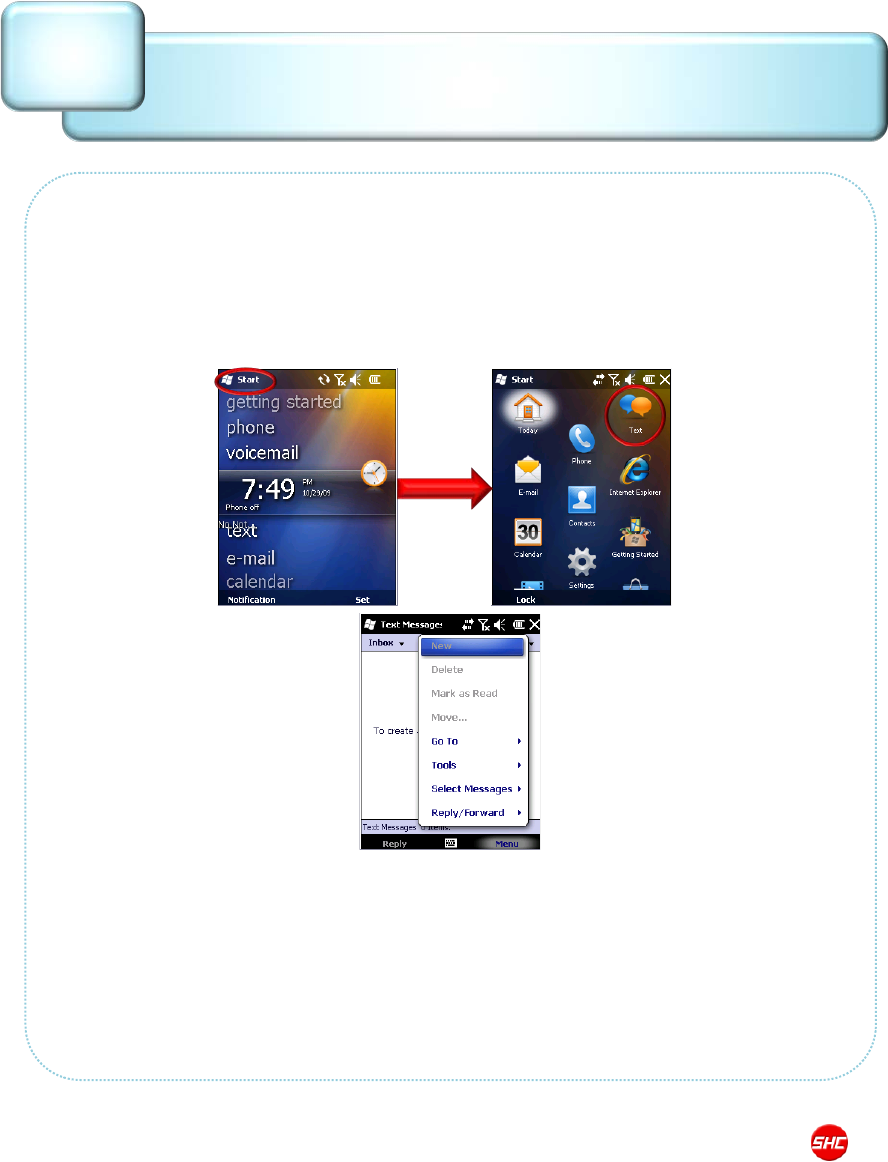
STM-8800 User Manual 2009 Copyright © Shinheung Precision Co., Ltd
Compose Message
Ⅴ-9
60
▶ Compose and send a text message
You can compose and send text messages of up to 160 characters on your
Windows Mobile phone.
1. Tap Start > Text.
2. Tap Menu > New.
3. In the To field, enter the recipient's phone number, or to insert a number
from your contacts, tap Menu > Add Recipient, and then select a name.
4. Scroll to or tap the message area and enter your message.
5. Tap Send.
Notes: A single text message can be up to 160 characters. If you compose a text
message that is longer than 160 characters, it will be sent automatically as two or
more text messages.
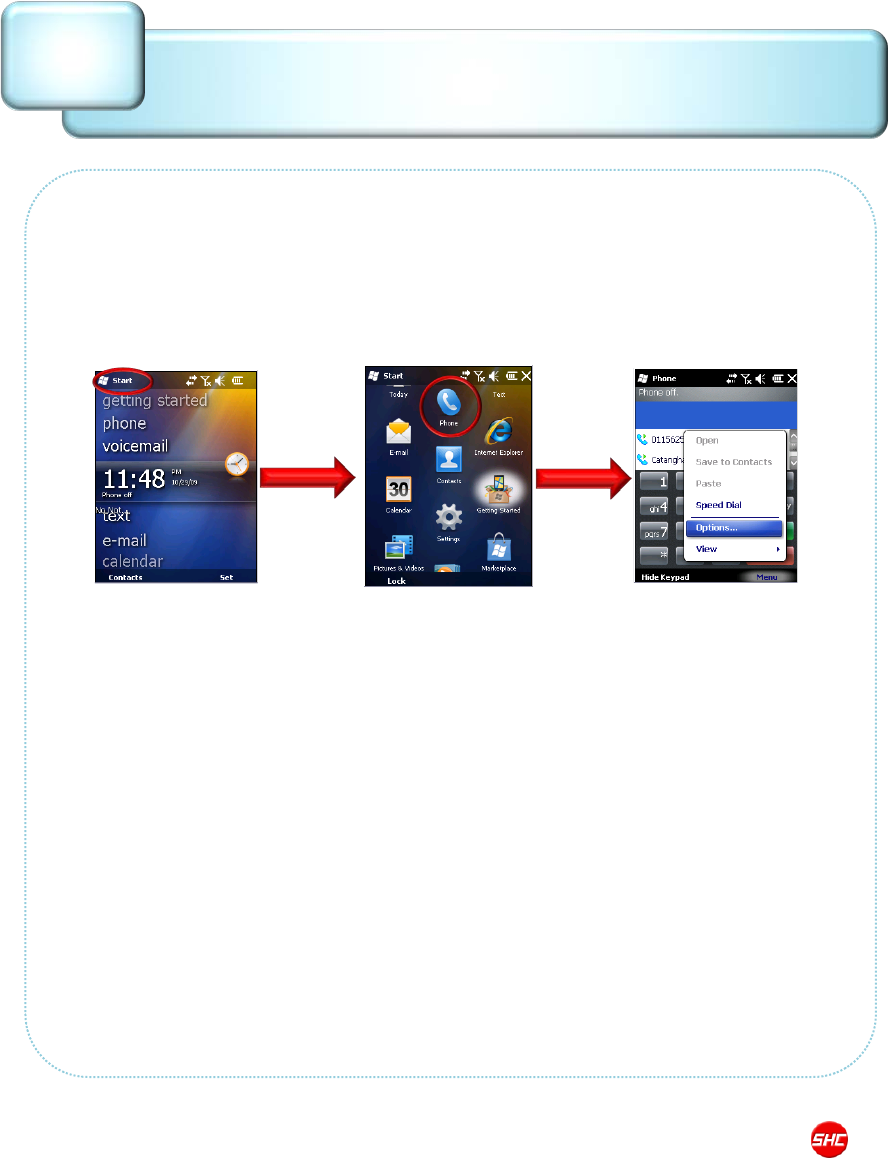
STM-8800 User Manual 2009 Copyright © Shinheung Precision Co., Ltd
Preferences
61
▶ Set up call options
You can set up call options for your device. This includes ring type, ring
tone, and a PIN that must be entered to use the phone.
1. Tap Start > Phone.
2. Tap Menu > Options > Phone tab.
3. Change the options as appropriate, and then tap OK.
Ⅴ-10
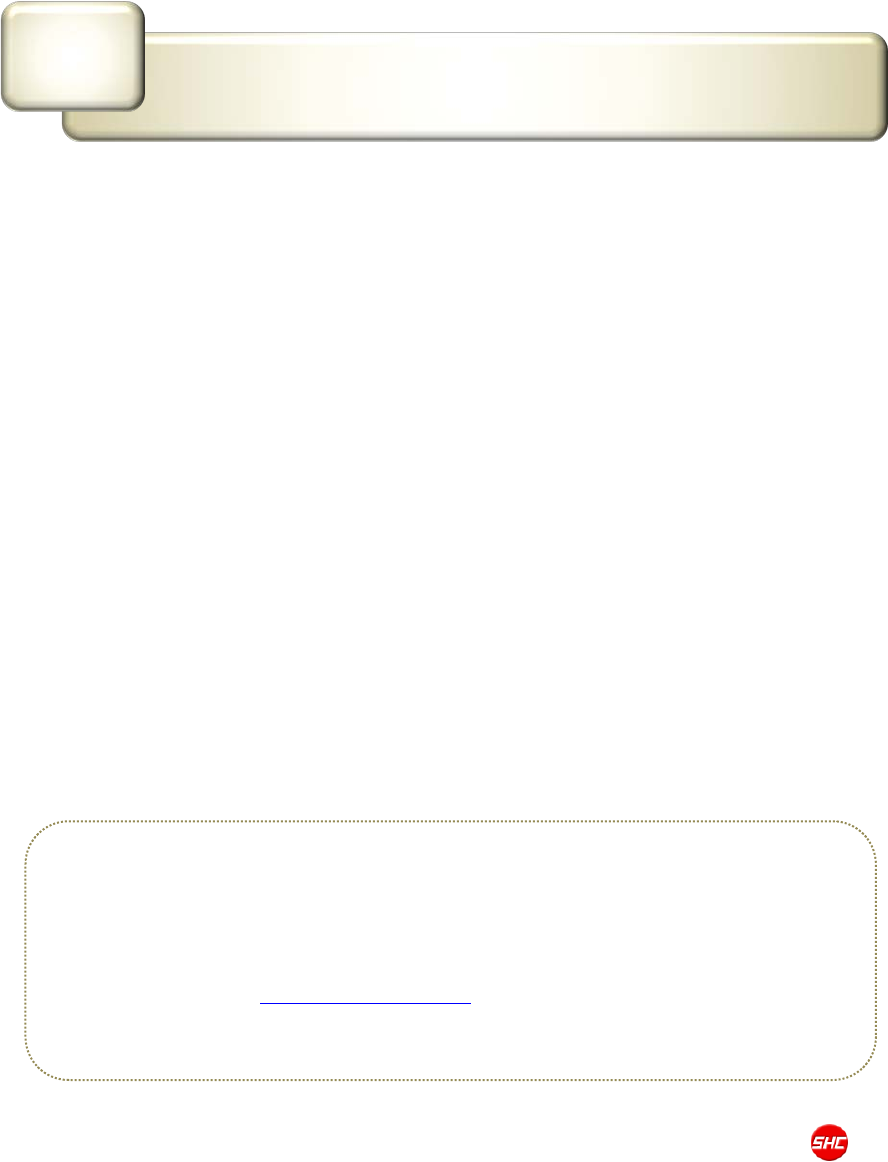
STM-8800 User Manual 2009 Copyright © Shinheung Precision Co., Ltd
PC connection
VI
Using Microsoft ActiveSync, you can synchronize the information on your personal computer
with information on your STM-8800. Synchronization compares the data on your PDA with
your personal computer and updates both devices with the most recent information. To
establish a partnership with a PC, you need to install Microsoft ActiveSync on your PC. You can
download ActiveSync at www.microsoft.com/korea.
62
1. Microsoft ActiveSync installation
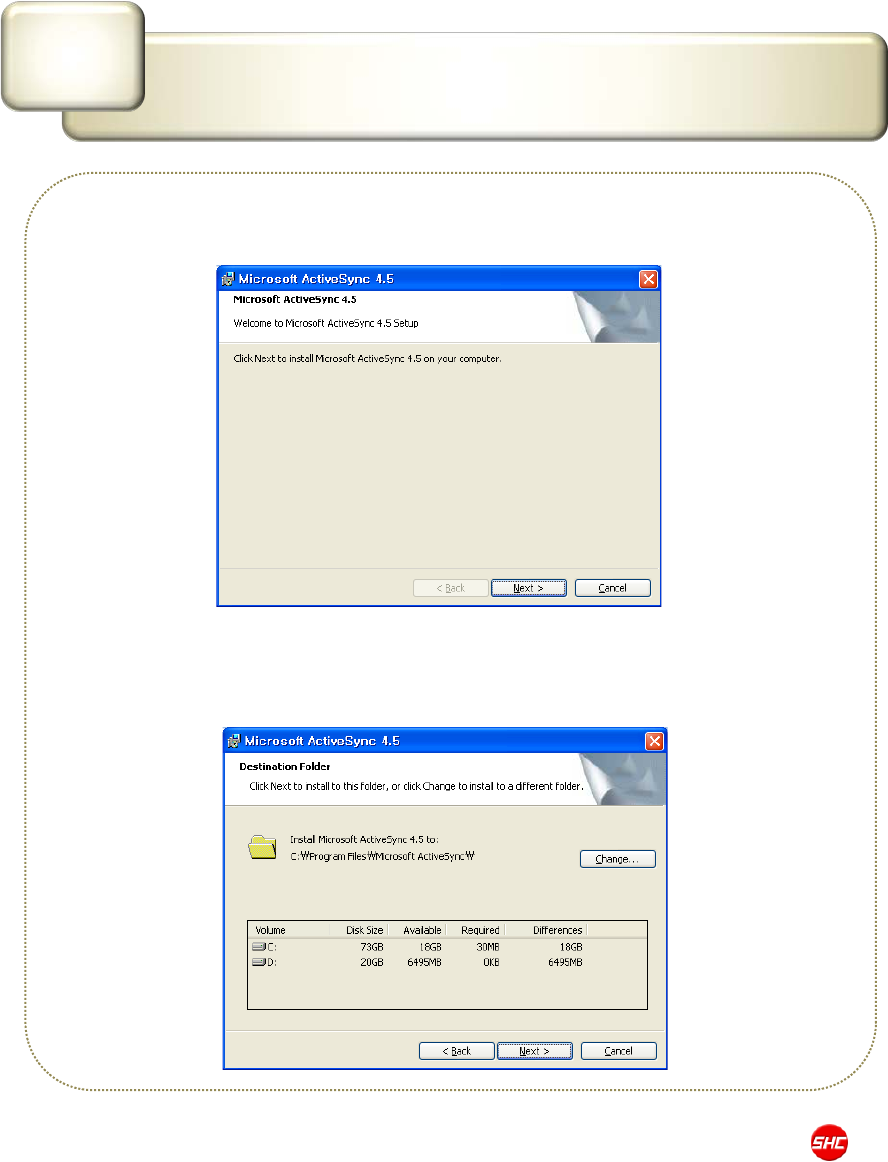
STM-8800 User Manual 2009 Copyright © Shinheung Precision Co., Ltd
Microsoft ActiveSync installation
VI-1
1. Download and run the Active Sync installation program. Please click the
[Next] button if you are ready to Set-up ActiveSync.
2. You’re prompted to select the installation folder for ActiveSync. Click the
[Next] button to install ActiveSync to the default folder, or click the
[Change] button to select a different destination for the program.
63
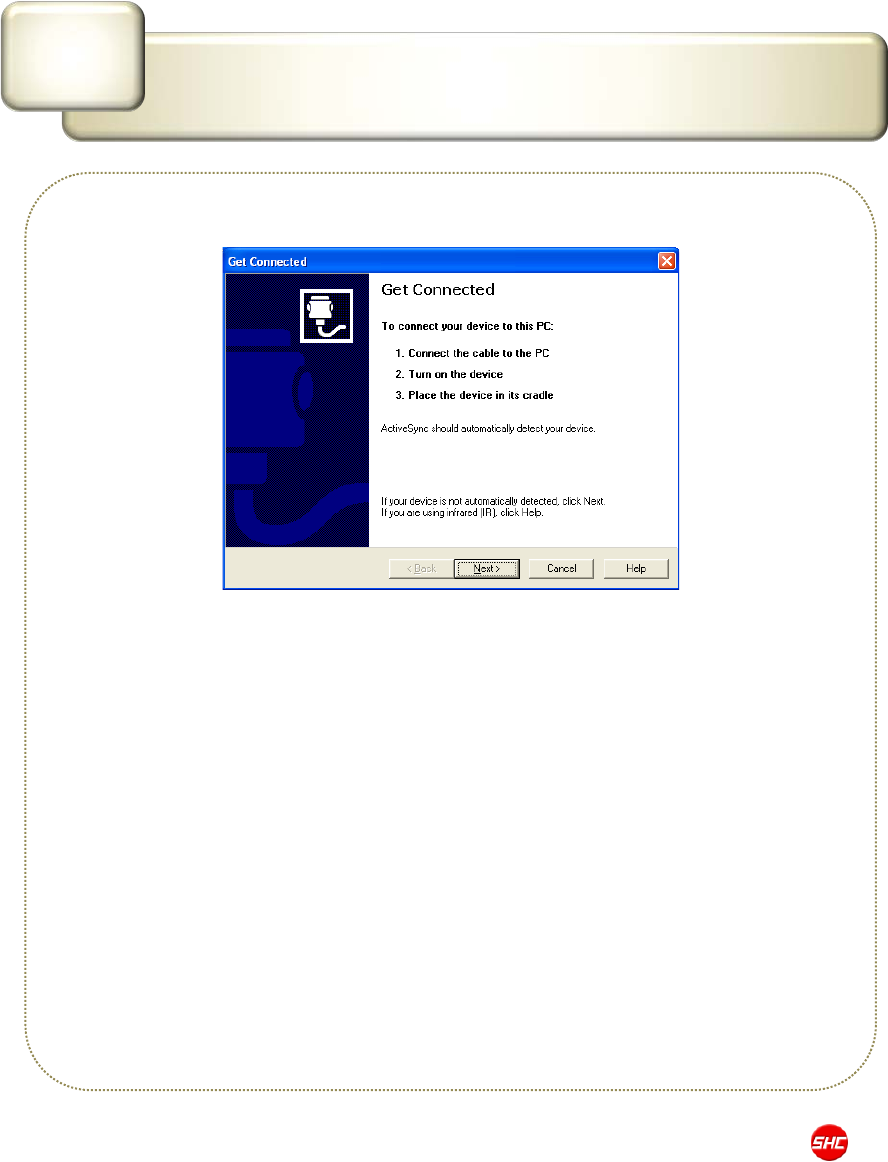
STM-8800 User Manual 2009 Copyright © Shinheung Precision Co., Ltd
Microsoft ActiveSync installation
VI-1
3. Click on the [Next] button.
4. ActiveSync installation is finished. Please turn on and put the STM-8800
unit on to the cradle with USB cable connected to the PC. (use USB 2.0
or higher)
64
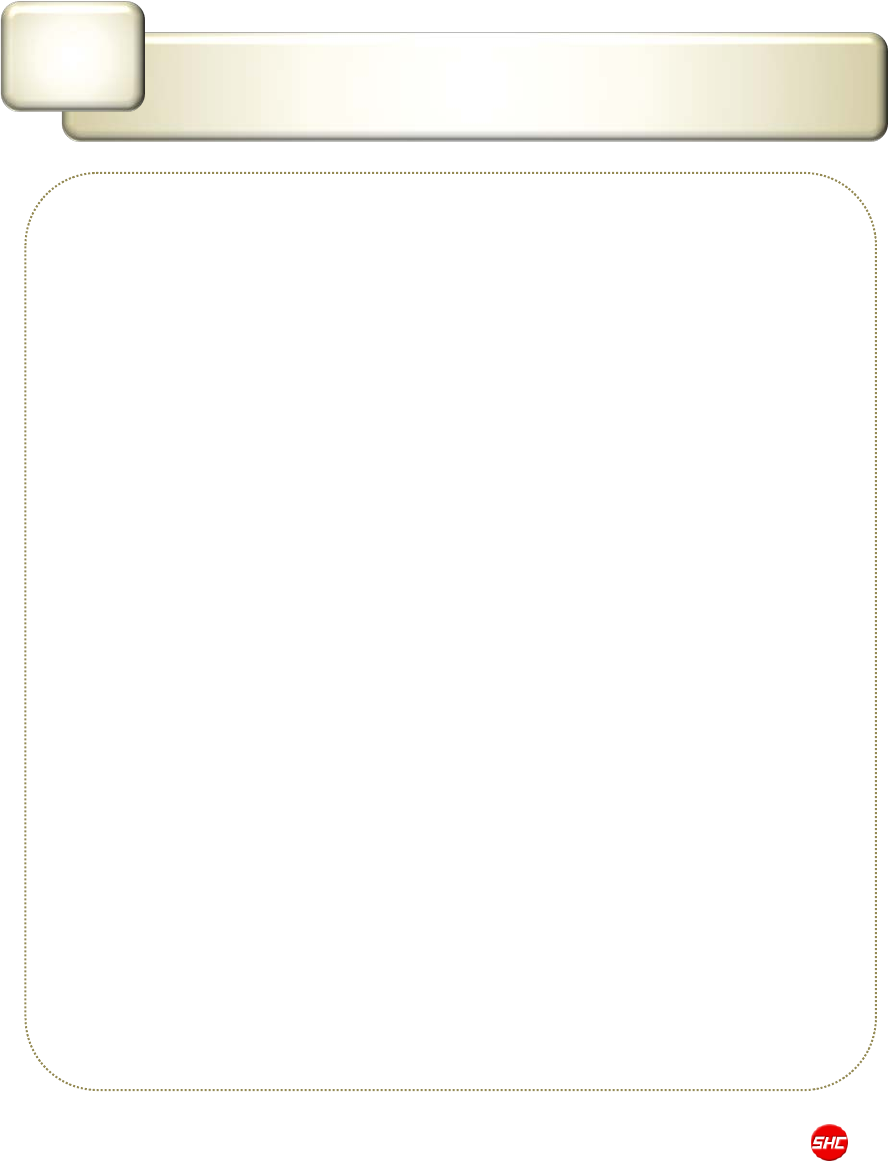
STM-8800 User Manual 2009 Copyright © Shinheung Precision Co., Ltd
Connect to a PC to install the program
VI-2
▶ Using ActiveSync for program installation
▷ Using the Installation programs (Setup.exe or Install.exe)
1. Download the installation program to the PC or insert the installation CD
in the PC’s CD drive.
2. Connect the Mobile Device to the PC via ActiveSync.
3. Locate for and double-click on the installation program (Setup.exe or
Install.exe) on the PC.
4. Files will be automatically copied to the Mobile Device through
ActiveSync.
▷ Using the *.cab files
1. Download the installation program to the PC or insert the installation CD
in the PC’s CD drive.
2. Connect the Mobile Device to the PC via ActiveSync.
3. Using ActiveSync’s Explore function in the PC, copy and paste the *.cab
files to any folder (My Documents/Program Files) in the Mobile Device.
4. From the Mobile Device, double-click on the copied *.cab file. This
process will install the program to the Mobile Device.
-Reference-
1) Always consult the Read Me file or other related documents to verify if
all required files are copied.
2) Consult the ActiveSync Help for more information on how to copy files
using the ActiveSync.
65
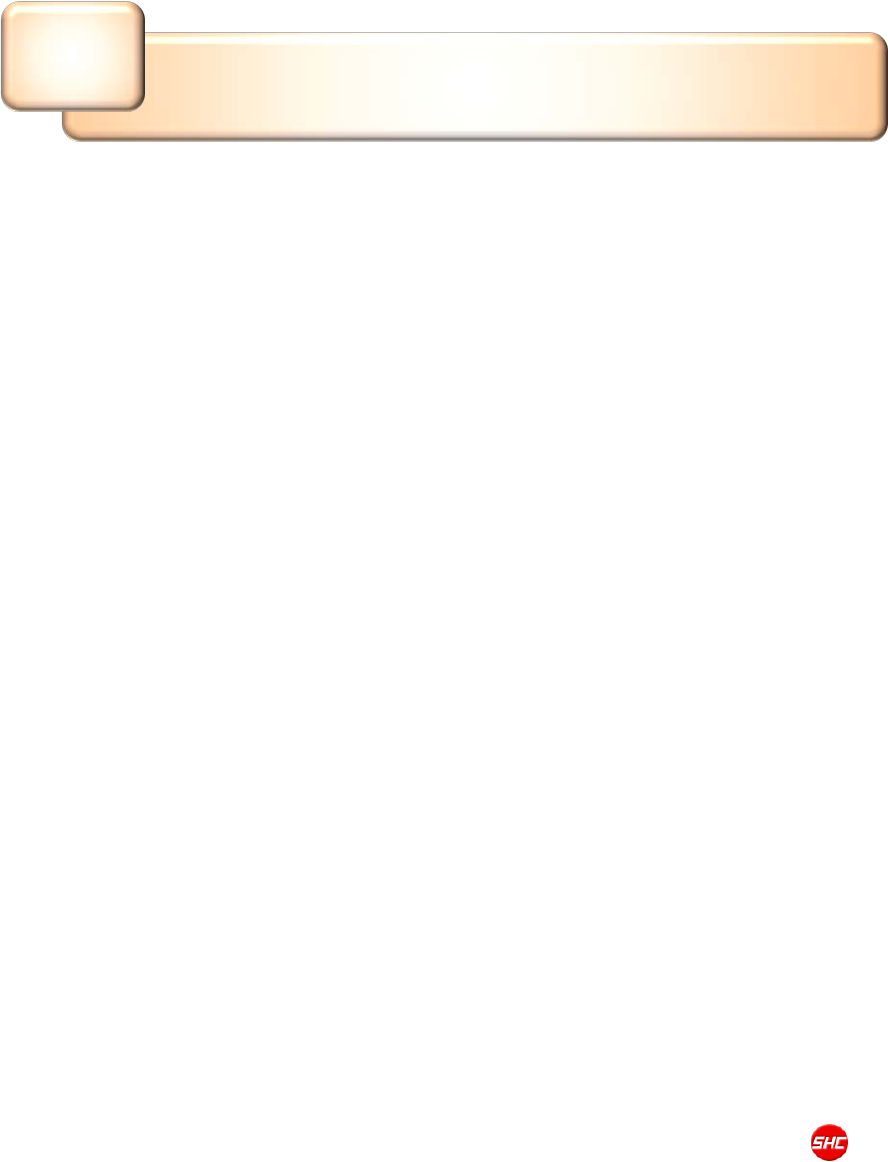
STM-8800 User Manual 2009 Copyright © Shinheung Precision Co., Ltd
Appendix
VII
66
1. Troubleshooting
2. Initialize to factory default
3. Terminal maintenance
4. Product specifications
5. Others
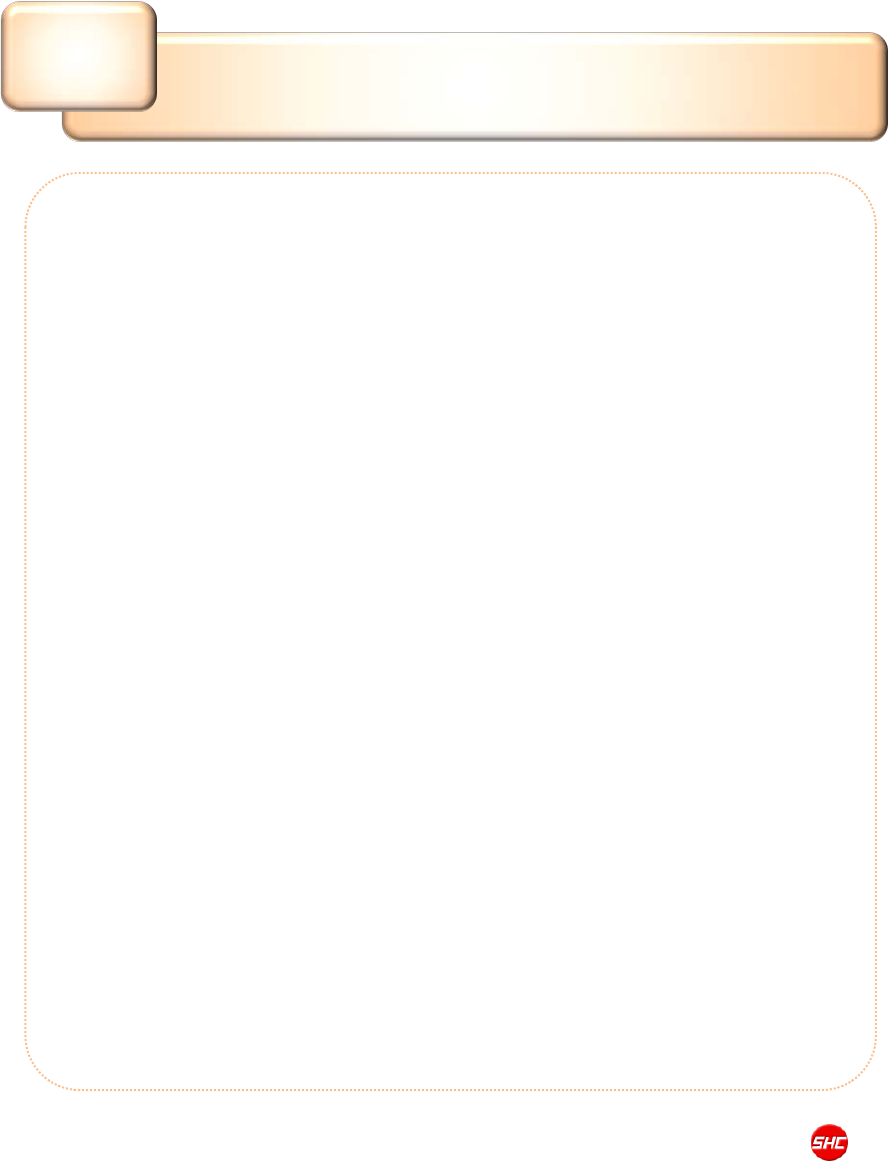
STM-8800 User Manual 2009 Copyright © Shinheung Precision Co., Ltd
The following are the common problems encountered while using the
Mobile Device.
▶ Troubleshooting
Included in this chapter are solutions to the common problem listed herein.
▷ Problem Analysis and Solution
Q1. The device would not turn ON even when connected
to external power source.
First, make sure that the external power source has the correct voltage. If it does
have the correct voltage, make sure that the battery power is not fully drained.
Fully drained batteries can cause power, even from external sources, to be temporarily
interrupted. (Prevent batteries from being fully drained by regularly charging it.)
Q2. Battery Power consumption is too fast.
Turning OFF the backlight when the Mobile Device is not being used (no touch
screen action, tap and scroll, is made) after a specified period of time saves battery
life. See section about Manage Battery Life.
Another way to conserve battery power is by dimming down the backlight. This
could be set in the Brightness window by sliding the horizontal scroll bar towards
the left. See section about Brightness.
For the Battery Power Scheme, switching the Mobile Device state to suspend after a
specified period of time really saves the battery power. This can be configured in
the Power Properties window Schemes tab. Specify the length of idle time before
the Mobile device switches to the state of suspend. See section about Manage
Battery Life.
Troubleshooting
VII-1
67
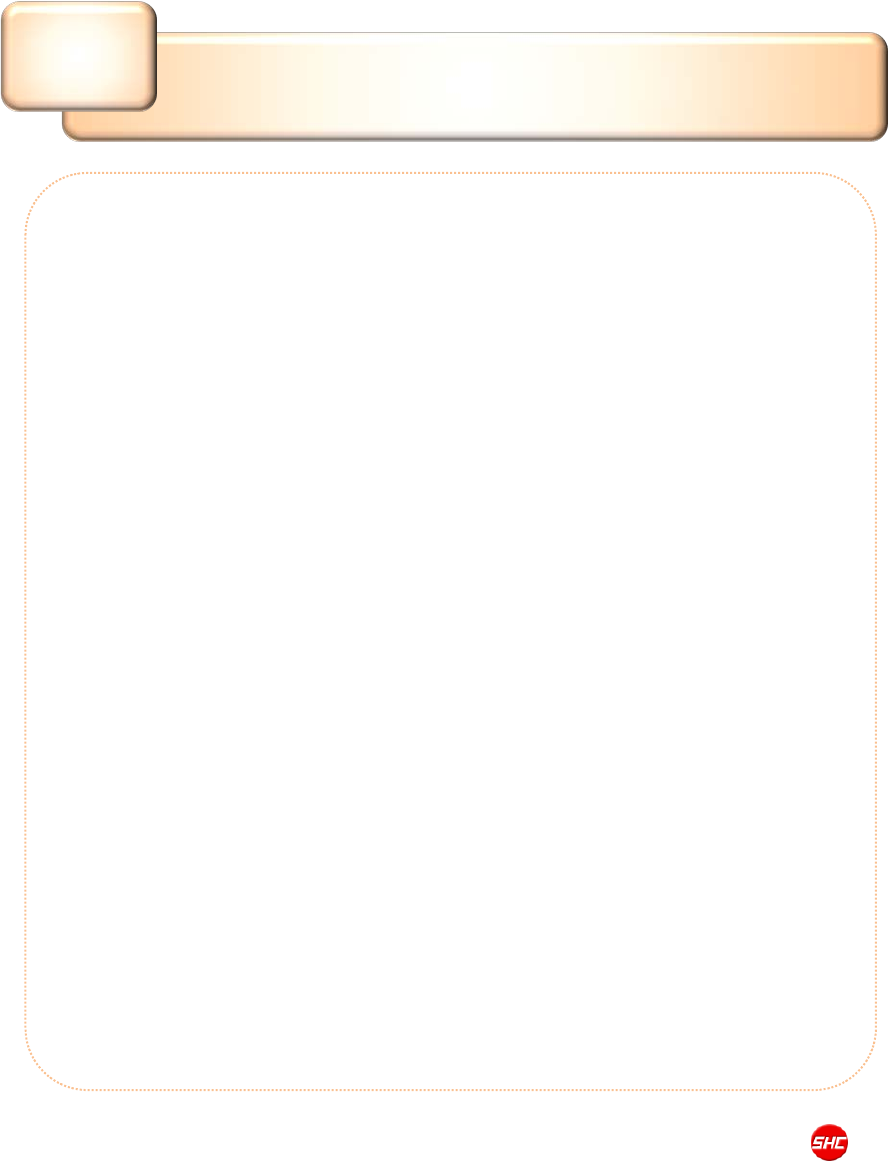
STM-8800 User Manual 2009 Copyright © Shinheung Precision Co., Ltd
Q3. Mobile Device automatically turns OFF.
Make sure that you never run out of power. As soon as you see the dialog box
informing you that “the main battery power is very low” you must charge the
battery immediately. Continued use of the Mobile Device even after being informed
of the battery power level can cause battery failure.
To conserve Battery Power consumption, switching the Mobile Device state to
suspend after a specified period of time is advisable. This can be configured in the
Power Properties window Schemes tab. Specify the length of idle time before the
Mobile device switches to the state of suspend. See section about Manage Battery
Life.
Q4. The Mobile Device would not Turn-ON.
When the Mobile Devices’ battery power is fully drained, the device will not power
ON. Connect the Mobile Device to an External Power source to charge the battery.
If in case the Mobile Device could still not be powered ON after recharging the
battery, try performing a hard reset.
For more information about Hard Reset, .see “VII-2 – Initialize to factory default”
section of this manual.
Q5. Touchscreen - Stylus action does not result to the
desired action.
You may need to recalibrate the touchscreen using the Screen Properties window
Align Screen function.
For more information, .see “IV – Terminal Settings, how to optimize” section of this
manual.
Troubleshooting
VII-1
68
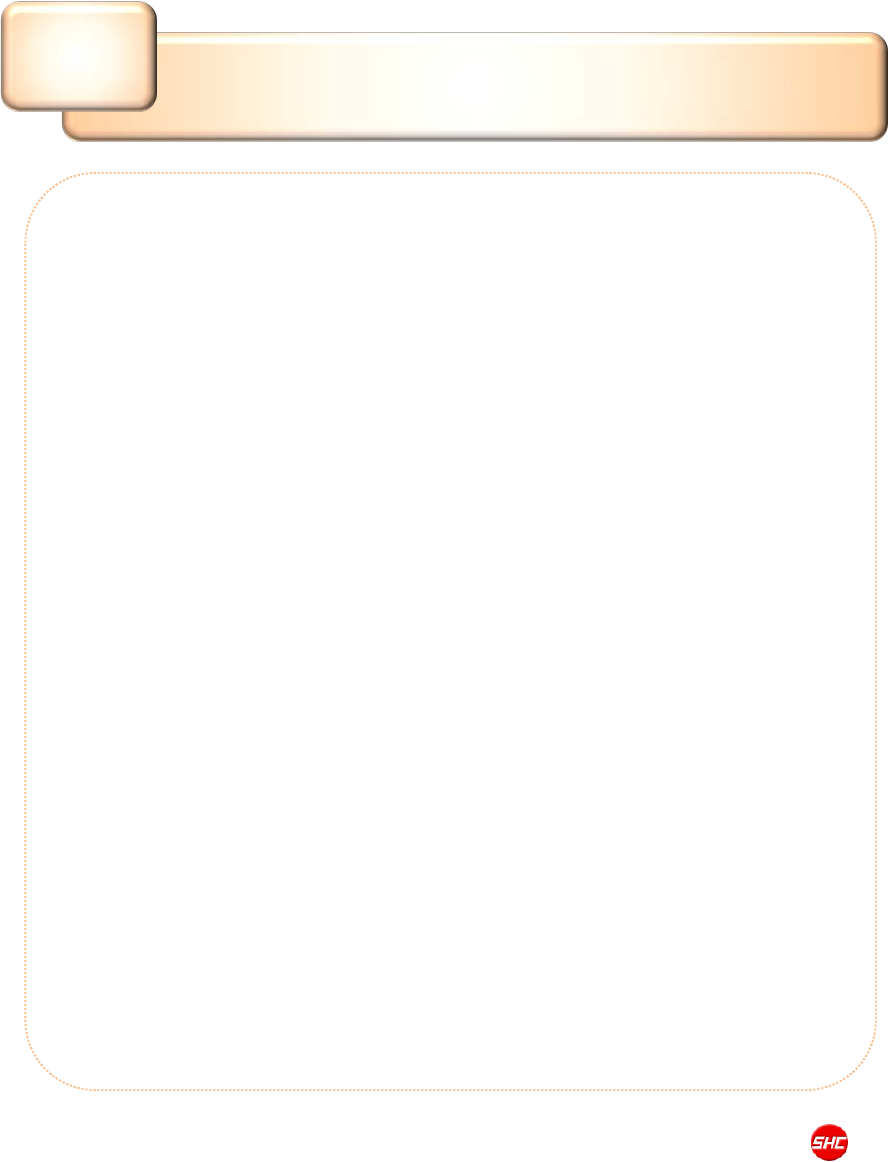
STM-8800 User Manual 2009 Copyright © Shinheung Precision Co., Ltd
Q6. Cannot access the contents of the SD card inserted
into the device.
Make sure that the Micro SD card is inserted properly in the slot allotted for it.
Using the File Explorer, see if a folder called “Storage Card” is present. Access the
contents of the SD card from this folder.
Q7. Data lost.
If the Mobile Device’s Battery power runs out, all information (including those in
the FileBox folder) may be lost except for those information, data and programs
that are present when the Mobile Device was delivered.
It is advisable to periodically backup the Mobile Device and keep the backup file in the
PC or copy important files/information to the PC and/or Micros SD cards where it could
be recovered at a later time to minimize, if not prevent, data lost.
If the solutions provided for each problem does not resolve it, perform a system
reset (as described on Initialization section) or initialize the device back to the
factory default (as described on VII-2, Initialize to Factory default).
For other concerns, please contact our customer service center.
Troubleshooting
VII-1
69
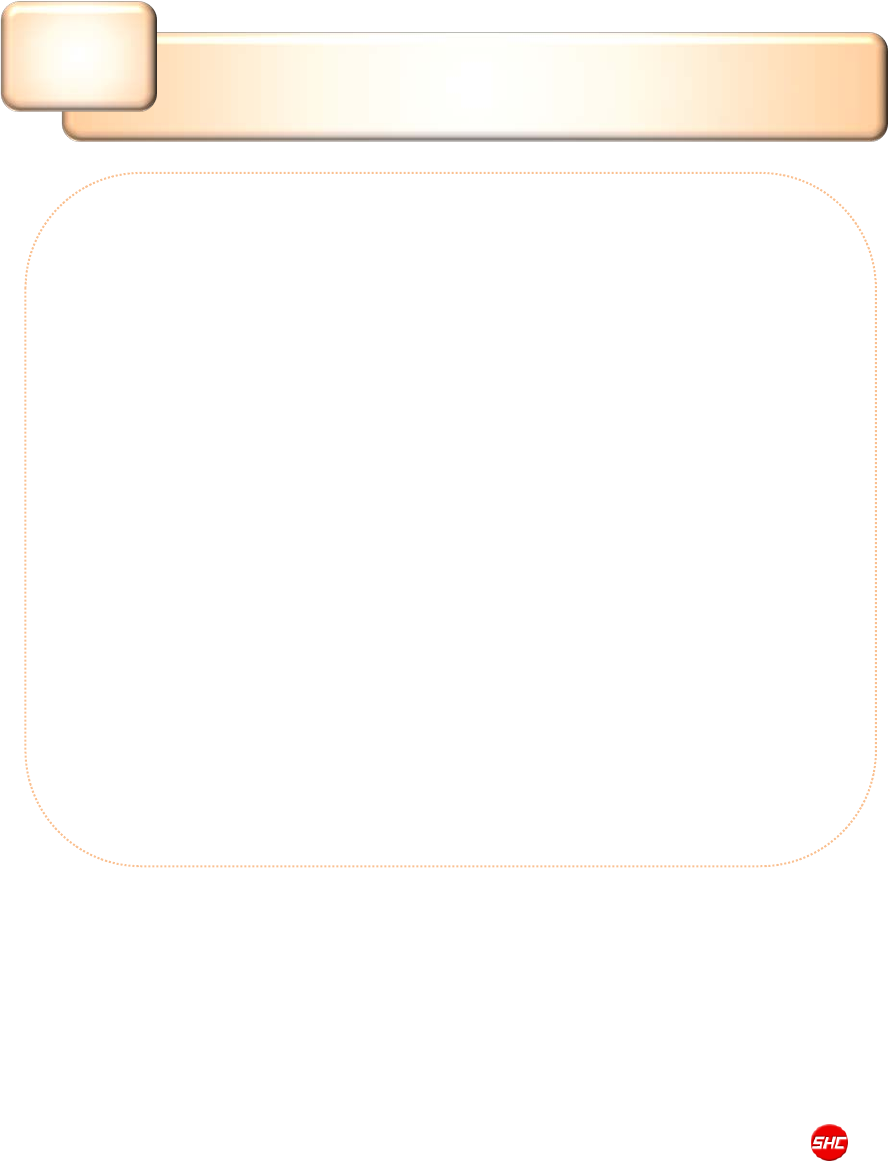
STM-8800 User Manual 2009 Copyright © Shinheung Precision Co., Ltd
▷ Mobile Device – PC Connectivity and Synchronization Issues
Solution to problems when connecting the Mobile Device to the PC
through the cradle or otherwise.
For an updated information on other issues, see the PC’s ActiveSync
help or visit Microsoft’s website for mobile phones
(www.microsoft.com/windows/embedded/ce.net).
•Find out if you need to install the correct PC ActiveSync version.
•Make sure that the Mobile Device is turned ON.
•Make sure that the USB cable is properly connected to the
connectors on both the PC and the Mobile Device/Cradle.
•If the Mobile Device is connected to the PC using the USB cable,
make sure that ActiveSync is configured for this type of connection.
Verify this setting in ActiveSync’s Connection Settings window (File >
Connection Settings …). Make sure that the option “Allow USB
connection” is checked.
•Connections between the Mobile Device and PC using USB cable
needs the PC’s ActiveSync program. Consult the ActiveSync Help for
more information.
•Before restarting the PC, it is advisable to disconnect the Mobile Device
from the PC first.
•Please connect one Mobile Device at a time to a PC.
Troubleshooting
VII-1
70

STM-8800 User Manual 2009 Copyright © Shinheung Precision Co., Ltd
▶ Initializing the Mobile Device back to the factory default settings
(Hard Reset)
There are many possible reasons why the Mobile Device has to be
reinitialize back to the factory default setting, like, when the device
would not respond even after performing a reset or the user forgets the
password set on the system. This process is called “Hard Reset.” When
performing hard reset, all information in the RAM (files, system settings,
installed programs) will be cleared.
To insure the safety/integrity of the information, make a backup or make
a copy of it in the SD card before performing a hard reset. Restore the
information after the hard reset process to recover the information.
As said earlier, all information stored in the Mobile Device’s RAM will be
cleared after performing a hard reset. However, it is possible to recover
information backed up to the PC, SD card or the Web folder
To perform a Hard Reset:
1. Remove the Mobile Device form the cradle.
2. While holding down the [Left Up]-[Left-Down]-[Right-S] buttons, poke
the reset key using the Stylus pen.
3. Wait until the Mobile Device re-starts.
Initialize to factory default
VII-2
71
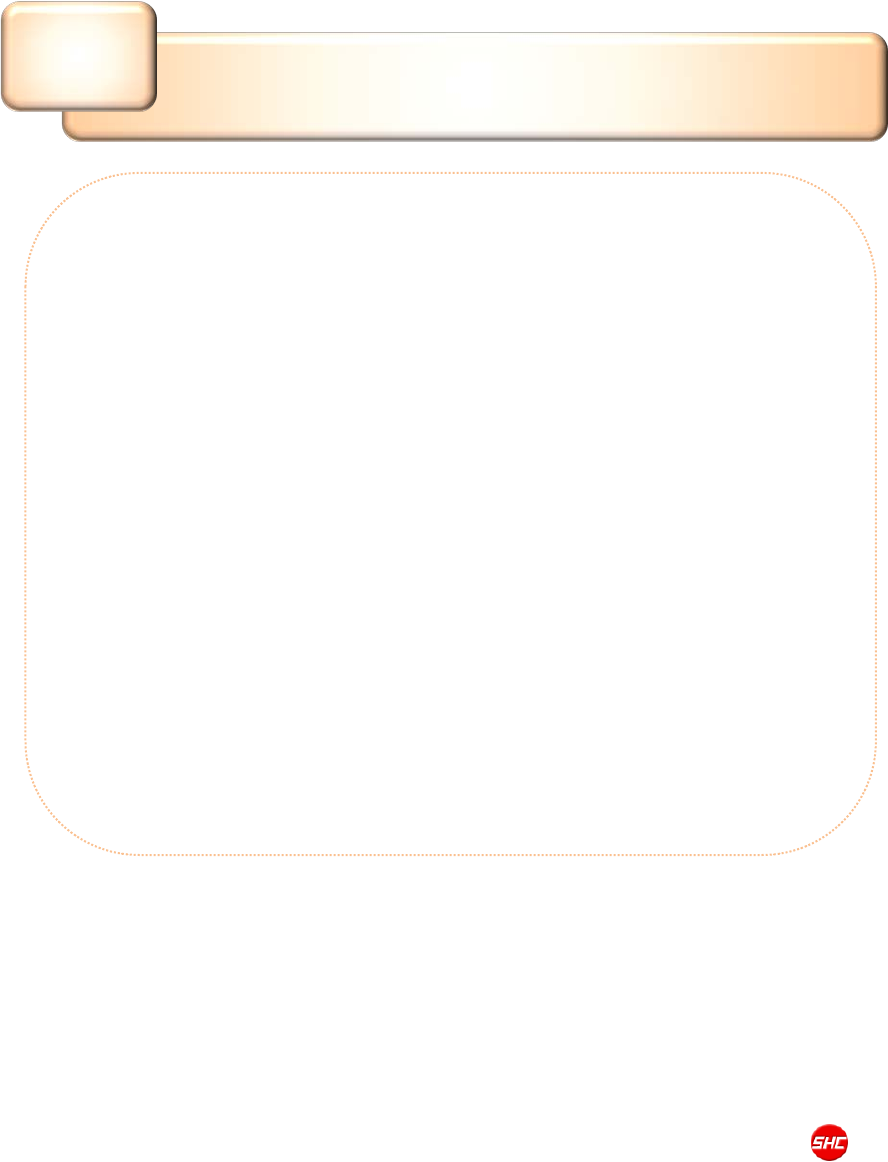
STM-8800 User Manual 2009 Copyright © Shinheung Precision Co., Ltd
▶ Information on the Mobile Device Maintenance
To be able to extend the life cycle of the Mobile Device, please consider
the following advices:
•Before cleaning the touchscreen, power off the Mobile Device.
•Use small amount of glass cleaner on a soft cloth when cleaning the
touchscreen.
•Do not spray the glass cleaner directly on the touchscreen.
•Use cotton swabs or soft cloths when cleaning the battery/charging
terminals.
•Using chemicals in cleaning can damage the exterior of the Mobile
Device.
•Extended usage can heat up the Mobile Device. This is not advisable.
Terminal maintenance
VII-3
72
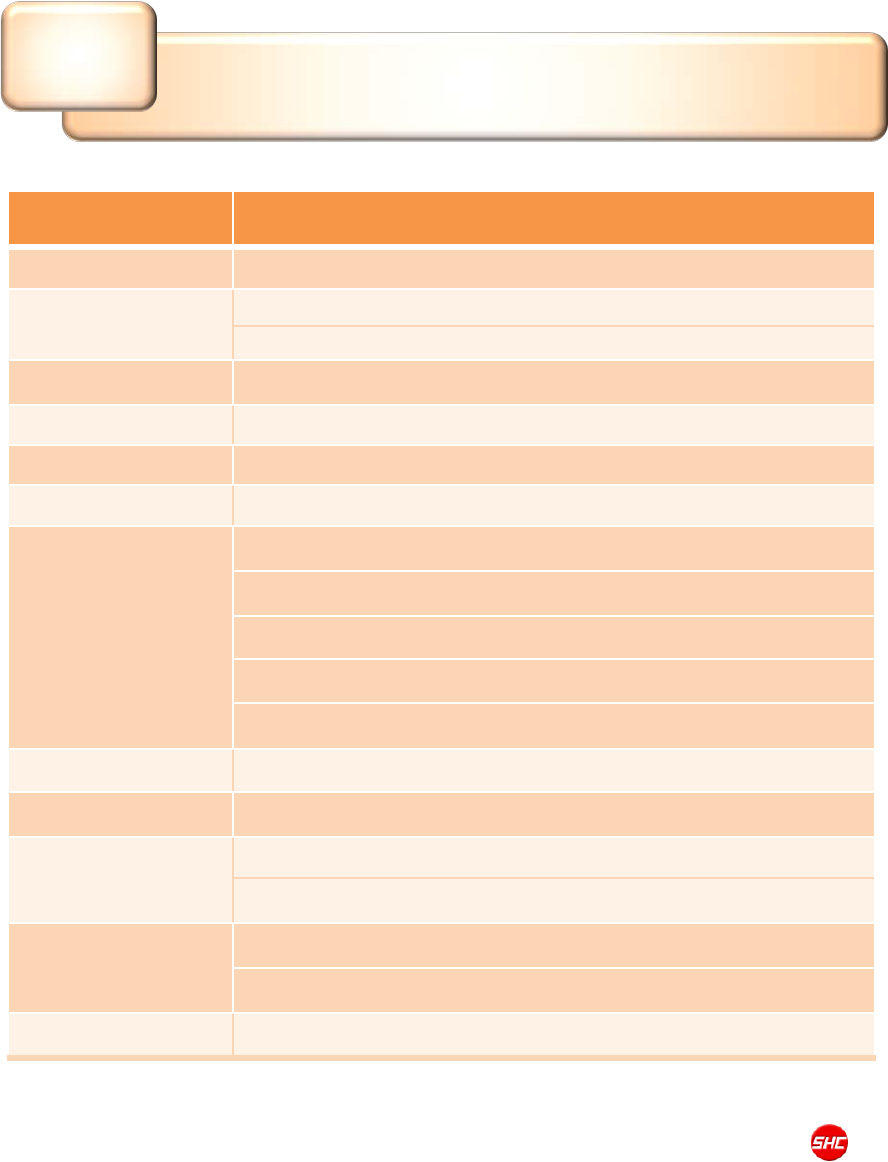
STM-8800 User Manual 2009 Copyright © Shinheung Precision Co., Ltd
Product specifications
VII-4
73
SECTION SPECIFICATION
CPU Samsung s3c6410, 800MHz
Memory Flash Memory NAND Flash 8Gb (1GB)
256MB Mobile DDR SDRAM
OS Microsoft Windows Phone 6.5 Professional
Display 240X320 3.5” TFT LCD with Touch Screen, 260K Color (QVGA)
Keypad Numeric Keypad, 4 buttons (Up, Down, Camera, Scanner)
Audio AC97, 1 speaker, 1 ear-jack, 1 microphone
Communications
WWAN Wavecam 3G(WCDMA) Modem – Q26Extreme
WLAN (IEEE 802.11 b/g)
WPAN Bluetooth class 2, v1.2
GPS: Integrated SiRF Star 3
Antenna (Intenna)
Scanner 1D Motorola Laser scanner (SE955)
Camera 2.0 Mega Pixel, Flash LED
Battery Main: Li-Ion Polymer Battery 2100mAh
Backup: 3.0V, 120mAh
Expansion 1 SD Card Slot
USB Client for Sync (US 1.1 – USB Charging available)
Indicator 2 LEDs (Charging, Notification); Vibrator
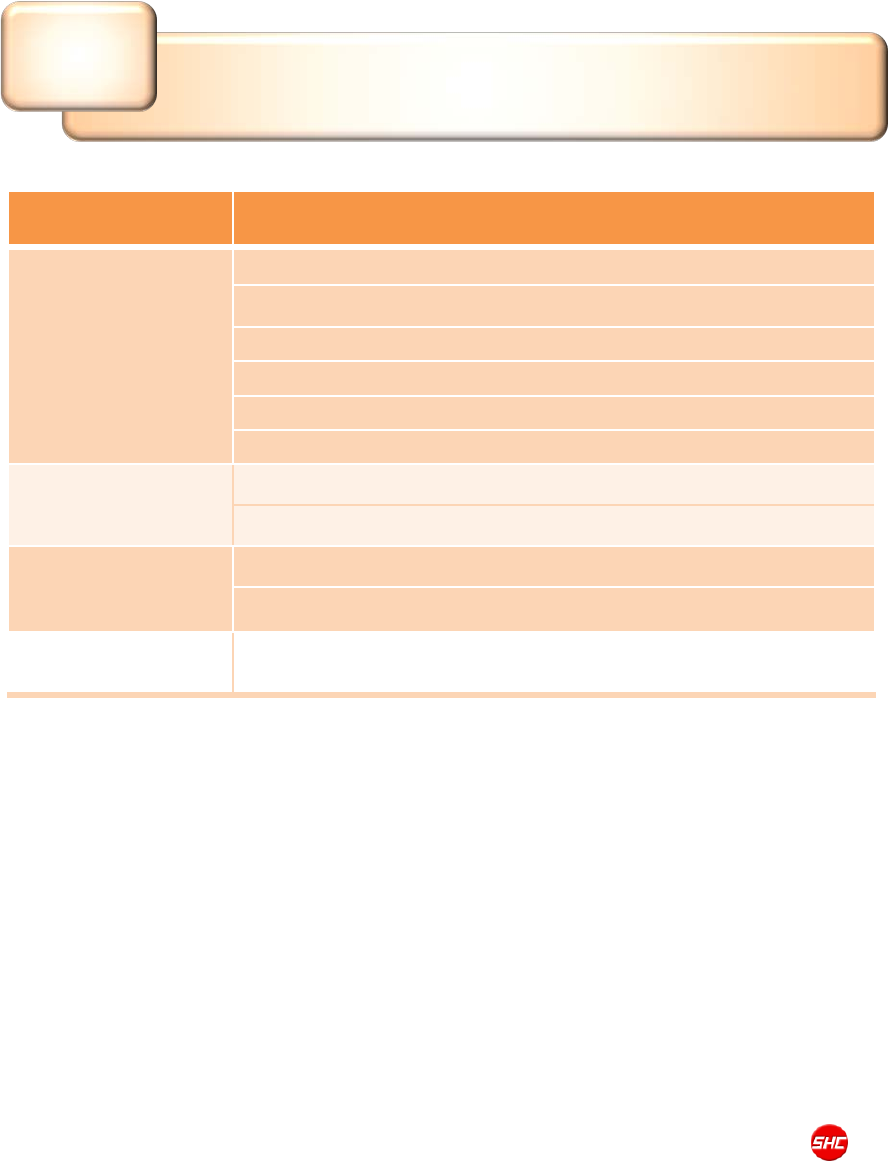
STM-8800 User Manual 2009 Copyright © Shinheung Precision Co., Ltd
Product specifications
VII-4
74
SECTION SPECIFICATION
Management
Condition
(Environment)
Drop Test : Withstands 1.5m – 6 sides - concrete
IP54
Operating Temperature : -10 ~ 50℃
Storage Temperature : -40 ~ 70℃
Humidity: 5 to 95% non-condensing
ESD: ±15KV Air / ±8KV Direct
Physical
Characteristics
Dimension: 77.4(W); 160.5(L); 26.9(H)
Weight: 292 g (including battery)
Cradle USB 2.0 Host / Client
DC Jack
Accessories
(Option) Vehicle Cradle, Car charger
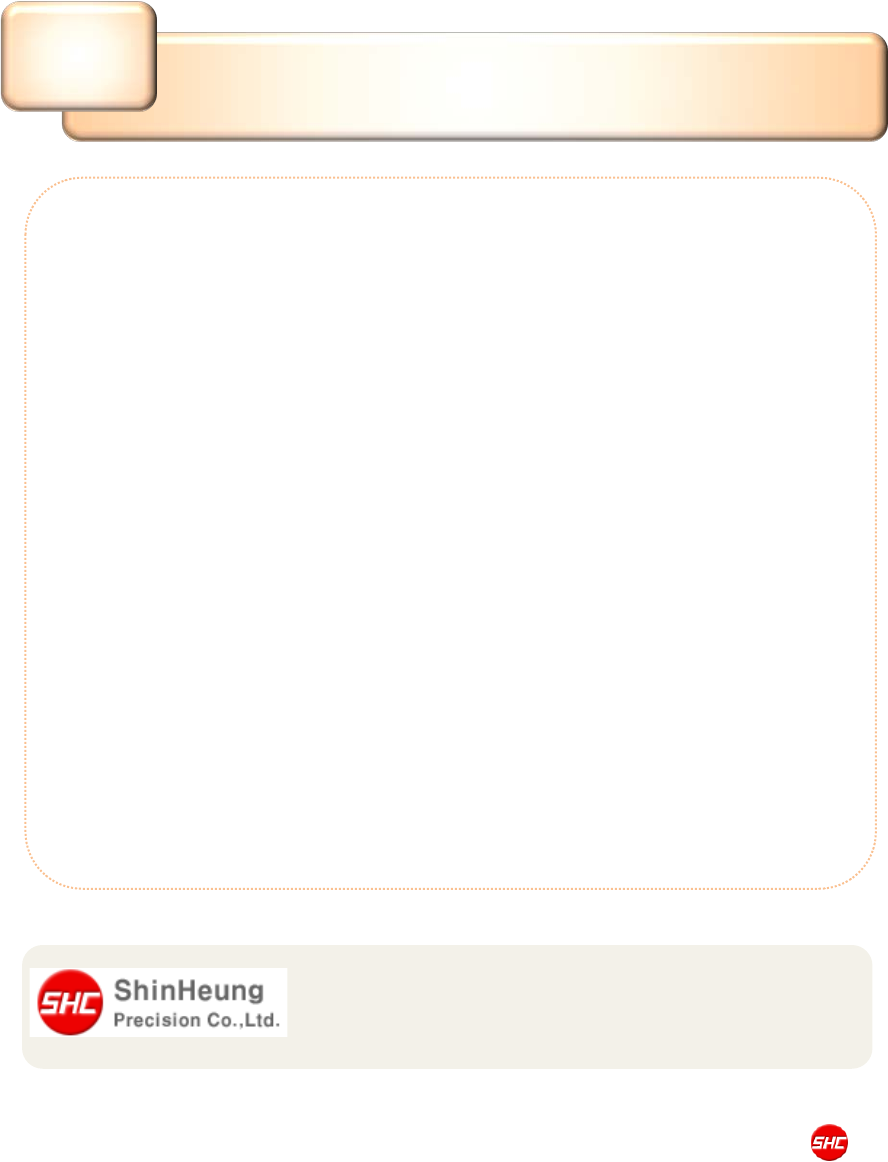
STM-8800 User Manual 2009 Copyright © Shinheung Precision Co., Ltd
※ Certification Information
1. Name of Device: Wireless Data Device
2. Model:STM-8800
3. Certification Information: KCC, CE, FCC Certifications
4. Certified for: Shinheung Precision Co., Ltd.
5. Manufacturer (Country of Origin): Shinheung Precision Co., Ltd. (Korea)
Instructions to users
The Mobile Device has been certified to emit acceptable amount of
electromagnetic wave. However, the manufacturer strongly advise that users
should still exert a high level of care when using the Mobile Device.
Since the Mobile Device is using the wireless technology, the security of
information cannot be guaranteed by the manufacturer. Users should take
necessary precautions to safeguard their information.
Environmental factors, 3rd party application programs and accessories, and
other related concerns may affect the performance of the Mobile Device.
This is beyond the control of the manufacture and thus excluded in the Mobile
Device’s warranty/guaranty statements.
※ Contents of this manual (options, model, version, images) may vary from
the actual Mobile Device.
Others
VII-5
75
Shinheung Precision Co., Ltd.
7rd Floor JEI Platz Bldg., Gasan-dong
Geumcheon-gu, 153-792 Seoul, Republic of Korea
TEL: 02) 6749-4700 FAX: 02) 6749-4699
Body-worn Operation
This device was tested for typical body-worn operations with the back of the device kept 0 cm
between the user’s body and the back of the device.
To comply with FCC RF exposure requirements, a minimum separation distance of 0 cm must be
maintained between the user’s body and the back of the device.
Third-party belt-clips, holsters, and similar accessories containing metallic components may not be
used. Body–worn accessories that cannot maintain 0 cm separation distance between the user’s
body and the back of the device, and have not been tested for typical body-worn operations may
not comply with FCC RF exposure limits and should be avoided.
